Chair News
 | 1 June 2021, Dr. Ulrich Eck and Dr. Thomas Wendler promoted to Vice-Directors of the Chair Following an internal restructuring and as acknowledgment for the hard work over the last years and the carried responsibility, Prof. Navab decided to promote Dr. Ulrich Eck and Dr. Thomas Wendler to Vice-Directors of the Chair. Ulrich, who joined our team in 2016, is the managing the Chair's NARVIS lab at Klinikum Innenstadt. Thomas, who came back to the Chair in 2019 after 12 years in industry, manages the Interdisciplinary Research Lab at Klinikum rechts der Isar. Both also are pillars for the Chair in teaching, co-supervision of Ph.D. candidates, and grant managing. |
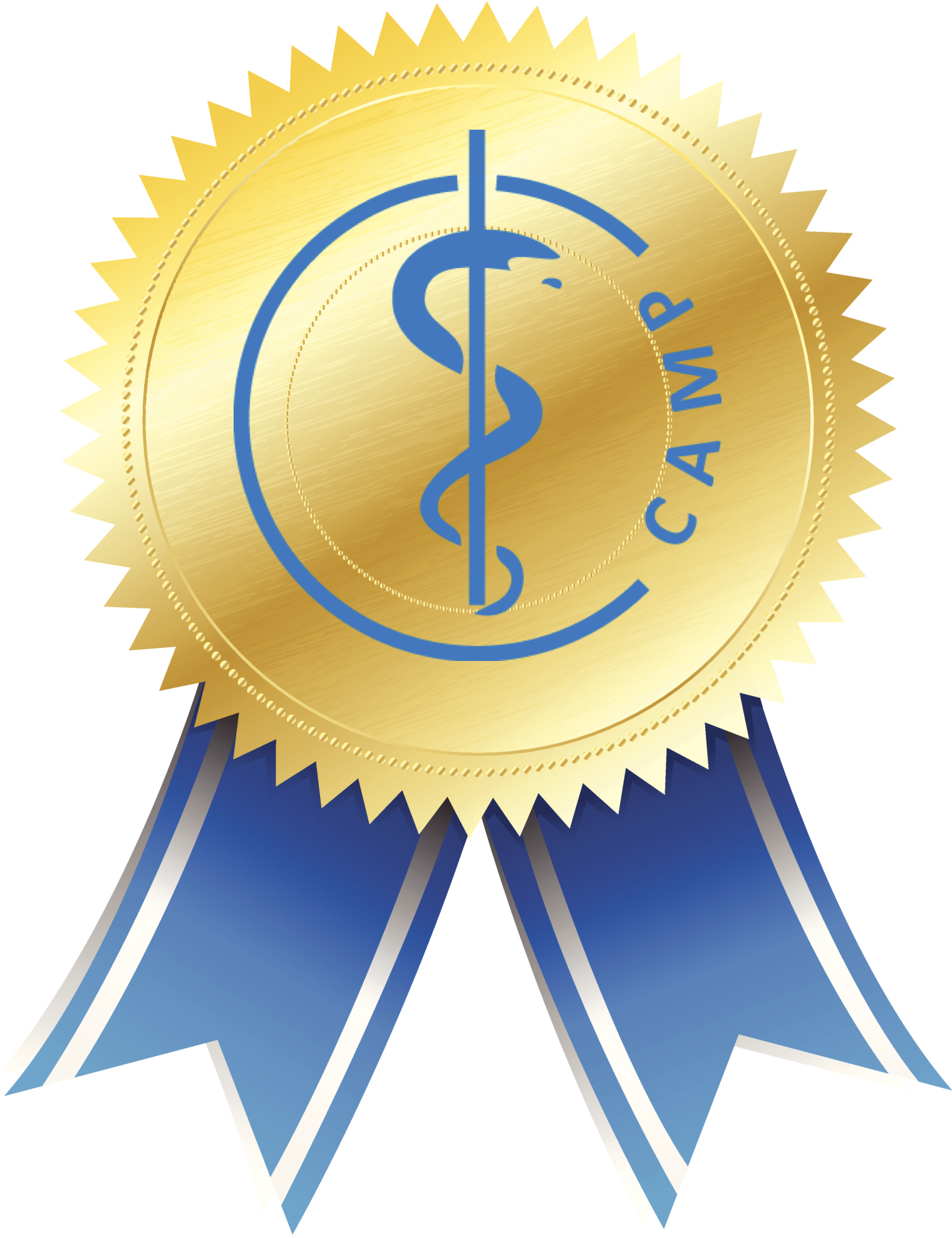 | 15 January 2021, CAMP offers up to 5 International Undergraduate Excellence Awards in 2021 to the best international undergraduate applicants The Chair for Computer Aided Medical Procedures (CAMP) is offering up to 5 research awards to strongly motivated international undergraduate students interested in improving their research skills in machine learning, medical imaging, computer vision, and augmented reality&. The students are required to pursue their undergraduate studies outside Germany. The first two awards amount to 4500 Euros and the second three awards to 4000 Euros. These awards will provide financial support for the awardees during their research stay at CAMP for a period of up to three months between June 2021 and October 2021. |
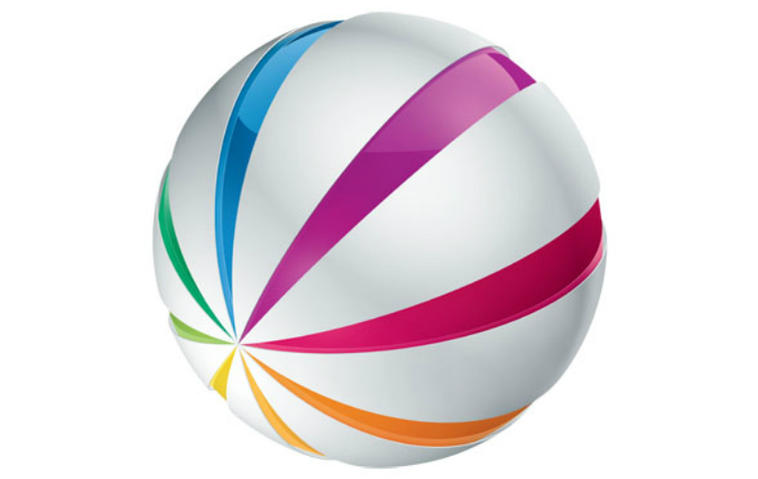 | 28 December 2020, IFL SAT.1 Bayern feature on CAMP’s projects against COVID SAT.1 Bayern features a reportage on the efforts of the CAMP Chair in collaboration with the Radiology of Klinikum Rechts der Isar to fight COVID-19 and equip physicians with solutions that could further be useful for future pandemics. |
 | 5 December 2019, CAMP offers up to 5 International Undergraduate Excellence Awards in 2020 to the best international undergraduate applicants The Chair for Computer Aided Medical Procedures (CAMP) is offering up to 5 research awards to strongly motivated international undergraduate students interested in improving their research skills in machine learning, medical imaging, computer vision, and augmented reality&. The students are required to pursue their undergraduate studies outside Germany. The first two awards amount to 4500 Euros and the second three awards to 4000 Euros. These awards will provide financial support for the awardees during their research stay at CAMP for a period of up to three months between June 2020 and October 2020. |
 | 4 December 2019, FMI-Building, Room 01.06.020 PhD Defense by Aslı Okur Kuru Radioguided surgery is a well-established clinical discipline. However, the devices or systems are not necessarily optimized for the particular needs of the target clinical application. This thesis addresses several challenges associated with the deployment of new technologies or concepts for radioguided surgery in different clinical scenarios on the concrete example of Freehand SPECT, a novel 3D nuclear imaging and navigation system. This includes the analysis of the clinical workflow, definition of the supporting functions of the technology and its modification towards integrated applications. |
 | 13 November 2019, FMI-Building, Room 00.12.019 PhD Defense by Marco Esposito In this dissertation, we explore innovative techniques for intraoperative medical imaging. First, we augment ultrasound-guided needle biopsy with functional information provided by a collaborative robotic arm holding a gamma camera. We evaluate its effectivness for sentinel lymph node biopsy in the axilla. Second, we propose a novel Riemannian regularization method for decreasing the jitter present in the output of electromagnetic tracking systems, which are standard for freehand 3D ultrasound. |
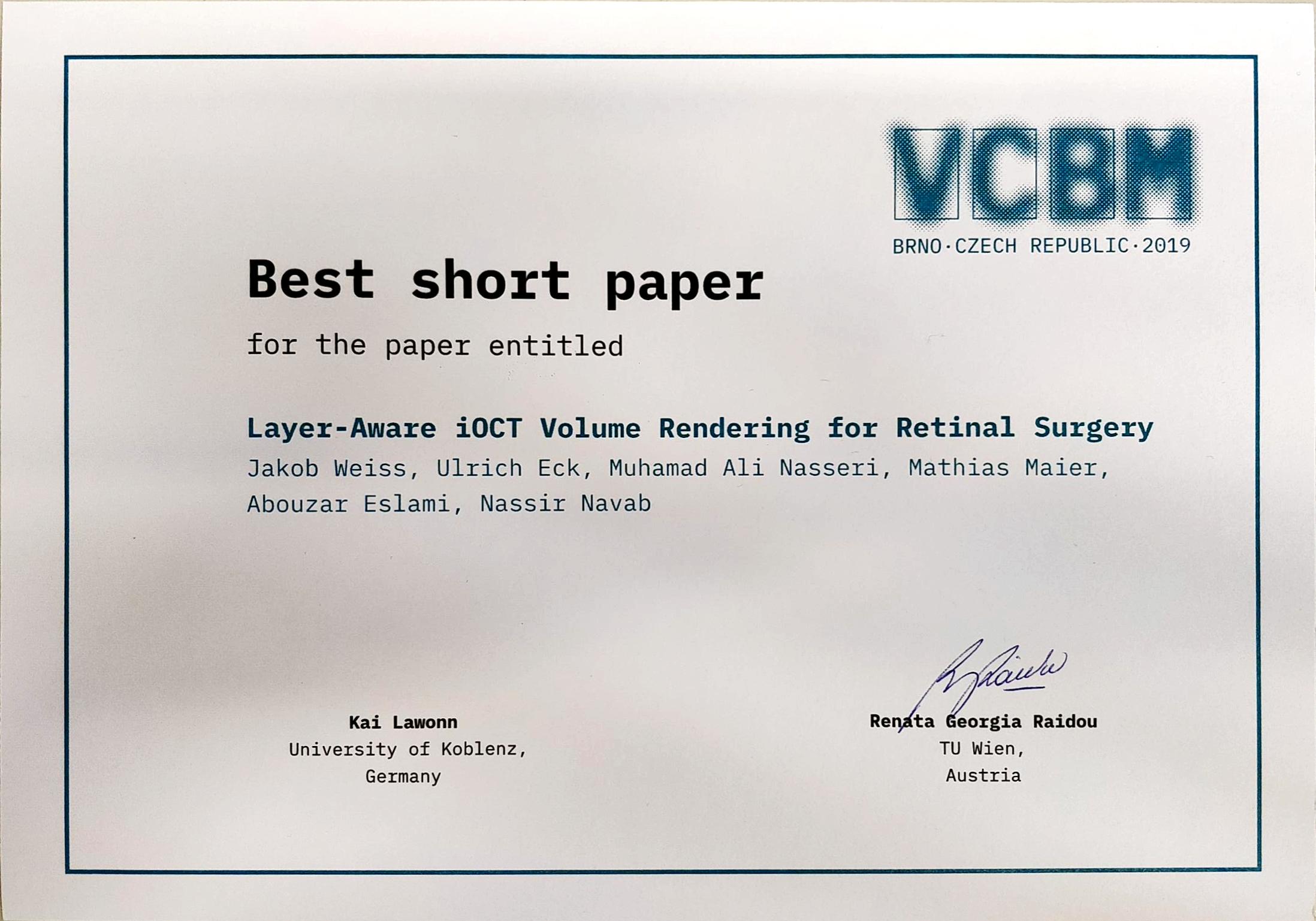 | 6 September 2019, Brno, Czech Republic Best Short Paper Award VCBM 2019 We are very proud to announce that our current PhD? candiate Jakob Weiss was honored with the VCBM 2019 Best Short Paper award. |
 | 28 June 2019, NARVIS Medical Augmented Reality Research was featured in the ARD Documentary “W - Wie Wissen” Analogue reality and digital virtuality have long since merged. Or better: They complement each other - in augmented reality. An area that is also highly interesting for medicine. |
 | 28 June 2019, NARVIS Magic Mirror for Anatomy Teaching was featured in the BBC Arabia Documentary “BBC 4Tech” The NARVIS Magic Mirror supports anatomy education of medical students with the help of monitor-based augmented reality. Prof. Navab explains the concept and use cases of the Magic Mirror in an episode of “BBC 4Tech”. |
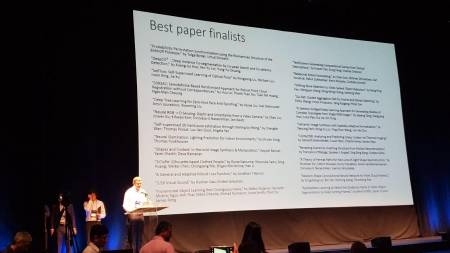 | 16 June 2019, Long Beach Best Paper Finalist at CVPR 2019 We are happy to announce that 1 of our papers has been elected as a best paper finalist at CVPR. |
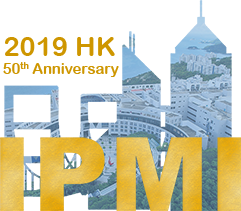 | 7 June 2019, Hong Kong, China CAMP Awards at IPMI 2019 |
 | 28 February 2019, CAMP/CM@TUM offers up to 5 International Undergraduate Excellence Awards in 2019: to the best international undergraduate applicants The Chair for Computer Aided Medical Procedures (CAMP) and the Chair for Connected Mobility would like to offer up to 5 research awards to strongly motivated international undergraduate students interested in improving their research skills in machine learning, medical imaging, computer vision, augmented reality, Internet of Things, and/or Edge Computing. The students are required to pursue their undergraduate studies outside Germany. The first two awards amount to 4500 Euros and the second three awards to 4000 Euros. These awards will provide financial support for the awardees during their research stay at CAMP for a period of up to three months between June 2019 and October 2019. |
 | 19 December 2018, 00.12.019 Geometric Methods for 3D Reconstruction from Large Point Clouds 3D reconstruction involves the task of capturing the shape and appearance of objects or scenes in the formof 3D computer aided design (CAD) models, often throughmultiple measurements: individual 2D images or multiview 3D data. In this thesis, we explore both sparse and dense 3D reconstruction methods in scenarios where 3D cues are present and rough, prior CAD models are at hand before the operation. Thanks to the proliferation of 3D sensors and increased accessibility of 3D data, we can now remain true to the 3D nature of our physical world in such digitization processes and utilize direct 3D input, point clouds, which can also alleviate problems of capture modality and illumination conditions. Both sparse and dense reconstruction problems arise frequently either in industrial machine vision where the production processes of parts and goods are to be inspected, or in restoration applications where crude digital models are desired to be improved. We start by explaining our contributions to sparse yet accurate reconstruction from non-overlapping multiview images. The experience developed here have also been used to acquire accurate ground truth aiding the assessment of the next stage, dense reconstruction.We tackle the latter by proposing a novel, multiview point cloud based 3D reconstruction pipeline in which it is possible to incorporate CAD proxies. This is accomplished by first aligning all the scans not by an O(N2) inter-scan matching but by a linear scan-to-model registration. Such alignment ismade possible by novel object detection and pose estimation algorithms.Next, respecting the deviations of the real data from the CAD model, we performa CAD-free multi-scan refinement further increasing the accuracy both qualitatively and quantitatively.We also propose novel methods to initialize such large scale optimization problems and to infer information about the reliability of solutions, known as the uncertainty. As seen, the necessity to incorporate the CAD models as proxies to reconstruction comes along withmany challenges to be addressed. In this thesis, the prominent subtasks include preparing CAD models towards the reconstruction task, object detection, estimation of full six degree of freedom (DoF?) rigid pose and pose graph optimization, in which the roughly aligned scans are brought to the final alignment.We address all of those problems with rigor.Moreover, thanks to our photogrammetric ground truth acquisition strategies, we present thorough evaluation of all tasks, in real datasets besides synthetic ones. |
 | 6 December 2018, 00.12.019 PhD Defense by Christian Rupprecht Nearly all real-world image understanding problems in computer vision are inherently ambiguous. Often, predictive systems do not model this ambiguity and do not consider the possibility that there can be more than just a single outcome for a given problem. This leads to sub-par performance on ambiguous tasks as the model has to account for all possibilities with one answer. We define three typical sources of confusion that render tasks not optimally solvable with a single unique prediction. In this dissertation we describe two principled and general approaches of dealing with ambiguity. First, we elaborate on a method that allows the algorithm to predict multiple instead of one single answer. This is a pragmatic way of dealing with ambiguity: instead of deciding for an exclusive outcome for a given problem, we enable the system to list several possibilities. The second part describes an alternative way to deal with uncertain predictions. Often human perception can provide additional information about a task or application that an intelligent system might have not recognized. Building on the paradigm of human-machine interaction, we show how enabling interaction between the system and a user can improve predictions on the example of semantic segmentation. We describe a novel guiding mechanism that can be seamlessly integrated into the system and shows great potential beyond the demonstrated tasks for several further applications. |
 | 19 November 2018, 01.09.014 PhD Defense by Nicola Rieke Visual tracking of surgical instruments is a key component of various computer-assisted interventions, yet a very challenging problem in the field of Computer Vision. This dissertation presents novel approaches which leverage machine learning techniques for precise real-time tracking and 2D pose estimation of instruments. The achieved results demonstrate that the proposed methods based on Random Forests and Deep Learning provide remarkable advantages with respect to the state of the art in terms of accuracy, robustness and generalization. |
 | 8 October 2018, 01.06.020 Signed Distance Fields for Rigid and Deformable 3D Reconstruction Capturing three-dimensional environments is a key task in the growing fields of virtual and augmented reality. This thesis addresses the task of 3D reconstruction of both static and dynamic objects and scenes scanned with a single hand-held RGB-D camera, without any markers or prior knowledge. Reconstructing rigid environments requires estimating the six degrees-of-freedom camera pose at every time instance, and subsequently fusing the acquired data into a geometrically consistent computer model. The task of reconstructing deformable objects is more challenging, as additionally the non-rigid motion that occurred in every frame has to be determined and factored out. We propose to tackle both the rigid and deformable reconstruction problems via implicit-to-implicit alignment of SDF pairs without correspondence search. In the static case, we obtain more accurate pose estimates with a framework that permits straightforward incorporation of various additional constraints, such as surface colour and orientation. We start with the reconstruction of small- to medium-scale household objects and demonstrate how to extend the approach to larger spaces such as rooms. To this end, we develop a limited-extent volume strategy that restricts registration to the most geometrically distinctive regions of a scene, leading to significantly improved rotational motion estimation. Finally, we adapt our approach to dynamic scenes by modifying our implicit-to-implicit approach so that new data is incremented appropriately. For this purpose we evolve an initial SDF to a target SDF by imposing rigidity constraints that require the underlying deformation field to be approximately Killing, i.e. volume-preserving and generating locally isometric motions. Alternatively, we employ gradient flow in the smooth Sobolev space, which favours global deformations over finer-scale details. These strategies also circumvent explicit correspondence search and thus avoid the repeated conversion between SDF and mesh representations that other techniques entail. Nevertheless, we ensure that correspondence information can be recovered by proposing two strategies based on Laplacian eigenfunctions, which are known to encode natural deformation patterns. Thanks to the used SDF representation, our non-rigid reconstruction approach is able to handle topological changes and fast motion, which are major obstacles for existing approaches. |
| 16 September 2018, Granada, Spain CAMP Awards at MICCAI 2018 | |
 | 10 September 2018, IFL Invited Talk by Dr. Hayato Itoh In colon cancer screening, polyp size estimation using only colonoscopy images or videos is difficult even for expert physicians although the size information of polyps is important for diagnosis. To construct a fully automated computer-aided diagnosis (CAD) pipeline, a robust and precise polyp size estimation method is highly desired. However, the size estimation problem of a three-dimensional object from a single two-dimensional image is ill-posed due to the lack of three-dimensional spatial information. To circumvent this challenge, we formulate a relaxed form of size estimation as a binary-size classification problem and solve it by a new deep neural network architecture. This relaxed form of size estimation is defined as a two-category classification: under and over a certain polyp dimension criterion that would provoke different clinical treatments (resecting the polyp or not). Our proposed deep learning architecture estimates the depth map from an input colonoscopic RGB image using unsupervised deep learning, and integrates RGB with the computed depth information to produce a four-channel RGB-D imagery data, that is subsequently encoded as a pipeline to extract deep RGB-D image features and facilitate the size classification into two categories: under and over 10mm polyps. We collect a large dataset of colonoscopic videos of totally over 16 hours is constructed for the evaluation of our proposed method. Using this dataset, we evaluate the accuracies of both polyp detection and binary polyp-size estimation since detection is a prerequisite step of a fully automated CAD system. The experimental results show that our proposed method achieves 79.2% accuracy for binary polyp-size classification. We also combine the extraction features by our deep learning architecture and classification of short video clips using a long short-term memory (LSTM) network. Polyp detection (if the video clip contains a polyp or not) shows 88.8% sensitivity when employing the spatio-temporal image feature extraction and classification. |
 | 7 September 2018, 01.07.014 Learning Context For Semantic Segmentation And Applications Nowadays, cameras are an integral part of many devices and systems - from mobile phones to autonomous vehicles and from medical robots to surveillance cameras. While an active field of research, the task of understanding a camera image still poses significant challenges and is not solved in general. A key in interpreting camera images correctly is not to focus on individual image areas or objects, but to use context from the whole image in order to resolve ambiguities - something that we humans are very good at... |
 | 5 July 2018, MI 01.11.018 PhD Defense by Sailesh Conjeti The task of similarity search refers to fetching an item that is closest to the query item from a reference database under the notion of some distance measure. In critical applications of large-scale search and pattern matching, exhaustive comparison is often not possible due to prohibitive computational complexity and memory overheads. Towards mitigating this, hashing has been adopted as a popular approach for performing computationally efficient approximate nearest neighbor search. [...] |
 | 27 April 2018, CAMP@TUM offers 4 International Undergraduate Excellence Awards in 2018: to the best international undergraduate applicants The Chair for Computer Aided Medical Procedures (CAMP) would like to offer 4 research awards to strongly motivated international undergraduate students interested in improving their research skills in machine learning, medical imaging, computer vision and/or augmented reality. The students are required to pursue their undergraduate studies outside Germany. The first two awards amount to 4500 Euros and the second two awards to 4000 Euros. These awards will provide financial support for the awardees during their research stay at CAMP for a period of up to three months between June 2018 and October 2019. |
 | 19 March 2018, Medvis / Karl-Heinz-Höhne Award 2018 to Markus Rempfler The Medvis / Karl-Heinz-Höhne Award 2018 has been awarded to Markus Rempfler. The Medvis Karl-Heinz Höhne Award has been established in 2004 by the 'Gesellschaft für Informatik' (GI) working group on Visual Computing in Medicine and Biology. It is awarded bi-annually to a young scientist for outstanding work on image analysis, visualization and interaction in the field of image-based diagnostics and therapy in biology and medicine. |
 | 8 February 2018, MI 00.12.019 PhD Defense by Fausto Milletari Object detection, segmentation and visual tracking are extremely important problems in both computer vision and medical image analysis. Most of the recent scientific efforts focused on proposing machine learning based approaches that can tackle and solve these problems appropriately. Methods that are based on handcrafted features, the so called shallow approaches, have been widely used and explored until very recently and were often employing machine learning algorithms such as boosting, support vector machines, random forests coupled with a careful choice of manually engineered features which were designed in a specific manner for each task. [...] |
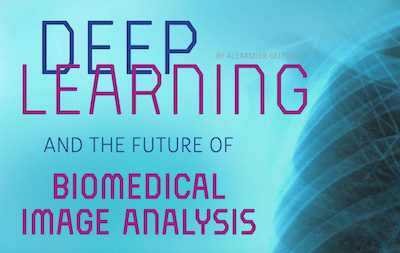 | 14 December 2017, Our Deep Learning papers were featured in Biomedical Computation Review Our Deep Learning papers were featured in the %_Q_%Deep Learning and the Future of Biomedical Image Analysis%_Q_% article published in the Biomedical Computation Review (BCR). |
 | 24 November 2017, MI 03.13.010 Invited Talk by Prof. Michel Defrise This talk introduces the concept and applications of consistency conditions in inverse problems with redundant data. We consider inverse problems modelled by some linear operator or matrix A, such as the Radon transform in tomography. The inverse problem consists in solving an equation Ax=y for x given measured data y. In many applications this equation admits a solution only if the data satisfy a set of equations denoted C(y)=0, referred to as the consistency conditions. If the data are noise free and the operator A accurately models the imaging system, the data are by definition consistent because the “exact” object x satisfies Ax=y, and in that case C(y)=0. In practice however the consistency conditions are not satisfied; they can then be used to estimate some vector of parameters p of the imaging system (typically calibration parameters) by solving C(p, y)=0 for p, where C(y, p) denotes the consistency condition corresponding to the parameter p. After a general introduction to the concept, we will review a variety of examples pertaining to 2D and 3D tomography. Applications will be briefly described. |
 | 24 November 2017, MI 01.07.014 PhD defense by Matthias Wieczorek Modern X-ray based imaging enables recording of phase-contrast (refraction) and dark-field (scattering) information. Tomographic Reconstruction of the dark-field signal poses an especially challenging problem, as the scattering within an object depends on its orientation. Within this thesis an abstract software framework for Tomographic Reconstruction as well as a novel method for Anisotropic X-ray Dark-field Tomography will be presented. A first biomedical experiment on a sample of a human cerebellum indicates that this method could provide a complementary imaging modality for imaging nerve fibers. |
 | 22 November 2017, MI 01.09.014 PhD defense by Kanishka Sharma In Autosomal Dominant Polycystic Kidney Disease (ADPKD), automated segmentation of kidneys for total kidney volume (TKV) measurement is very challenging due to severe, disease-related alterations in kidney morphology. This PhD? thesis analyzes the applicability and performance of machine learning techniques (Random Forests and Deep Learning) for kidney segmentation in ADPKD. The developed segmentation method based on Deep Learning allows fast and reproducible TKV measurements, demonstrating that machine learning can be successfully used for complex medical image segmentation tasks. |
 | 22 November 2017, MI 00.05.035 PhD defense by Shadi Albarqouni Aimed at improving machine learning algorithms by incorporating domain-specific knowledge, we develop a set of mathematical and technical methods that cope with different conditions of data abundance, reliable labels, and class balance. Proposed methods are evaluated for various biomedical applications, in particular, Tomographic Reconstruction and Noise Reduction in Cryo-Electron Tomography, Mitotic figure Detection in Breast Cancer Histology Images, and Depth Perception in Interventional Imaging. |
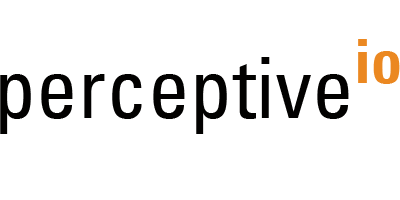 | 19 October 2017, FMI 00.12.019 Invited Talk by PerceptiveIO: The Need for Speed in Computer Vision Depth cameras are becoming key tools for computer vision tasks ranging from hand, body or object tracking, 3D reconstruction and simultaneous localization and mapping. Almost all these tasks need to solve a tracking problem i.e. each new frame of depth and image data is correlated to the previous, and this temporal information allows for faithful pose and/or geometry reconstruction over time. However, this reliance on temporal information, makes tracking problems hard to solve when using sensors running at 30fps, due to susceptibility to high frame-to-frame scene motions and artifacts such as motion blur. [..] In this talk we are going to demonstrate a 3D capture system for high speed and high quality depth estimation, and show its advantages in a variety of computer vision tasks. Our hardware and software depth pipeline can run at 1.1msec with modern GPUs and readily procurable camera and illumination components. |
 | 17 October 2017, FMI 00.12.019 Invited Talk by Dr. Hamid Rezatofighi from University of Adelaide, Australia Recently, deep structured networks such as deep convolutional (CNN) and recurrent (RNN) neural networks have enjoyed great success. However, similar to most machine learning techniques, current deep learning approaches rely on conventional statistics and restricted to a specific problem formulation. In particular, they are designed to learn a model for a distribution (or a function) that maps a structured input, typically a vector, matrix, or tensor, to a structured output. Due to this limitation, deep learning has not had any success or significant impact in many other applications. In fact, many problems such as object detection, graph matching, and multi-target tracking, are naturally expressed with sets of elements rather than vectors. As opposed to a vector, the size of a set is not fixed in advance, and it is invariant to the ordering of its elements. Therefore, learning approaches built based on conventional statistics cannot be used directly for these problems. In the talk, I will discuss deep learning approaches that use finite set statistics and point processes instead of conventional statistics, as a step towards the set learning problem. I will also highlight further recent work. |
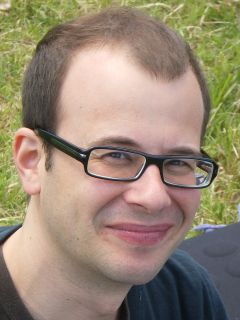 | 12 October 2017, FMI 00.12.019 Invited Talk by Dr. Del Bue: Tomasi and Kanade revisited: from 3D point reconstruction to object based structure from motion. This talk will present how semantic information as extracted by object and region detectors can be used to perform classical 3D Computer Vision tasks in a robust way. In particular, object positions can be used to simply calibrate cameras and to identify the position and orientation of objects in 3D. Strikingly, this solution has a closed form that can be solved very efficiently, similarly to the standard Tomasi and Kanade factorization problem. Moreover, the information of the position of objects can be used to initialise standard methods for 3D reconstruction using feature point matches. This new approach provides a novel pipeline to efficiently inject semantic information in Structure from Motion problems. |
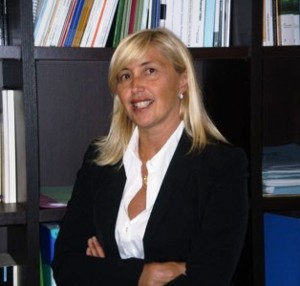 | 12 October 2017, FMI 00.12.019 Invited Talk from Prof. Cucchiara: Beyond People Detection: GANs and iterative networks working on human data Computer Vision with CNNs performs well for people detection. This is not enough. A step forward can be taken to understand the aspect of people detected in low resolution, or corrupted by occlusions in the crowd; to track them in the wild; to detect saliency and pay attention to details only; to forecast motion and human actions. [..] The talk will present projects and results carried out at Imagelab University of Modena and Reggio Emilia on people aspect classification, tracking and saliency analysis based on what people see. |
 | 6 October 2017, PhD Defense by Oliver Zettinig Ultrasound imaging is commonplace in clinical routine and has become the standard of care for a plethora of diagnostic scenarios. Due to issues such as limited image quality or obstructed visibility of anatomy, the exclusive use of this modality for interventional guidance purposes has, however, not yet reached a comparable level of maturity. This thesis addresses several challenges associated with ultrasound imaging by proposing advanced techniques for interventional use. Although applied to a broad spectrum of clinical fields and anatomies, their underlying methodology is generic and can be transferred to other medical scenarios. First, a framework for multi-modal prostate biopsy guidance is introduced, allowing urologists to accurately target suspicious lesions by combining trans-rectal ultrasound information with complementary functional tomographic data. The crucial part of this fusion consisting of deformable image registration is solved by two novel algorithms based on automatically segmented prostate surfaces or a preconditioned intensity similarity metric and a statistical deformation model. To overcome the challenges of manual acquisitions, in particular navigation to and maintenance of appropriate location and suitable acoustic window, robotic solutions are studied. Based on multi-modal image registration, a visual servoing control scheme for neurosurgical navigation is introduced. While compensating for target anatomy movements in real-time, it allows for automatic needle guide alignment for accurate manual insertions. The suitability of such systems for reliable robotic acquisitions even in absence of planning data is demonstrated by applying the developed methods, including image quality optimizations using confidence maps, for automated abdominal aortic aneurysm screenings. Through Doppler modes, ultrasound physics uniquely allows fast analysis of blood flow dynamics, albeit limited to 2D projections. This thesis introduces a novel technique to recover 3D velocity information in combination with a temporal flow profile using measurements from multiple directions. Due to the importance of accurate and linearly independent sampling, the advantages of robotic acquisition schemes can be hereby fully exploited. Results of phantom experiments, volunteer studies and clinical patient evaluations, all in close collaboration with medical partners, demonstrate the great potential benefit of advanced ultrasound imaging techniques in interventional settings in terms of both efficacy and efficiency. |
| 10 September 2017, Quebec City, Canada CAMP Nominations and Awards at MICCAI 2017 Once again our students made the difference. Only 12 papers out of over 800 submissions to MICCAI 2017 where nominated for Young Investigator Awards (less than 2%). This list include 3 papers from CAMP. | |
 | 8 September 2017, PhD Defense by Loïc Peter The task of semantic image segmentation, i.e. the simultaneous partitioning of an image into regions and the labeling of their content, is a fundamental objective in computer vision and medical image analysis. The need for segmentation algorithms can be encountered in diverse real-world scenarios. In some cases, the segmentation of a scene must be entirely automated, for example to act as a scene understanding tool to help the decision-making of an autonomous system. In other situations, a segmentation algorithm can assist a human user in annotating an image. In this case, the fully-automated aspect is no longer crucial and can be relaxed in favor of an improved flexibility via interactions with the user. In this thesis, we demonstrate how the statistical learning framework of decision forests can be exploited for these two scenarios and propose three contributions. First, we introduce an efficient and generic scale-adaptive forest training scheme for fully automated image understanding. In the context of large digital slides in histopathology, we propose an interactive and adaptive solution entangling segmentation with image exploration to facilitate the examination of these large images. Finally, we show how the segmentation task can be modeled as a Twenty Questions game towards hands-free human-computer interactions. Overall, we hope to demonstrate the effectiveness of decision forests for automated segmentation in diverse application domains. Moreover, we wish to emphasize the relevance of interactive settings and to introduce practical learning-based solutions in cases where standard interactive techniques are not directly applicable. |
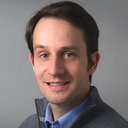 | 2 August 2017, FMI 00.13.009A Talk on Sensitive Longitudinal NeuroImaging and Morphometry Structural magnetic resonance imaging data are frequently analyzed to reveal morphological changes of the human brain in dementia. Most contemporary imaging biomarkers are scalar values, such as the volume of a structure, and may miss the localized morphological variation of early presymptomatic disease progression. Neuroanatomical shape descriptors, however, can represent complex geometric information of individual anatomical regions and may demonstrate increased sensitivity in association studies. Yet, they remain largely unexplored. In this talk we will describe sensitive computational methods for the automated quantification of neuroanatomical morphometric estimates and their longitudinal changes. We will, furthermore, show that neuroanatomical shape features, such as lateral shape asymmetry, demonstrate increased sensitivity to detect early disease effects and can improve computer-aided diagnosis of dementia. |
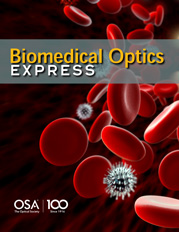 | 6 July 2017, Paper accepted for publication within Biomedical Optics Express Our article on ReLayNet?: Retinal Layer and Fluid Segmentation of Macular Optical Coherence Tomography using Fully Convolutional Network has been accepted for publication by Biomedical Optics Express. Biomedical Optics Express is a peer-reviewed scientific journal published monthly by the Optical Society. It covers theoretical modeling, technology development, biomedical studies, and clinical applications pertaining to optics, photonics, and imaging in the life sciences. It is considered as one of the top journals in the field of optics and currently has an impact factor of 3.337. The Arxiv pre-print available at: https://arxiv.org/abs/1704.02161 |
 | 27 June 2017, MI 01.06.020 PhD Defense by Mohamed Alsheakhali Instrument detection and pose estimation has attracted great interest in retinal microsurgery. Automatic detection of the instrument parts and estimating the instrument pose promote many applications to guide the surgeon in the operation room. One important application is the automatic positioning of Optical Coherence Tomography (OCT) scans to estimate the distance between the detected instrument tip and the retina to minimize the damage during the surgery. There are many other applications that employ the pose of the instrument such as activity recognition and surgical workflow analysis. This work addresses the problem of detecting the instrument parts (tips and/or the joint point). The first contribution employs instrument’s color and geometric information, while the second exploits deep learning to localize the instrument tip and the shaft’s orientation. In our third contribution, we formulate the problem as a regression task, where a new Hough Forest pipeline is proposed to predict the locations of the instrument parts within the 2D image space. |
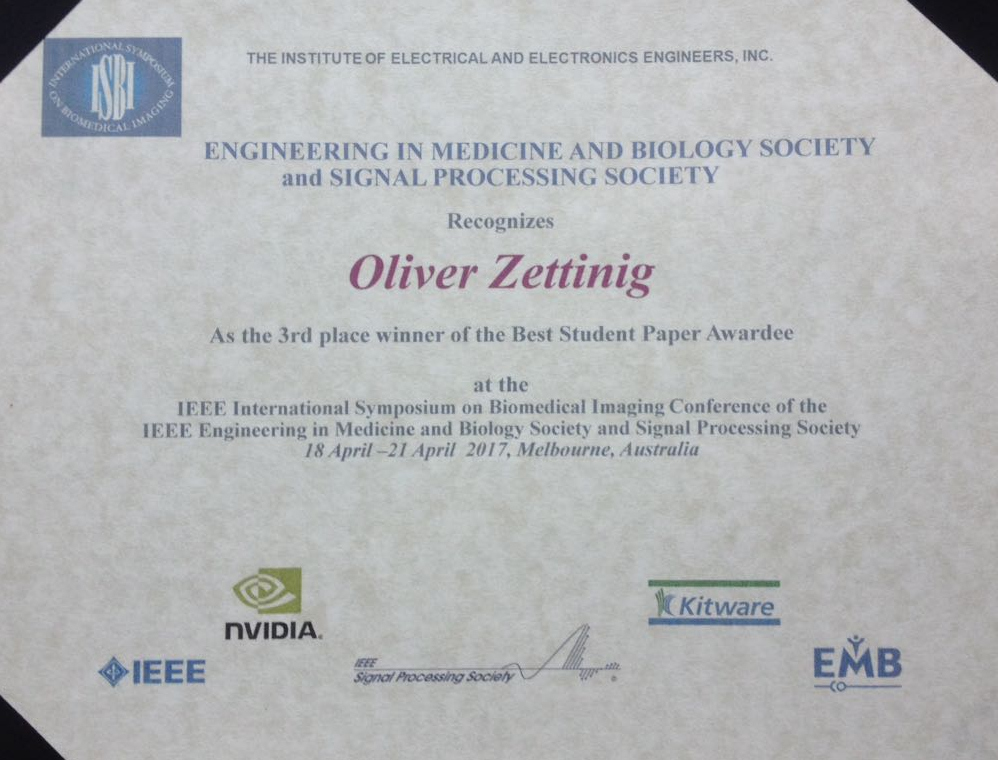 | 21 April 2017, Melbourne, Australia 3rd Best Student Paper Award at ISBI 2017 We are happy to announce that Oliver Zettinig received the 3rd Best Student Paper Award at ISBI 2017 for his work Preconditioned Intensity-Based Prostate Registration using Statistical Deformation Models. Congratulations! |
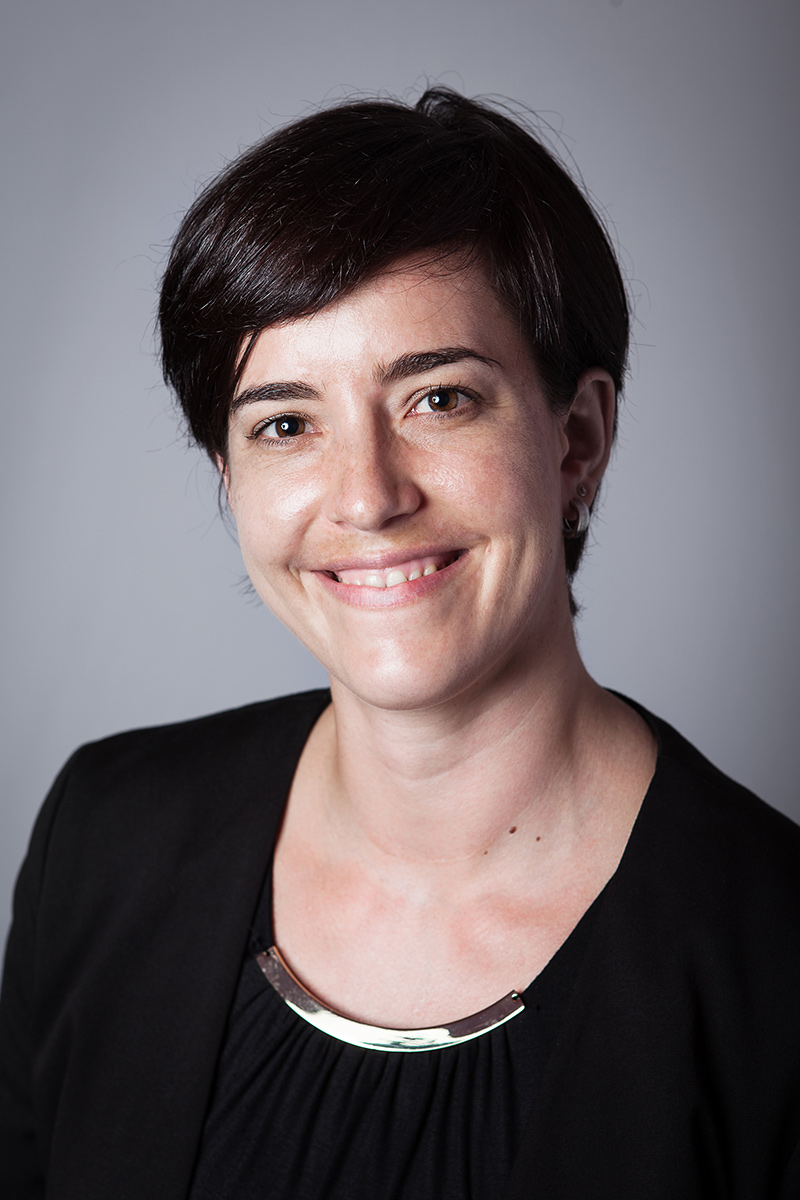 | 21 March 2017, 03.13.010 Ultrasound Transit Time Spectroscopy – a novel approach to tissue characterisation Ultrasound transit time spectroscopy (UTTS) approximates ultrasound propagation through composite media as an array of parallel sonic rays. Via deconvolution of experimentally derived ultrasound input and output signals the resulting impulse response of the test sample, being dependent upon its composition and structure. Applications of UTTS include estimation of bone volume fraction of composites and improving image axial resolution. This talk will provide an overview of the UTTS research within our Quantitative Ultrasound and Image Characterisation (QUIC) research group at QUT. |
 | 15 March 2017, MI 03.13.010 Longitudinal Imaging: Challenges and Oportunities to Study Growth and Disease Trajectories Clinical assessment routinely uses terms such as development, growth trajectory, aging, degeneration, disease progress, recovery or prediction. This terminology inherently carries the aspect of dynamic processes, suggesting that measurement of dynamic spatiotemporal changes may provide information not available from single snapshots in time. Image processing of temporal series of 3-D data embedding time-varying anatomical objects and functional measures requires a new class of analysis methods and tools that makes use of the inherent correlation and causality of repeated acquisitions. This talk will discuss progress in the development of advanced 4-D image and shape analysis methodologies that carry the notion of linear and nonlinear regression, now applied to complex, high-dimensional data such as images, image-derived shapes and structures, or a combination thereof. Methods include joint segmentation of serial 3D data enforcing temporal consistency, building of 4-D models of tissue diffusivity via longitudinal diffusion imaging, and 4-D shape models. We will demonstrate that statistical concepts of longitudinal data analysis such as linear and nonlinear mixed-effect modeling, commonly applied to univariate or low-dimensional data, can be extended to structures and shapes modeled from longitudinal image data. We will show results from ongoing clinical studies such as analysis of early brain growth in subjects at risk for autism, analysis of neurodegeneration in normal aging and Huntington's disease, and quantitative assessment of recovery in severe TBI. |
 | 6 March 2017, CAMP Seminar room, 03.13.010, Boltzmannstr. 3 Invited Talk Upul Senanayake, USWA, Diagnosis of Mild Cognitive Impairment (MCI) This talk summarises the work carried out by Upul Senanayake during his PhD? candidature at the University of New South Wales Sydney, Australia. Diagnosis of Mild Cognitive Impairment (MCI), which is a prodromal condition to Dementia, is considered to be an active research area as it holds a high prognosticative value in predicting an individual's progression to Dementia. In this talk, multiple modalities of data is explored and leveraged to improve such predictive efforts including patient data, neuropsychological test scores and multiple imaging modalities such as MRI and PET. A range of machine learning and image processing techniques are used for this purpose. Problems of interest include extracting meaningful data from multiple modalities of data, fusion between multiple modalities of data, leveraging the inherent characteristics of data to improve the performance and visualising the predictive efforts in a meaningful manner for the medical professionals. |
 | 10 February 2017, TEDx talk on Medical Augmented Reality Professor Navab gave a TEDx talk on Medical Augmented Reality. |
| 6 February 2017, Munich, Germany Paper accepted by Nature Communications Our paper A Basic Tool for Background and Shading Correction of Optical Microscopy Images has been recently accepted by Nature Communications. | |
 | 16 December 2016, MI 01.06.020 PhD Defense by Patrick Wucherer The aim of the research work was to investigate the development of a simulated operating room which could be an option for conducting assessment and training of surgical skills within a multidisciplinary controlled environment. The findings will enable other national/international research and simulation centers to develop more sophisticated training environments and the hope exists that this work will trigger a new generation of simulators which will eventually improve medical education of multidisciplinary teams and hence increase patient safety and raise the quality of patient care. |
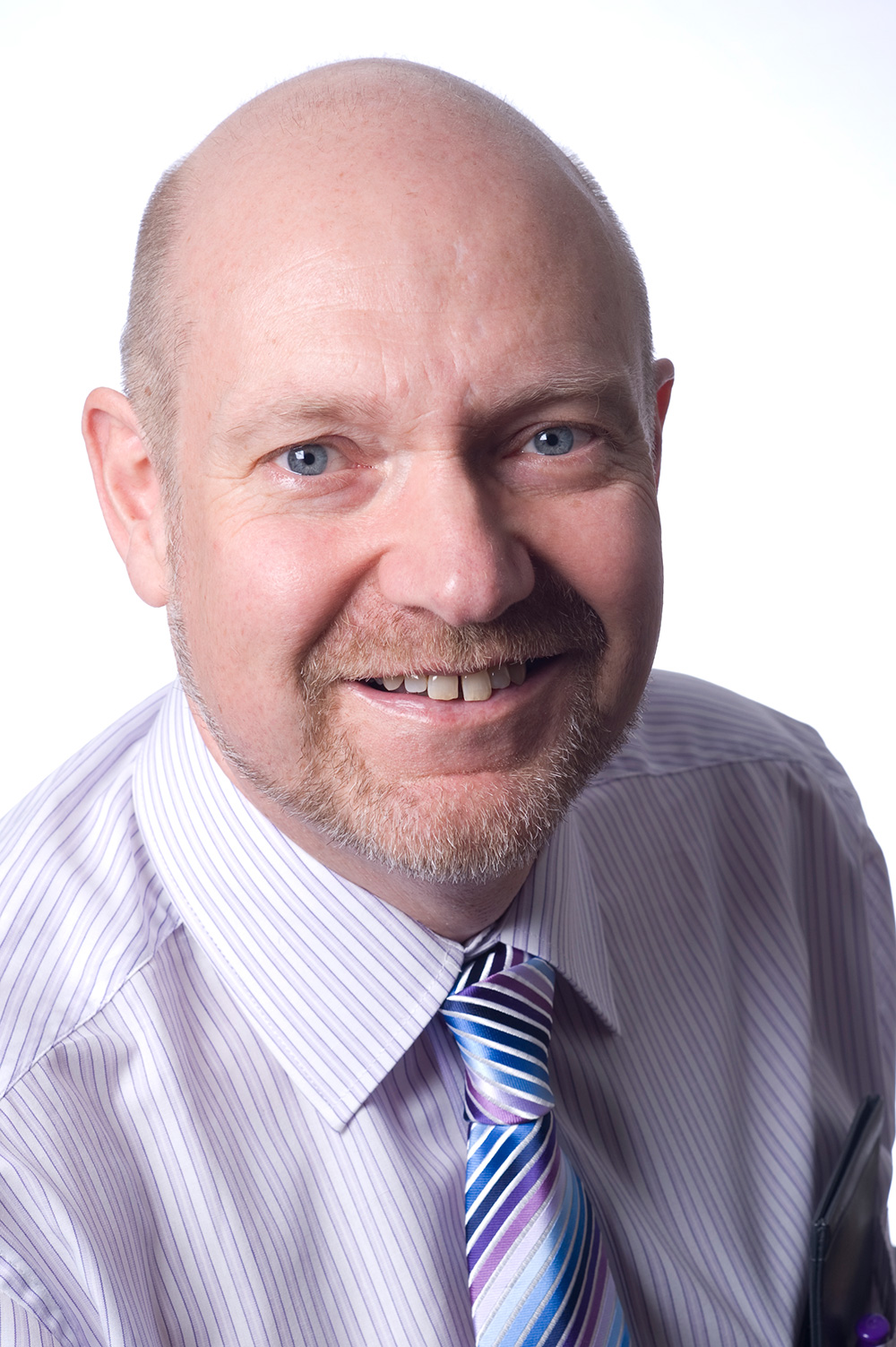 | 13 December 2016, 03.13.010 Invited talk by Christian Langton A QUIC Overview – quantitative ultrasound imaging and characterisation |
 | 12 December 2016, Université de Rennes, France PhD defense by Pierre Chatelain: Quality-Driven Control of a Robotized Ultrasound Probe This thesis deals with the control of image quality for a robot-held ultrasound probe. The ultrasound signal quality within the image is represented by a confidence map, which is used to design a servo control law for optimizing the placement of the ultrasound probe. A control fusion is also proposed to optimize the acoustic window for a specific anatomical target tracked in the ultrasound images. These methods are illustrated via experiments on phantom and on a human volunteer. |
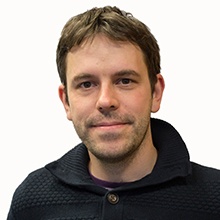 | 25 November 2016, MI 03.13.010 Invited Talk by Oliver Stegle Statistical methods to exploit high-dimensional phenotypes in human genetics |
 | 25 November 2016, MI 00.05.035 PhD Defense by Bertram Drost Machine vision is a technologically and economically important field of computer vision. It eases automatization of inspection and manipulation tasks, which in turn enables cost savings and quality improvement in industrial processes. Usually, 2D or intensity images are used for such applications. However, thanks to several technological advances, nowadays there are sensors available that allow depth or 3D measurements with high resolution, frequency and accuracy at a reasonable cost. Such 3D data enables new applications that are difficult or impossible to implement with 2D images only. |
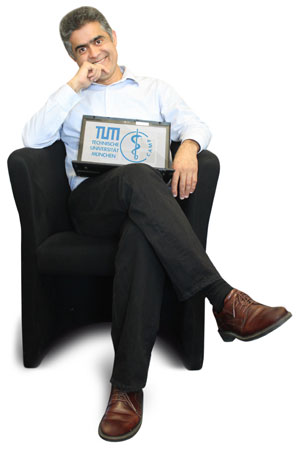 | 11 November 2016, FAZ reports on CAMP’s Medical Augmented Reality The German newspaper Frankfurter Allgemeine Zeitung (short: FAZ) features an article on Medical Augmented Reality, showcases CAMP’s technology and interviews with Prof. Nassir Navab: |
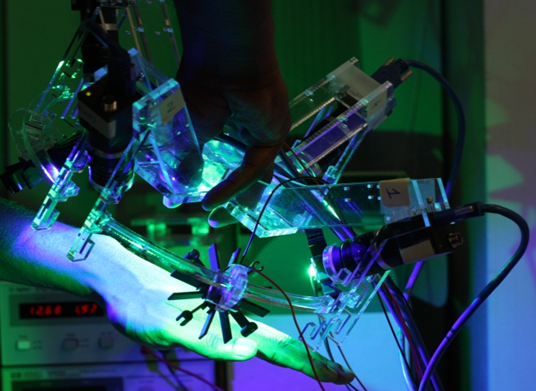 | 8 November 2016, FMI-Building 3D deformation measurement - Seminar by Amir HajiRassouliha Quantification of skin properties can provide a better understanding of its behaviour in many applications, such as the wound healing process, the effects of ageing, the process of wrinkle formation, and skin and breast surgeries. Skin is a complex tissue that is anisotropic, heterogeneous, nonlinear, and viscoelastic. Several methods have been developed to characterise the complex mechanical behaviour of skin in-vivo or in-vitro, such as during biaxial, compression, suction, or indentation tests on tissues. |
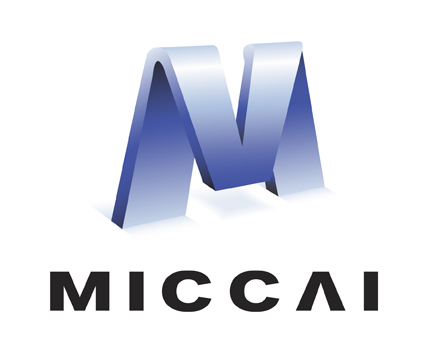 | 6 November 2016, Athens, Greece Three awards at MICCAI 2016! We are happy to mention that three of our papers at MICCAI 2016 have been given awards to in Athens. Two represent the best papers between 810 international papers submitted to the conference in 2015 (.025%) and one is given to 5 Young Investigators over 760 papers submitted in 2016! Congratulations to the awardees. |
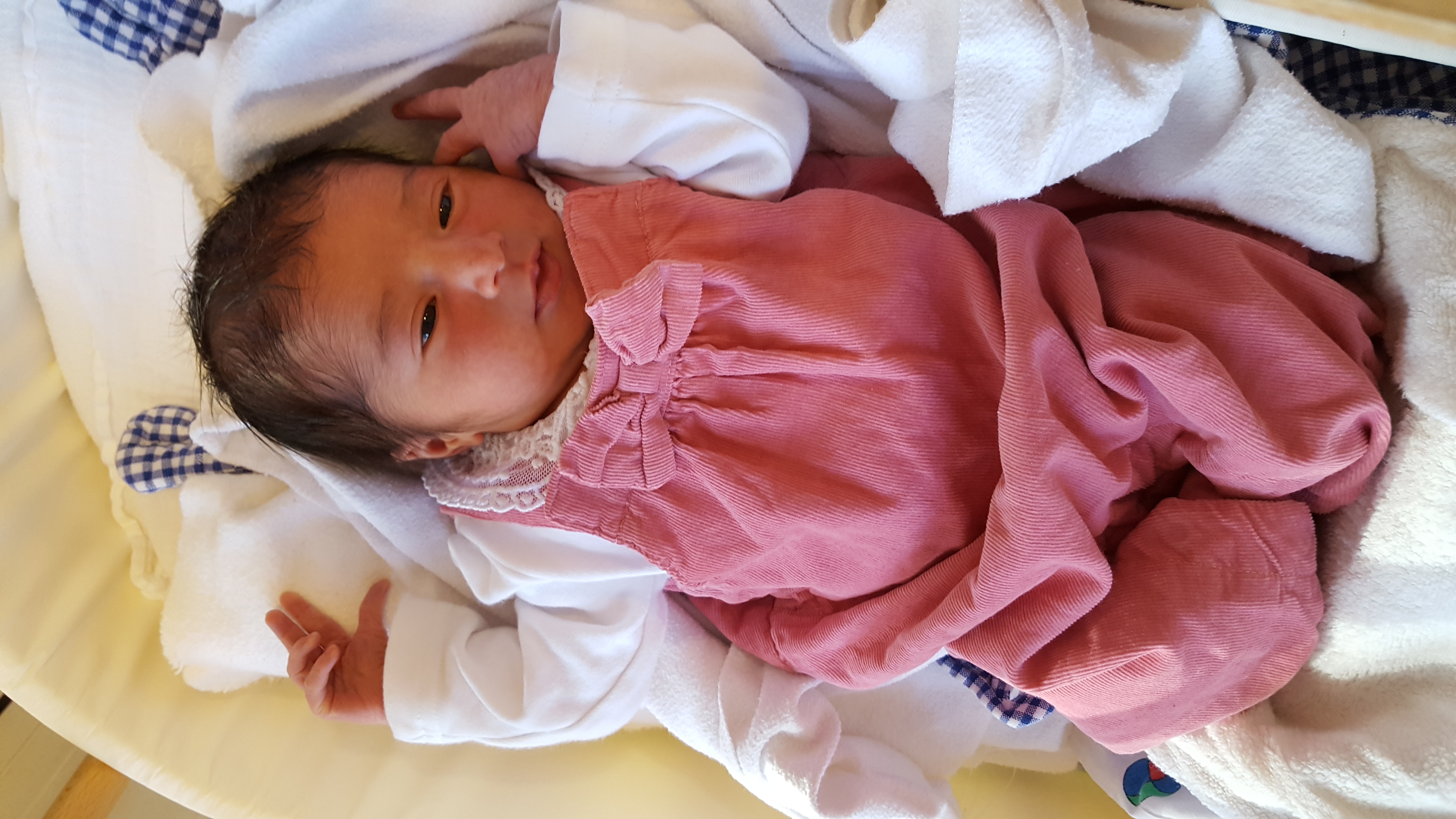 | 2 November 2016, Munich, Germany Here's the newest member of the CAMP family! We are happy to announce that our CAMP family has grown for one more person. Mohamed Alsheakhali and his wife just became parents of a cute little sprout named Nada on 2nd of November. |
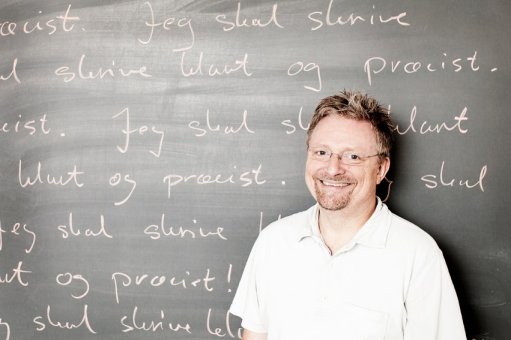 | 31 October 2016, IMETUM Hörsaal Invited Talk by Prof. Per Christian Hansen Column-Action Methods in Image Reconstruction |
 | 25 October 2016, FMI-Building, Room 00.05.035 Doctoral Defense by Bernhard Fuerst Imaging and visualization of anatomy and physiology are the very foundation of Computer Assisted Surgery, and crucially contribute to the success of interventions. The goal of the research presented in this thesis is the introduction of novel image registration techniques as means of transferring pre-operative imaging and planning to the surgical scenario, and intra-operative image acquisition to obtain images just in time and within the surgical site. |
 | 21 October 2016, Athens - Grece Labels 2016 - MICCAI Workshop http://campar.in.tum.de/LABELS2016/WebHome |
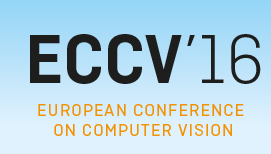 | 20 October 2016, Best Poster Award at the 6D Pose Recovery workshop! We are happy to mention that one of our works at ECCV 2016 has been given a 'Best Poster Award' as a submission to the 6D Pose recovery workshop. |
| 17 October 2016, Athens, Greece 13 Papers accepted at MICCAI 2016 13 papers of our chair will be presented at the 19th International Conference on Medical Image Computing and Computer Assisted Interventions (MICCAI 2016) in Athens (Greece), October 17-21, 2016. With an acceptance rate of approx. 30%; MICCAI is one of the most competitive international meetings in the field. It is based on full paper submissions and double blind review process. | |
 | 5 September 2016, FMI-Building, Room 03.13.010 PhD defense of Ma Meng: „Personalized Perception and Interaction with Medical Information in Mixed Reality Environments” Medical information is employed in different scenarios, such as education, training, diagnosis, and surgery. Perception and interaction of this information is fundamental, and augmenting the perception through personalized interaction with multi-model data is user specific. The good of this thesis if to investigate personalized perception through development of novel interaction method with the different medical information suitable for students, patients, and doctors. |
 | 1 September 2016, FMI-Building, Room 00.05.035 PhD defense of Christian Schulte zu Berge: „Real-Time Processing for Advanced Ultrasound Visualization” This work focuses on the development of visual computing techniques for advanced medical ultrasound visualization. At first, techniques for improved 2D B-mode ultrasound visualization are presented where the observer is provided with real-time feedback on the uncertainty present in the image. The second part of this thesis then introduces an orientation-driven ultrasound compounding approach to create high-quality 3D ultrasound volumes. Finally, a novel predicate-based classification technique allows for more meaningful visualization of such data. |
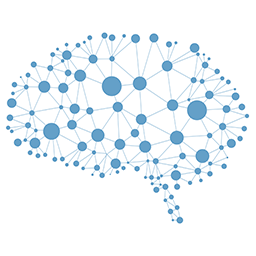 | 27 August 2016, Munich, Germany Deep Learning Workshop 2016 From April 5th until April the 7th, a Deep Learning-workshop will take place at CAMP. We will introduce the participants in some related topics, also they will have the possibility to check out some practical examples. |
 | 26 August 2016, Bern, Switzerland Best Paper Award at MIAR 2016 We got the Best Paper Award at the 7th International Conference on Medical Imaging and Augmented Reality (MIAR) 2016, held in Bern, Switzerland for the CathNets paper by C. Baur, S. Albarqouni, S. Demirci, N. Navab, P. Fallavollita |
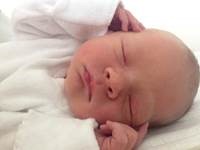 | 22 August 2016, Germany The CAMP Family expands even further We are happy to announce that our CAMP family has grown for one more person. Silvan Kraft and hhis wife Sylvia just became parents of a cute little sprout named Jolan. |
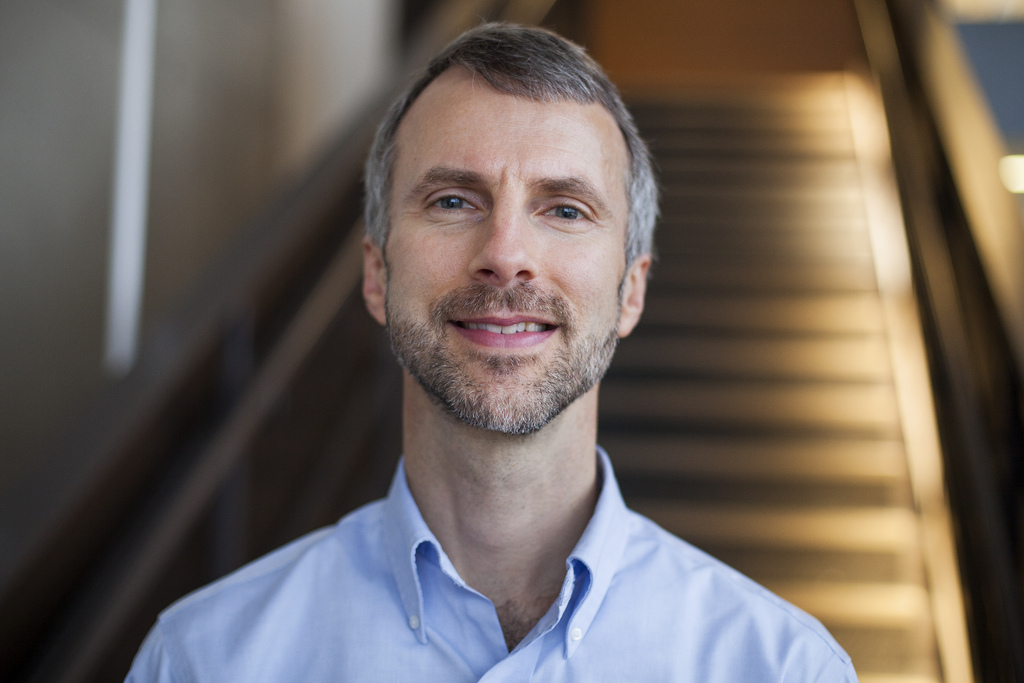 | 3 August 2016, IMETUM Hörsaal Invited Talk by Prof. Jeffrey Fessler Optimal first-order convex minimization methods with applications to image reconstruction and machine learning |
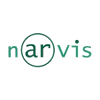 | 27 July 2016, Munich, Germany Operation der Zukunft - Virtuelle und Erweiterte Realitaet im OP As part of the anniversary celebrations of the LMU Klinikum Innenstadt we would like to invite you to visit us at the NARVIS Day on July 27th starting at 6pm. A lecture, live demos, and an industry exhibition are open to the public. |
 | 17 July 2016, We have two papers accepted at ECCV 2016 We are happy to announce that two of our works have been accepted to the European Conference on Computer Vision ECCV 2016. |
 | 28 June 2016, More than 1100 views in 4 months for our recent work in Deep Learning Our AggNet paper has received more than 1100 views in 4 months and is one of the top downloads at IEEEXplore (worldwide) for May 2016 ! |
 | 21 June 2016, Heidelberg Two Outstanding Reviewer Awards for CAMP at IPCAI 2016 Two members of our chair, Dr. Benjamin Frisch and Ralf Stauder, won an Outstanding Reviewer Award at IPCAI 2016. |
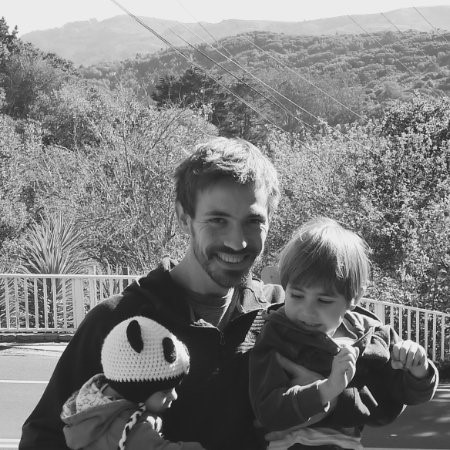 | 10 June 2016, Munich, Germany What's new in Virtual Reality @ Google? Two years ago Google released cardboard a simple headset that uses smartphones to let user around the world experience Virtual Reality (VR). In this talk I will discuss some of the new technical capability that we presented at Google I/O last month. I will describe some of the new feature of Android N that you can try today with the developer preview and dive into the use of the daydream controller. Finally I will present some of the use case that we have been exploring for VR at Google. |
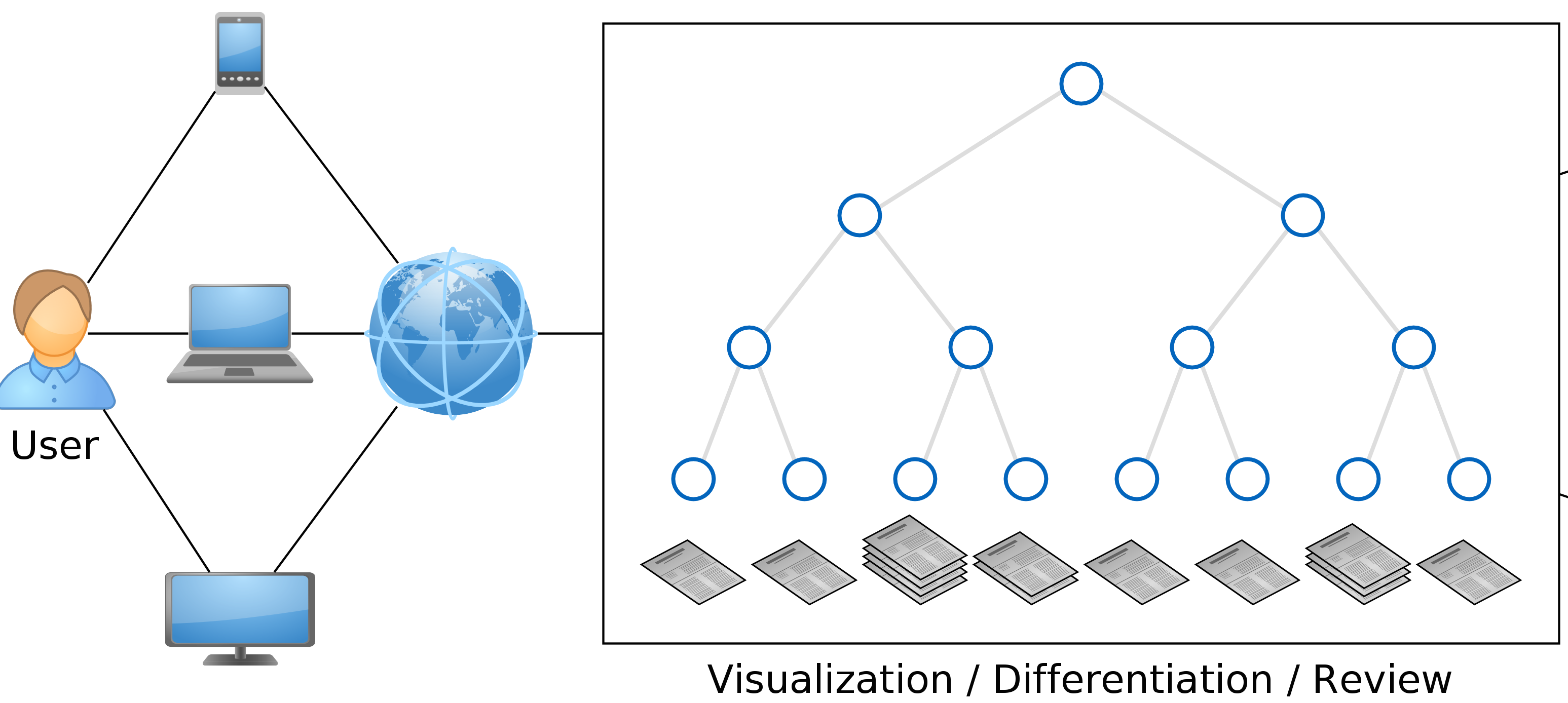 | 30 May 2016, Our Living Review Paper has just been released Check out our novel living review concept at http://livingreview.in.tum.de. |
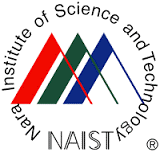 | 30 May 2016, Munich, Germany TUM - NAIST Bilateral Workshop on Medical Augmented Reality The workshop is part of the ongoing collaboration on Medical Augmented Reality between the Nara Institute of Science and Technology (NAIST) and the Technical University of Munich (TUM). The presenters Prof. Kato, Prof. Sato, Prof. Otake, Prof. Sandor, and their team from NAIST have a strong background in Imaging-Based Computational Biomedicine, Human-Computer Interaction, and Augmented Reality. Furthermore, the NARVIS team of the Chair of Computer Aided Medical Procedures from TUM will present their current research projects. The workshop provides a platform for exchanging information and as a groundwork for future collaborations. |
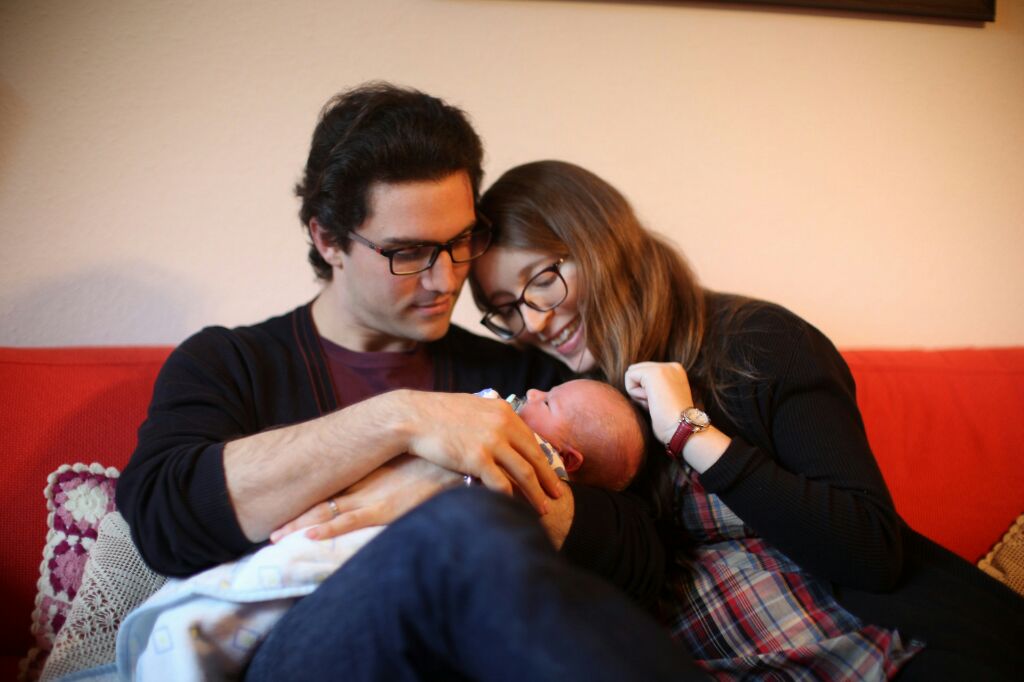 | 17 May 2016, Munich, Germany The CAMP Family keeps growing We are happy to announce that our CAMP family has grown for one more person. Asli Okur Kuru and her husband Ismail just became parents of a cute little sprout named Hasan Efe. |
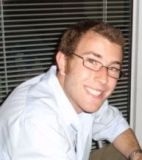 | 9 May 2016, MI 03.13.010 Invited Talk by Dr. Raphael Sznitman Finding the needle in the haystack: detection, tracking and registration in biomedical imaging |
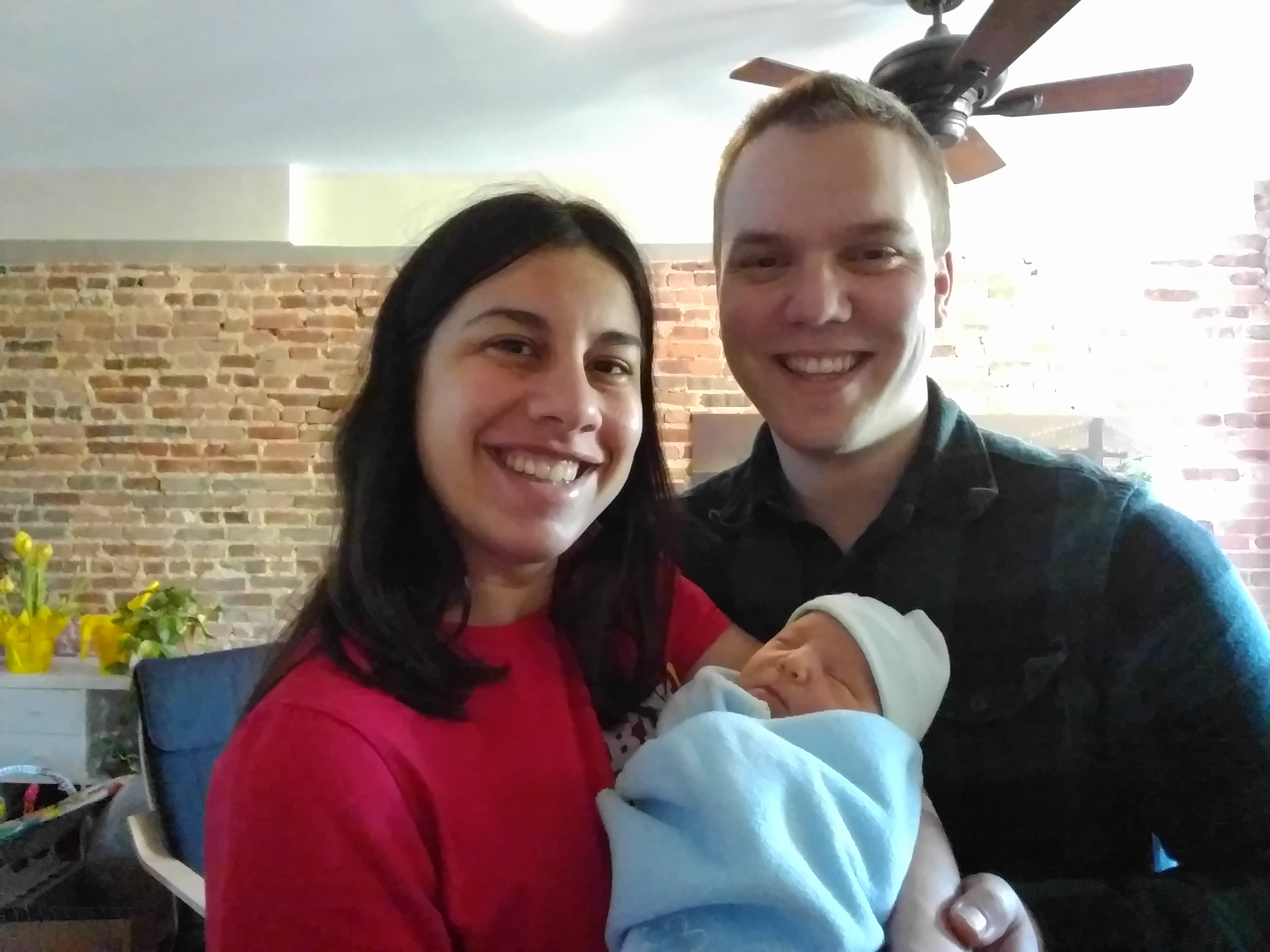 | 11 April 2016, Baltimore, US The Youngest Member of CAMP Family We are happy to announce that our CAMP family has grown for one more person. Bernhard Fuerst and his lovely wife Niki just became parents of a cute little sprout named David. |
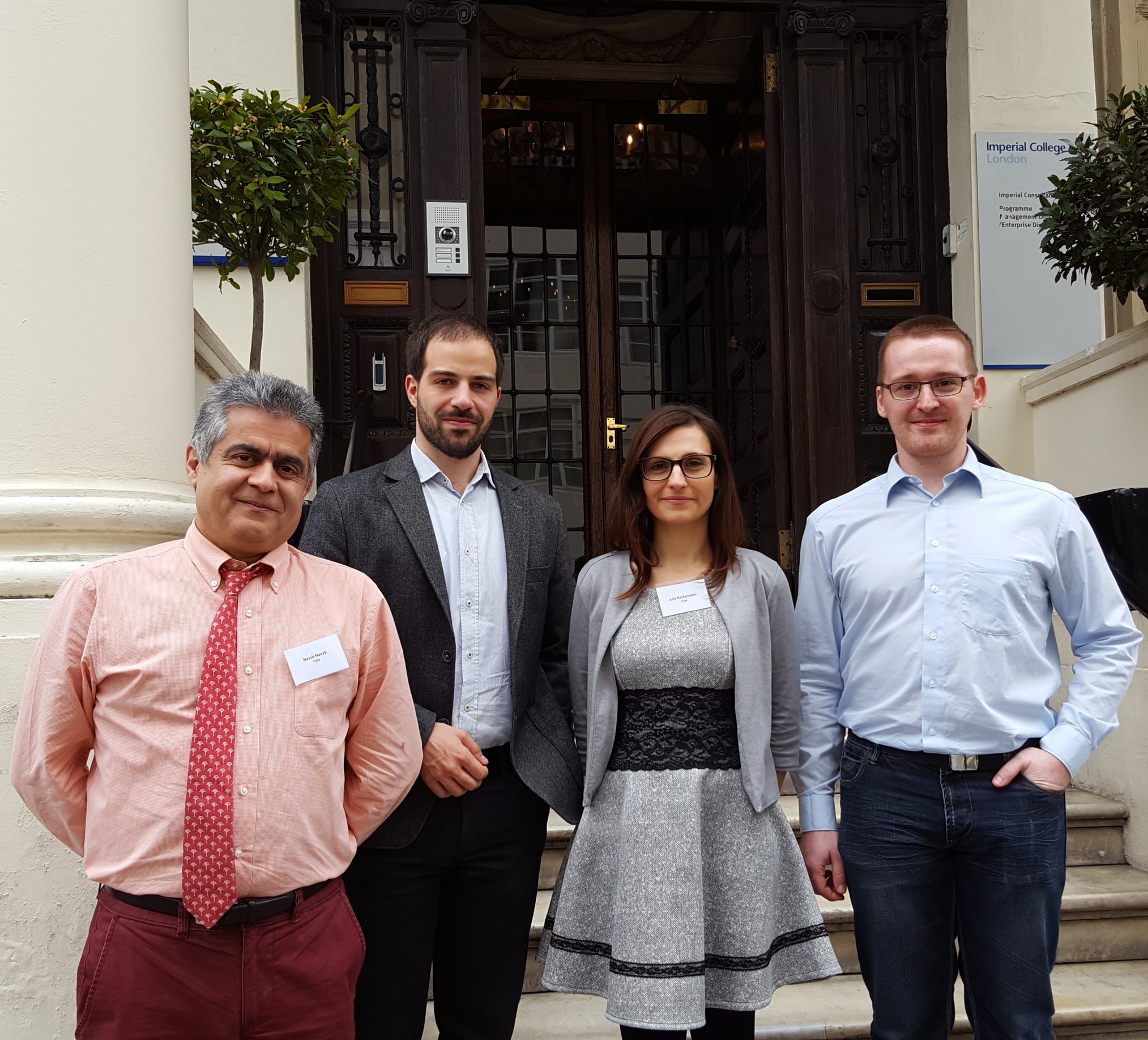 | 11 April 2016, London Kick-off of EU Project Eden2020 We are happy to announce that on Monday the CAMP TUM team kicked-off the new European project Eden2020 at Imperial College London together with consortium partners across Europe. The goal of EDEN2020 is to develop an ehanced delivery ecosystem for Neurosurgery; more information to the project can be found on our project page. |
 | 8 April 2016, CAMP in the news We are being mentioned in a newspaper article on Medical Big Data! |
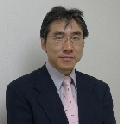 | 22 February 2016, MI 00.13.010 Computer Vision-based technologies for augmenting visual information Invited talk at 10:00am on Monday February 22 |
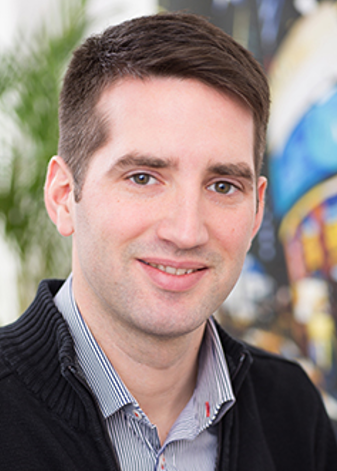 | 17 February 2016, Garching Talk from Jun.-Prof. Dr. Christian Hansen There will be an invited talk by Christian Hansen on Thursay, Feb 18, 2016, at 11am. |
 | 17 December 2015, IEEE Transactions on Medical Imaging (TMI) Feature Article Our joint effort on the first SPECT imaging using a miniaturized drop-in gamma detector and the da Vinci surgical system has not just been accepted for publication in the IEEE Transactions on Medical Imaging. , but is one of the currently featured articles. |
 | 26 October 2015, BBC reports on CAMP’s Medical Augmented Reality BBC Horizons program features a report on Medical Augmented Reality, showcases CAMP’s technology and interviews with Prof. Nassir Navab. |
 | 12 October 2015, Room 03.13.010 Understanding Medical Images Through the Lens of Genetics: a Statistical Modeling Approach Invited talk by Kayhan Batmanghelich, 4pm |
| 8 October 2015, Munich, Germany Medical Image Analysis Best Paper Award 2015 presented to Bjoern Menze The Medical Image Analysis Best Paper Award 2015 was awarded to Markus Rempfler, Bjoern Menze and co-authors from ETH Zurich, MPI Informatik, Northwestern University, and the Argonne National Lab for their paper entitled: Reconstructing cerebrovascular networks under local physiological constraints by integer programming. | |
| 8 October 2015, Munich, Germany Young Scientist Impact Award 2015 presented to Bjoern Menze The “Young Scientist Impact Award” 2015 was awarded to Bjoern Menze for his article entitled: “A generative model for brain tumor segmentation in multi-modal images”, co-authored by Koen Van Leemput, Danial Lashkari, Marc-André Weber, Nicholas Ayache, and Polina Golland. It was presented at MICCAI 2010 in Beijing, China. | |
| 8 October 2015, Munich, Germany Young Scientist Award 2015 presented to Nicola Rieke We are very proud to announce that two of our current PhD candidates were acknowledged for their outstanding work presented at the international conference MICCAI 2015. | |
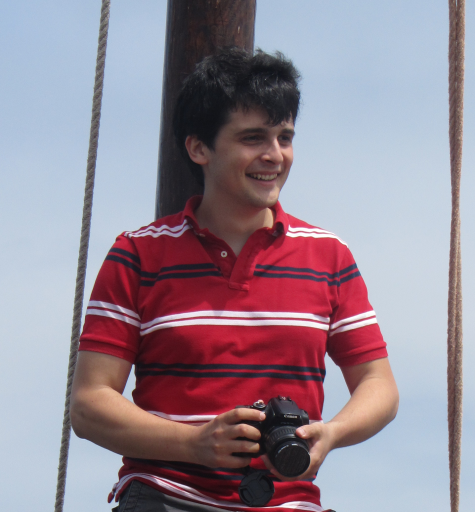 | 2 October 2015, Granada, Spain Alexandru Duliu receives the Best Paper Award at Digital Heritage 2015 The Digital Heritage 2015 best paper award goes to Alexandru Duliu et al. for their work on 'Illumination Compensation for High-Resolution Multispectral Image Mosaicing of Heritage Paintings. |
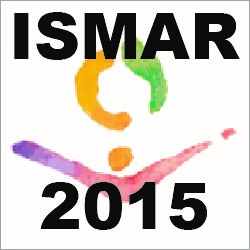 | 2 October 2015, Fukuoka, Japan 10 Year Lasting Impact Award presented to Nassir Navab Prof. Nassir Navab has been awarded with the 10 Year Lasting Impact Award at ISMAR. He was honored for overall contributions to augmented reality, with a particular focus on medical augmented reality on October 2, 2015 within the IEEE ISMAR in Japan. |
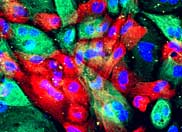 | 30 September 2015, CAMP won Prostate Cancer DREAM challenge Members of the Chair of Computer Aided Medical Procedures (CAMP) participated in the Prostate Cancer DREAM challenge and were able to win one of three subchallenges. |
 | 25 September 2015, FMI-Building, Room 03.13.010 PhD defense of Jakob Vogel: Tomographic Reconstruction beyond Classical X-ray CT For years, simplifying assumptions have been necessary in X-ray Computed Tomography to make the reconstruction of images feasible. Only recently, computer hardware has become powerful enough to tackle problems classically beyond reach. This thesis discusses three such problems: Reconstruction from incoherent measurements of a beating heart, automatic path planning enabling optimal patient-specific sensor trajectories, and X-ray scattering tomography yielding information about sub-voxel structures. |
 | 24 September 2015, FMI-Building, Room 03.13.010 PhD defense of Mehmet Yigitsoy: Local and Global Consistency Measures in Intensity-based Medical Image Registration Image registration is described as the process of bringing images into an alignment. One application of image registration in medical imaging is the construction of a larger field of view of a scene from its partial views. Intensity-based methods try to find an alignment in terms of intensity matches in the overlap. However, in cases when the size of the overlap is small or the information therein is unreliable, this often leads to a structurally inconsistent, suboptimal alignment. Hence, this thesis investigates this problem and introduces a series of structural consistency measures as local and global regularization for intensity-based registration of partial images. |
 | 2 September 2015, FMI-Building, Room 03.13.010 Human Pose Estimation in Complex Environments Estimating human body poses from images is a demanding task that has attracted great interest from the computer vision community. Determining automatically the body pose promotes many applications such as human tracking, motion capture, activity recognition, surveillance and surgical workflow analysis. This work addresses the problem of human pose estimation from different perspectives. |
 | 24 August 2015, TUM Main Campus, Room EG.120 Deep Learning: What's the buzz all about and harnessing the power of self hierarchical learning Deep learning has been extensively used to efficiently solve and provide state of art solutions to problems like handwritten character recognition, speech recognition, lexical ordered speech synthesis, object and product recognition, image retrieval, content filtering, product visibility tracking, computational medical imaging. This workshop will focus on the buzz around this topic and how firm does the buzz hold on to the claims it boasts of? Also we would host a hands-on tutorial with implementing a deep network using auto encoders for solving the hand-written digit recognition problem. |
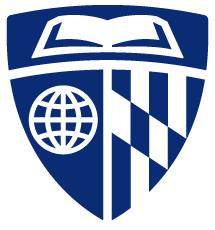 | 21 August 2015, 03.13.010 A Residual Approach to Multi-agent Fault Detection and Isolation Using Asynchronous Belief Propagation for Fault-free Modelling of a Naval Vessel's Chilled Water System The requirements of fault diagnosis and isolation (FDI) for fully or semi-autonomous systems that must operate for long durations in adverse conditions outstrips the capacity of centralized monolithic approaches. Multi-agent FDI (MAFDI) is a means of addressing the need by placing the workload across many components. This work proposes a fault-free model of a system’s configuration. A controller combines the configuration estimate with its local knowledge of previous commands and control objectives to create a fault assessment. The fault-free model is implemented using strictly local belief propagation messages over a factor graph. The model is tested on a simulation of a testbed for a naval vessel’s chilled water fluid system. |
 | 24 July 2015, Technische Universität München, Arcistr. 21, Munich Computer Vision and Medical Image Analysis Meetup Munich The second meeting of the 'Computer Vision and Medical Image Analysis Meetup' group of Munich will take place on the 24th July 2015 in room EG.0120 of the main building of the technical university of Munich in Arcistr. 21. This meeting is endorsed by CAMP and its purpose is to bring together enthusiasts, professionals, researchers and students to discuss about recent advancements in the field of computer vision and medical image analysis. |
 | 19 June 2015, 03.13.010, TUM PhD defense of Christoph Hennersperger: Domain-Specific Modeling for Vascular Freehand Ultrasound Sonography is the modality of choice for initial examinations in vascular applications, but suffers from high operator-dependency and variations in acquisition parameters in 3D. With the goal of an improved quality and reliability, this thesis introduces a set of mathematical and technical methods, incorporating domain-specific knowledge in the whole ultrasound processing chain. This includes a novel solution for the acquisition of 3D+t US data as well as both physically and biologically inspired models for an improved processing of ultrasound data. |
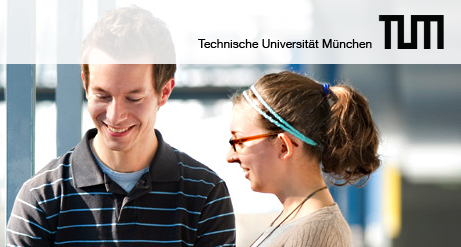 | 9 June 2015, TUM Image Guided Surgeries lecture in the TUM News Image Guided Surgeries lecture in the TUM News - Simultaneous medical technology lecture via video conferencing with University of Magdeburg |
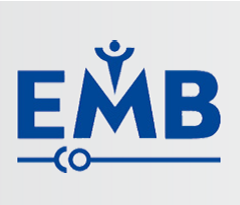 | 20 May 2015, The IEEE EMBS 2015 Best New Student Chapter Award We are pleased to announce that the Technical University Munich Chapter hosted by our CAMP chair has been selected as the 2015 Best New Student Chapter. Our activities have been recognized internationally for providing valuable, local interactions among members of the Biomedical community and enabling learning by distinguish guest lectures, field trips and panel discussions. |
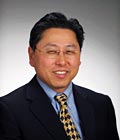 | 23 April 2015, Pavilion, Klinikum rechts der Isar IEEE EMBS Lecture: Dr. Larry Nagahara, Associate Director, Cancer Biology, National Cancer Institute More than 40 years ago, the U.S. government declared a “war on cancer” and committed to investing in laboratory and clinical research in order to understand the causes of cancer and thereby aid its diagnosis, treatment, and cure. Despite enormous advances and important improvements in the diagnosis and treatment of many cancers, the “war” has in significant ways progressed less than originally hoped. The complexity of the disease is clearly evident by the dynamic and evolving course the disease takes during its progression and response treatment. |
 | 15 March 2015, Washington, D.C. Dr. Ali Kamen elected Fellow of the American Institute for Medical and Biological Engineering We would like to congratulate our long term research partner, Dr. Ali Kamen, a Principal Key Expert in Imaging and Computer Vision at Siemens Corporate Research, who has been elected Fellow of the American Institute for Medical and Biological Engineering. |
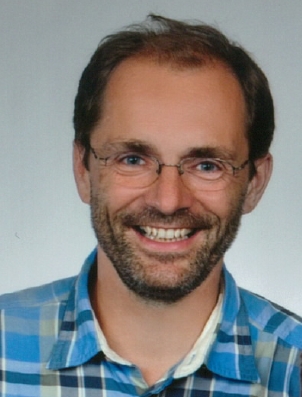 | 8 January 2015, Seminar room MI 03.13.010, TUM Informatics Faculty, Garching Invited Talk by Prof. Jiri Matas In this talk, we propose retrieving the most dissimilar images of the object depicted in the query and develop two novel methods for a particular instances of dissimilarity search: the zoom-in and zoom-in for finding the maximum and minimum spatial resolution depicting the query. iri Matas is a full professor at the Center for Machine Perception, Czech Technical University in Prague. He has published more than 200 papers in refereed journals and conferences. Google Scholar reports about 20 000 citations to his work and and an h-index above 50. |
 | 8 January 2015, Room 02.09.023, FMI-Building PhD defense of Stefan Holzer: Learning-based Approaches for Template Tracking and Interest Point Detection The first part of this thesis focuses on learning-based template tracking approaches, with the goal to follow the position of an object or region within an image sequence. The second part of the thesis focuses on fast methods for 3D data processing. This includes an efficient normal estimation method as well as a learning-based approach for interest point detection in depth maps. Stefan's thesis resulted in a series of most prestigious conference and journal publications including PAMI, IJCV, ECCV, CVPR, ACCV, IROS, BMVC and ICCV. |
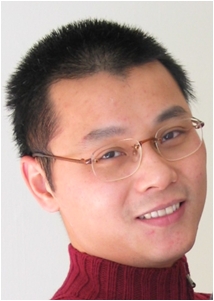 | 11 December 2014, 00.13.009A Invited Talk by Dr. Kevin Zhou Although medical image detection and segmentation has been actively studied over the past two decades, conventional methods mostly focus on detection and segmentation algorithms for a single object typically with some manual inputs. Recently with the availability of large datasets and the advance of statistical machine learning, a new trend that goes beyond the conventional wisdom has emerged ... ----- Bio Dr. S. Kevin Zhou obtained his Ph.D. degree in Electrical Engineering from University of Maryland and is currently a Principal Key Expert of Whole Body Image Analytics at Siemens Corporate Technology ... |
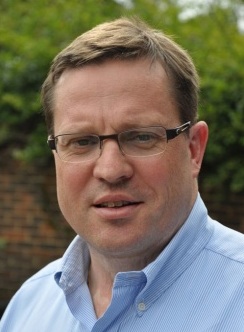 | 5 December 2014, TUM TeachInf Award 2014 presented to Michael Friebe Michael Friebes lecture Translational Technology Entrepreneurship was ratet the best elective course at the faculty of Informatics and Mathematics at the TUM in the Summer Semester 2014. |
 | 21 November 2014, CAMP Seminar Room Invited Talk by Prof. Samuel Kadoury Spinal deformities such as adolescent idiopathic scoliosis are complex 3D deformations of the musculoskeletal trunk, which can be classified into multiple groups based on shape patterns and can ultimately dictate treatment decisions. This presentation will expose computational methods based on manifold learning to classify deformation patterns, reconstruct the spine geometry ... |
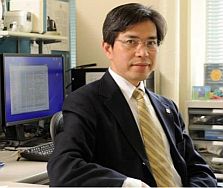 | 10 October 2014, CAMP Seminar Room Invited Talk by Prof. Hideaki Haneishi: Center for Frontier Medical Engineering The seminar will focus on: (i) Catheter roadmap display under natural respiration by use of diaphragm region, and (ii) Registration between pathological image and MR image for comparing different modality images of brain tumor. |
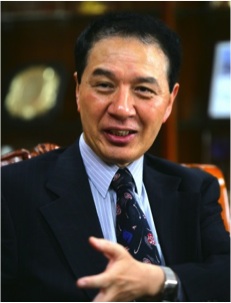 | 29 September 2014, Auditorium C, Klinikum rechts der Isar IEEE EMBS University Lecture Series: Prof. Yongmin Kim, President of POSTECH University, Korea Translational research from lab bench to the marketplace where products and services are provided and consumed is far more difficult and time-consuming than many people estimate or are willing to tolerate. In spite of these challenges, successfully commercializing our research results is the most rewarding experience as an engineer and researcher. In this presentation, Prof. Kim will share his experiences and opinions on the obstacles and formula of success (or failure) in academic research and technology commercialization. |
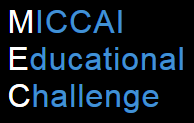 | 17 September 2014, MICCAI Educational Challenge 2ND PRIZE |
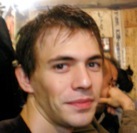 | 11 September 2014, MI 03.13.010 Invited Talk by Dr. Pierre Georgel Ex-CAMPer Dr. Pierre Georgel will be talking about his current field of work at Google and the change from academia to industry. He received his PhD? from TUM in 2011 and spend some time at UNC with Jan-Michael Frahm before leaving academia in 2012. |
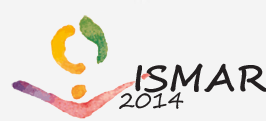 | 9 September 2014, Garching ISMAR conference: A 'Look Into' Medical Augmented Reality |
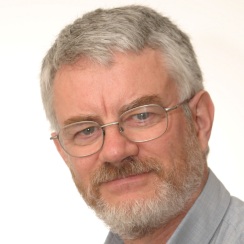 | 8 September 2014, MI 03.13.010 IEEE EMBS Distinguish Lecture by Dr. Terry Peters: A journey from radio astronomy to image-guided surgery Dr. Peters' laboratory, Robarts Research Institute, is concerned with the development and validation of tools that allow surgeons to make efficient use of images, produced by sophisticated 3-D imaging systems, during surgical procedures. The objective of minimally-invasive neurosurgery is to resect or lesion the smallest volume of brain tissue, causing the least trauma to the patient while achieving the desired therapeutic result. |
 | 8 September 2014, MI 03.13.010 Doctoral Defense by Sasa Grbic: Advanced Valve Modeling and Multi-Modal Fusion for Minimally Invasive Valve Procedures |
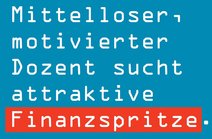 | 20 August 2014, Munich TUM Teaching Award 2014 Our teaching concept Master Preparation Courses - Mathematics and Programming has been selected to receive special support from the TUM Teaching Funds |
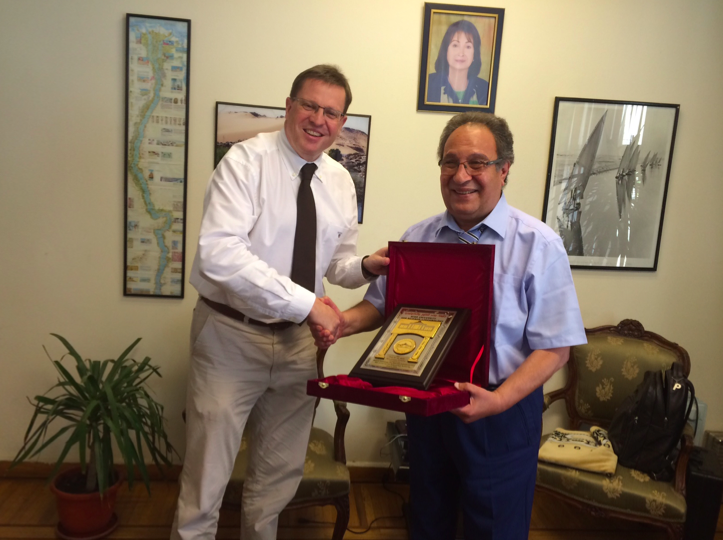 | 20 August 2014, Michael Friebe, PhD nominated Honorary Professor Misr University of Science and Technology is honoured to announce that Michael Friebe, PhD (Rudolf-Diesel-Fellow at the TU München, Germany) has been nominated Honorary Professor of the Faculty of Engineering. |
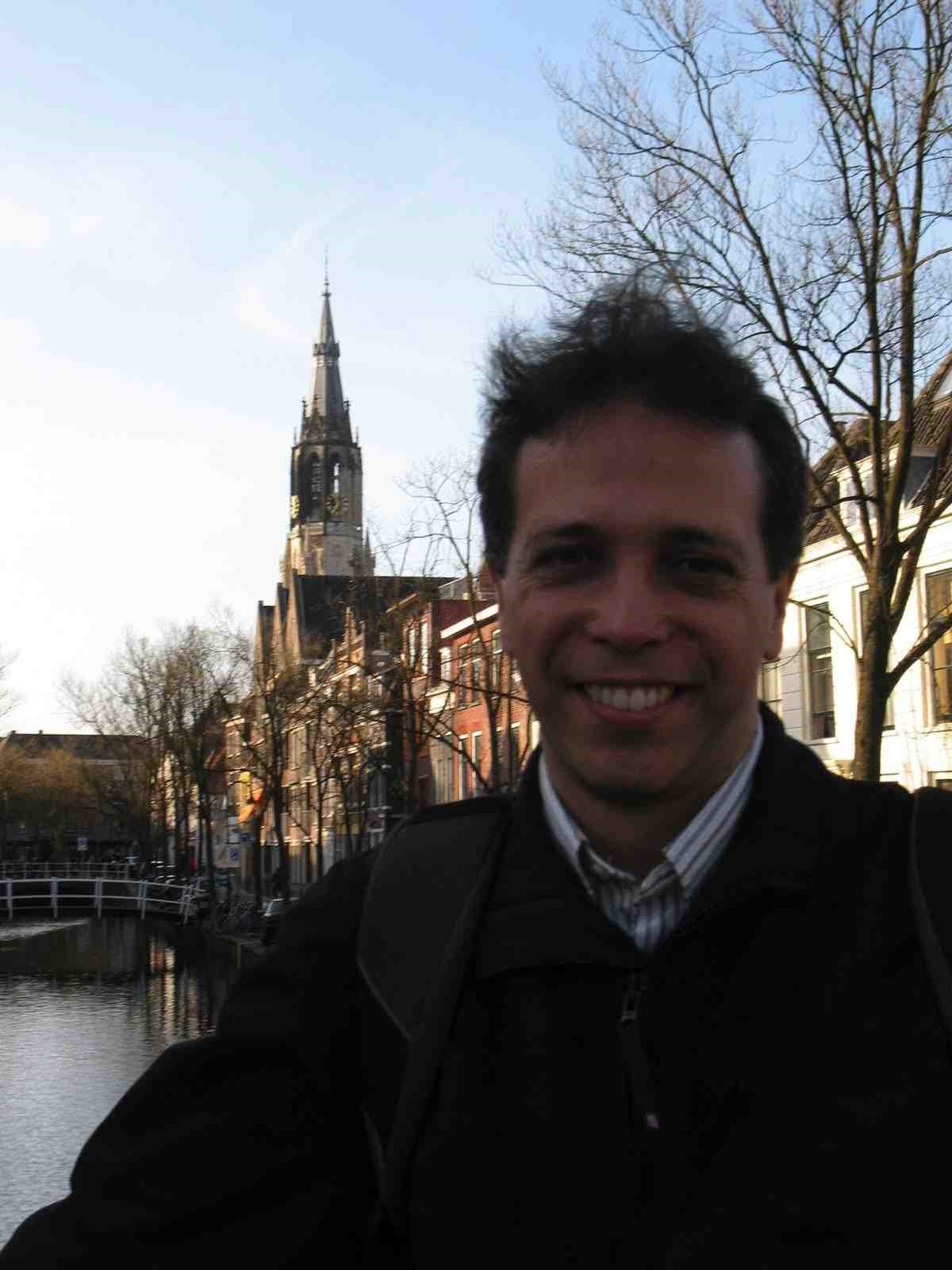 | 8 July 2014, Munich Dr. Gustavo Carneiro receives Humboldt Research Fellowship for Experienced Researchers It is our great pleasure to announce that Dr. Gustavo Carneiro (Associate Professor at University of Adelaide, Australia) has been selected to receive the highly competitive Humboldt Research Fellowship for Experienced Researchers and will join our group for 6 months starting in August 2014. |
 | 3 July 2014, Munich Prof. Greg Hager, Chair of Computer Science at JHU, receives IAS Hans-Fischer-Senior-Fellowship We are very delighted to announce that Prof. Greg Hager Chair of Computer Science at Johns Hopkins University has been selected to receive the prestigious IAS Hans Fischer Senior Fellowship. This Fellowship is named after TUM Professor Hans Fischer (1881-1945), who was awarded the Nobel Prize in Chemistry in 1930 for his pioneering work on hemoglobin and related structures. Outstanding international scientists, who intend to explore innovative, high-risk topics in their scientific research areas together with a TUM Research Group for a duration of three years, are eligible for a TUM-IAS Hans Fischer Senior Fellowship. This affiliation strengthens our strong links with JHU towards a joint center in computational medicine. |
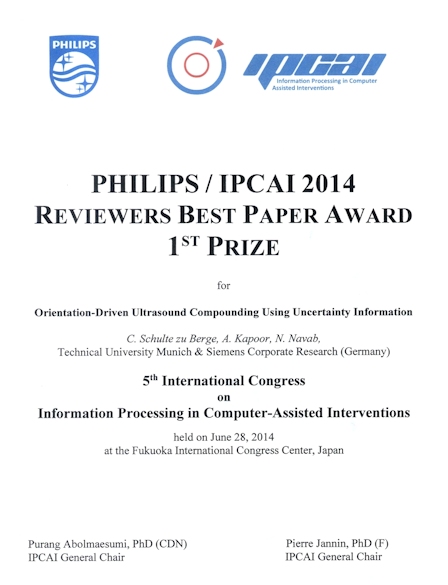 | 28 June 2014, Fukuoka, Japan Best Paper Award at IPCAI 2014 We got the Reviewers Best Paper Award at the 5th International Conference on Information Processing in Computer-Assisted Interventions (IPCAI 2014). IPCAI 2014 was held on June 28 in Fukuoka, Japan (co-located with CARS). Based on a highly selective double anonymous review process, IPCAI is aiming at organizing an event in which the best conference articles in computer assisted interventions are reviewed, selected, presented, and actively discussed. |
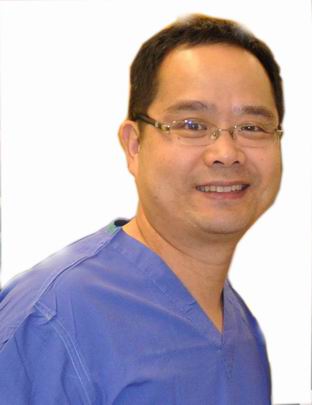 | 10 June 2014, IMETUM Hörsaal Distinguished Lecture and GSISH talk by Dr. Bin Zheng: Increasing Role of Medical Images in Image-guided Surgery On a daily basis, surgeons refer to information presented in medical images before entering the OR. Once surgery starts, medical images have a more passive role in the action plan. The roles of medical images are often diagnostic (used as a map) rather than therapeutic (used as an assistant). In this presentation, I will discuss a few attempts we developed in the U of Alberta to enhance the role of medical images inside the operating room, exploring the impact of image-integrated concept on pre-surgery planning, surgical performance, and on surgeons’ mental readiness. |
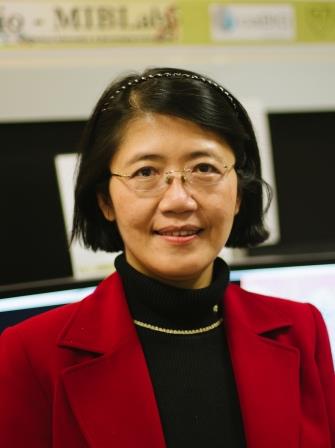 | 6 June 2014, Lecture Hall E.126, IMETUM, Garching IEEE EMBS Distinguish Lecture by Dr. May D. Wang: Making Sense of Big Data Integrated Biomedical and Health Informatics for Personalized Care Rapid advancements in biotechnologies such as –omic (genomics, proteomics, metabolomics, lipidomics etc.), next generation sequencing, bio-nanotechnologies, molecular imaging, mobile and wearable sensors etc. give hope that personalized, predictive, preventive, and participatory health will become a reality. This talk will demonstrate case studies on how to take multiple informatics steps from data quality ... |
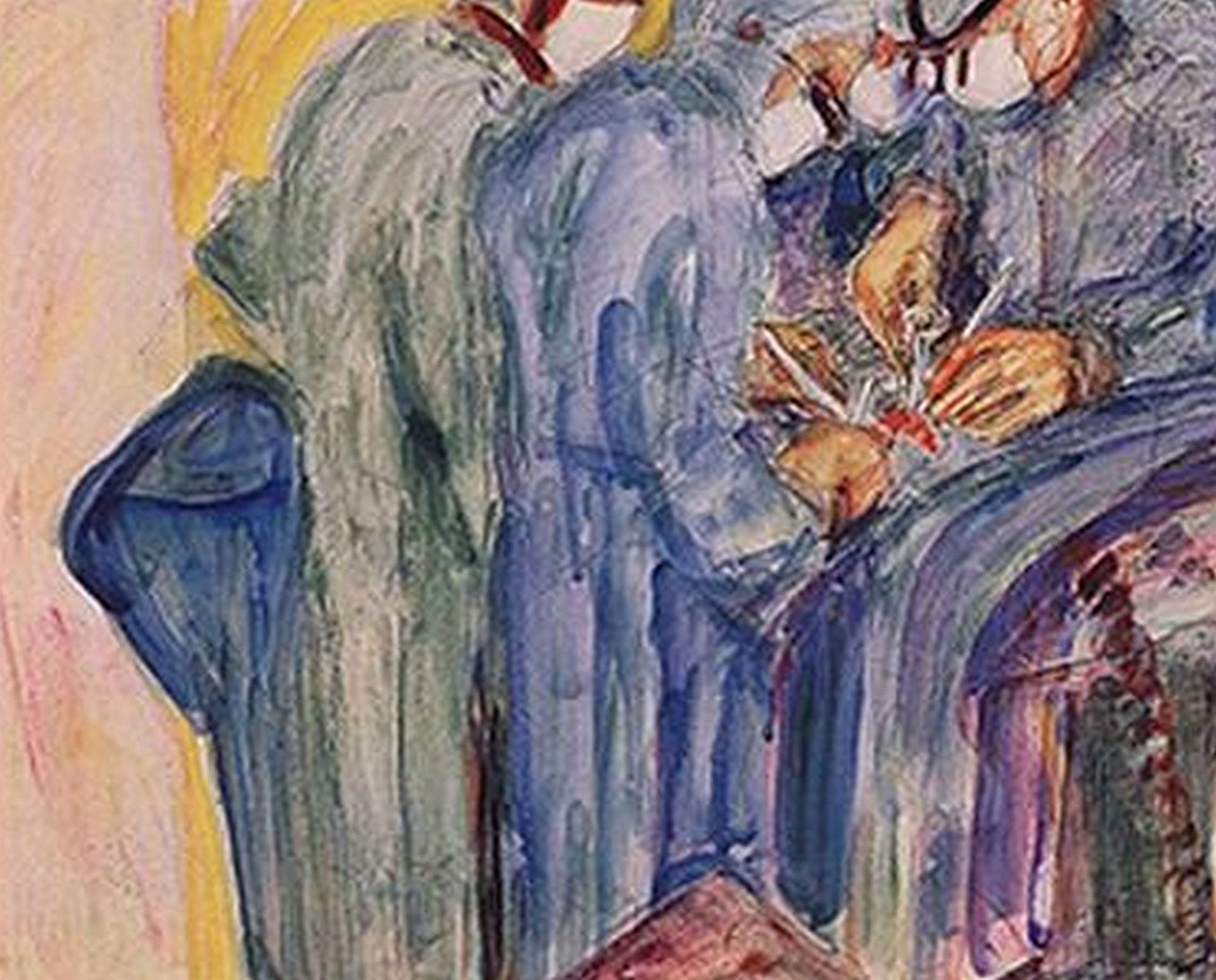 | 5 June 2014, Boston The 2014 Workshop on Augmented Environments for Computer Assisted Interventions (AECAI) |
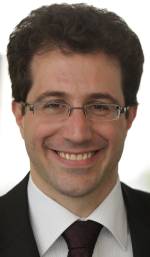 | 2 June 2014, CAMP Seminar Room Learning from neuroimaging and brain genomic data with brain graphs Modelling interaction between different parts of the brain as a graph has enabled systems-level insights into brain network topology and organisation. The graph view is also a powerful way of teasing out relationships between very different imaging and biological modalities. Recently, there has been interest in appropriate methods for statistical learning with brain graphs, in particular with applications to prediction for individual subjects in clinical neuroscience (diagnosis and prognosis) and cognitive neuroscience ('brain reading'). In this talk, I will first show a basic pipeline to extract brain graphs from resting-state fMRI data, and a few ways to represent the graphs via embedding ... |
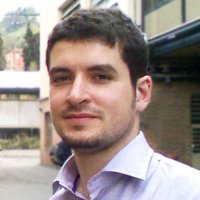 | 16 May 2014, CAMP seminar room Invited Talk by Federico Tombari: Detection of objects and structures of interest using shape information The talk will illustrate current techniques for the task of detecting objects and structures of interest in visual data under a variety of challenging conditions, focusing on the use of shape information. Initially, it will introduce state-of-the-art representations for 3D data enabling matching and correspondence estimation between point clouds and 3D meshes... |
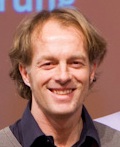 | 9 May 2014, MI 01.10.011, Garching Invited Talk by Dr. Ulrich Schreiber: EXIST funding for PolyAxNail PolyAxNail develops an innovative, polyaxial marrow nail for the treatment of bone fractures. These bone implants allow the surgeon maximum flexibility during the surgery, with following maximum stability for the patient. |
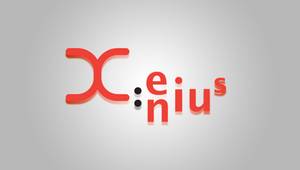 | 5 May 2014, Campus Garching Arte Xenius television report about CAMP Last week a team from Arte visited the CAMP chair for a report about our current projects and future research activities. Prof. Nassir Navab gave an interview which will be aired in a July episode of X:enius. |
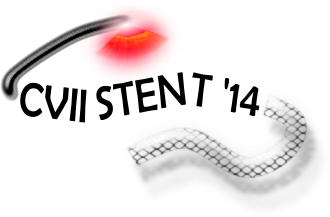 | 29 April 2014, First Call for Papers for the Joint MICCAI-Workshops on Computing and Visualization for Intravascular Imaging and Computer Assisted Stenting (CVII-STENT) Together with colleagues from other groups, we are organizing the Joint MICCAI-Workshops on Computing and Visualization for Intravascular Imaging and Computer Assisted Stenting (CVII-STENT) at MICCAI 2014. |
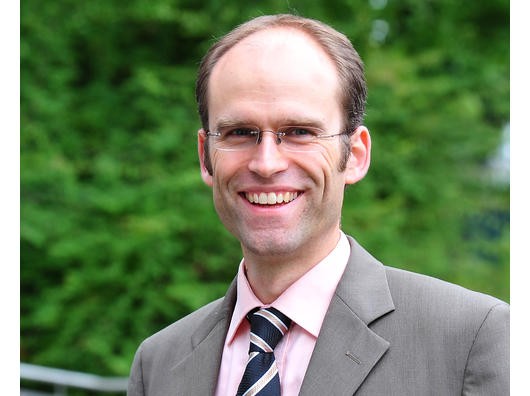 | 16 April 2014, Conference Room 0, TUM-IAS, Campus Garching Invited Talk by Gregor Schaefers: MRI Innovation MR:comp provides magnetic resonance (MRI) safety and compatibility testing and is participating in and leading research projects for MRI safety and compatibility of implants and devices and thus accompanying important development of numerical and experimental testing methods. |
| 4 April 2014, Innsbruck, Austria Workshop on Advanced Imaging and Visualization (ImVis) 2014 From May 19th through May 22nd 2014, the Workshop on Advanced Imaging and Visualization (ImVis) will take place in Innsbruck, Austria. | |
 | 3 April 2014, IMETUM Collaborative Workshop on Robotics and Telematics in Medical Imaging Together with representatives of the Robotics and Telematics group at University of Würzburg headed by TUM-IAS Fellow Prof. Dr. Klaus Schilling, we will host a joint session on Robotics and Telematics in Medical Imaging. This event is meant to analyze potential high-level collaboration projects of the two excellent groups. |
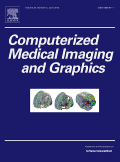 | 31 March 2014, Special Issue on Computer Assisted Stenting - Deadline extended to April 15, 2014 A Special Issue on Computer Assisted Stenting will appear within Elsevier Journal on Computerized Medical Imgaing and Graphics. |
 | 17 January 2014, Conference Room basement, TUM-IAS, Campus Garching Dirk Sunderbrink: Use of hybrid surgical suites for different applications and overview of technical solutions Dirk Sunderbrink joined Siemens in 1995 and served for more than 10 years in sales and business management for radiological information systems. Currently he holds the position of Global Marketing Manager for cardiology in angiography business unit. |
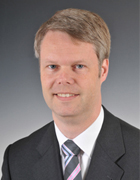 | 20 December 2013, Faculty Club, TUM-IAS, Campus Garching Invited Talk by Prof. Dr. Arno Bücker: Innovation in Radiology Arno Bücker is currently the chair of the clinic for diagnostic and interventional radiology at the University Clinic of the University of Saarland in Homburg, as well as professor for radiology. His research interest include new diagnostic imaging guided therapeutic applications, in particular interventional MRI. |
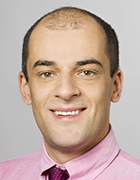 | 12 December 2013, MI 03.13.010 Imaging in five dimensions - real time volumetric multispectral optoacoustic tomography Recent applications of optoacoustics to biomedical imaging encouraged its translation into clinical practice. The talk concentrates on our efforts in translating the MSOT imaging technology into a high performance functional and molecular imaging modality routinely used in both pre-clinical research and clinical practice. |
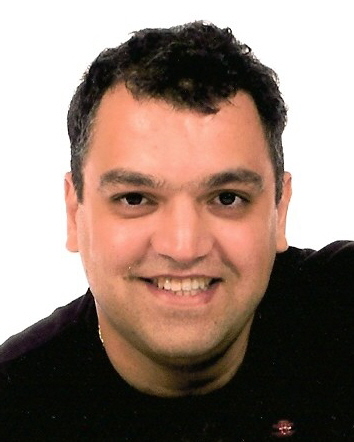 | 9 December 2013, MI 03.13.010 Toward personalized healthcare and companion diagnostics with imaging In this presentation, Ali Kamen is going to give a general description of personalized medicine and companion diagnostics, and show some applications of the concept based on medical imaging data. |
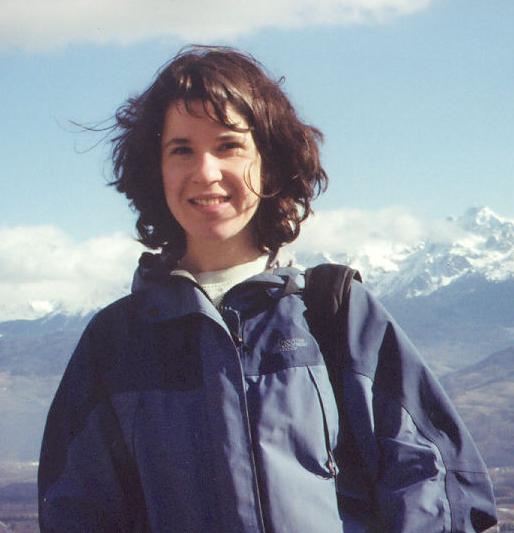 | 3 December 2013, MI 03.13.010 Invited Talk: Random walker based discrete deformable registration Medical imaging projects at University of Alberta, focusing on recent works on discrete deformable registration based on the random walker (RW) algorithm. |
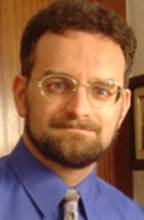 | 3 December 2013, Hörsaal Pavillon, Klinikum Rechts der Isar Summary of radio-guided surgery today and tomorrow Dr. Sergi Vidal-Sicart is an authority in radio-guided surgery on an international level. He was one of the introducers of the portable gamma cameras in the OR and is an excellent source of knowledge in the real life use of gamma probes, portable gamma cameras and freehand SPECT in the OR. |
| 27 November 2013, Nagoya, Japan CAMP students and alumni awarded prestigious MICCAI Awards We are very proud to announce that two of our alumni, one current PhD candidate, and one BMC Master student were awarded prestigious international scientific awards at MICCAI 2013. | |
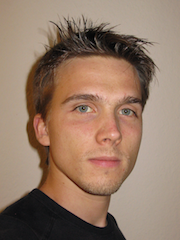 | 15 November 2013, Munich VDI Award 2013 goes to Matthias Wieczorek We are very proud to announce that Matthias Wieczorek won the VDI Award 2013 of the (Verein Deutscher Ingenieure) for his master's thesis Curvelet sparse regularization for differential phase-contrast X-ray imaging. |
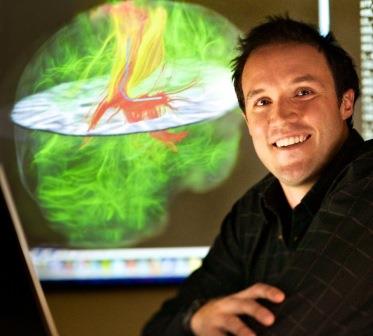 | 18 September 2013, Room: MI 03.13.010 Diffusion MRI tractography for neurosurgical planning Prof. Descoteaux is director of the Sherbrooke Connectivity Imaging Laboratory (SCIL). The lab focuses on brain connectivity from state-of-the-art diffusion MRI acquisition, reconstruction, processing & visualization. The aim of the SCIL is to better understand anatomical connectivity between cortical regions and characterize white matter integrity. Read more |
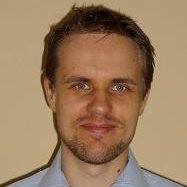 | 26 July 2013, Room: 03.13.010, FMI, Garching Stryker Freiburg - Introduction Dr. Oliver Kutter, one of our outstanding alumni and now Senior Domain Engineer at Stryker, gives an overview of current activties at the Freiburg subsidiary of the Stryker Group. |
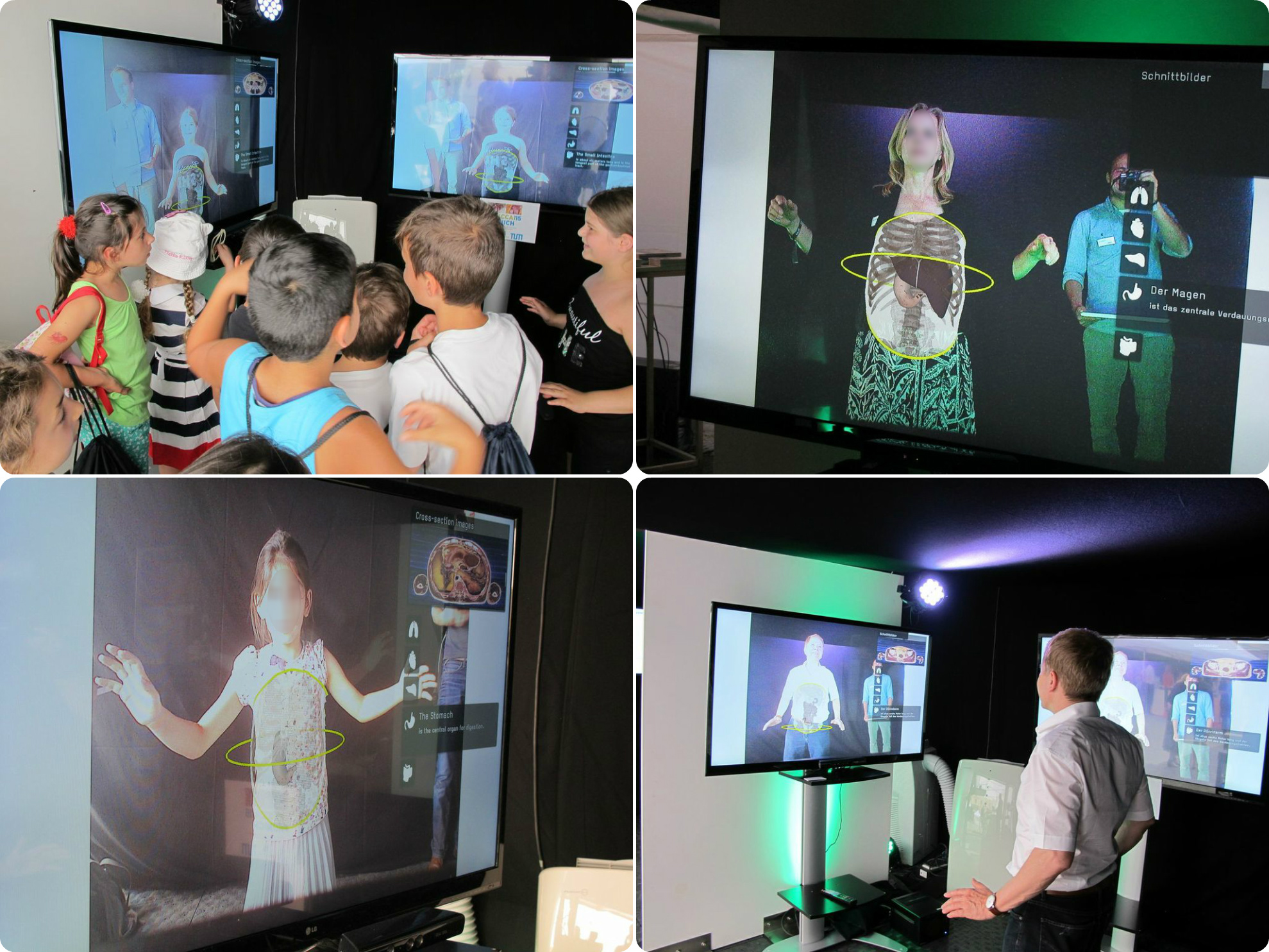 | 15 July 2013, Wittelsbacherplatz, 80333 Munich, Germany Magic Mirror Demo in DLDWomen13 We demonstrated our Magic Mirror Miraccle System at DLDWomen13 Night successfully on 15 July. A large number of visitors played with our program. Here are a few of many cool pictures of this event, which was sponsored by Siemens Corporate. |
 | 25 June 2013, Room: 00.12.019, FMI, Garching Doctoral Defense by Athanasios Karamalis: Ultrasound Confidence Maps and Applications in Medical Image Processing This dissertation introduces a novel method for confidence estimation from ultrasound images, denoted as ultrasound confidence map. The estimation problem is formulated as a random walk on a graph, taking into account ultrasound specific constrains. The method was successfully introduced into different ultrasound image processing applications and improved their results. |
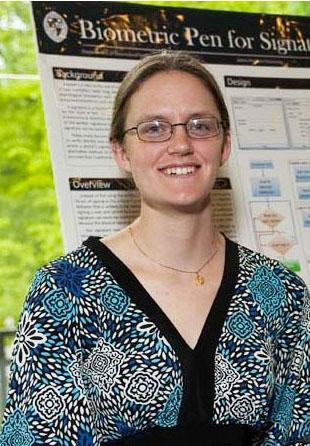 | 20 June 2013, MI 03.13.010 Ultrasound for Robotic Interventions: New Transducers and Techniques Caitlin Schneider, promising early-stage researcher UBC (Dr. Tim Salcudean), is presenting her high-level research results. |
 | 17 June 2013, 02.13.010 Contributions to Stereo Vision This work presents camera-based methods for dense scene reconstruction. In the context of binocular stereo vision, we introduce a novel algorithm for the efficient computation of dense disparity maps and a precise stereo method that is based on simulated random walks. Further,... |
 | 14 June 2013, TUM-IAS Auditorium, Garching Invited Talk by Dr. Rolf Sauter: The New Product Development Process for MEDTEC Products - a Holistic Observation For many businesses, the commercial success is based on the development of new products. The new product development process has multiple interactions with virtually all other business processes within the company. Read more |
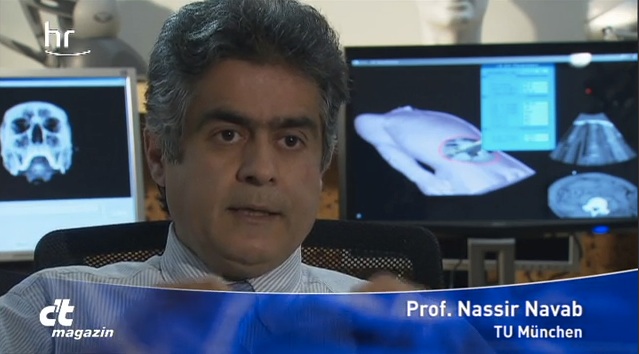 | 10 June 2013, Heise.de website A vision becomes reality - X-Ray glasses in the operating room In the video section of heise.de a short documentary about activities at our chair was published, click here for more information and the video itself. |
 | 10 June 2013, CARS Interview: Intraoperative image access advances Interview with Prof. Nassir Navab published on AuntMinnieEurope.com |
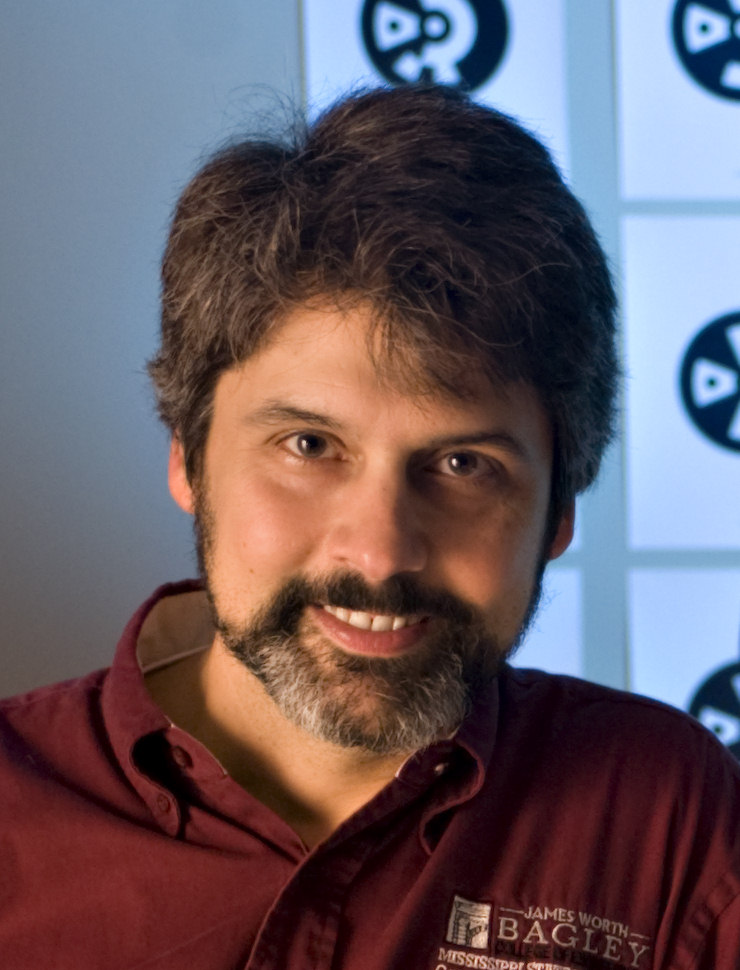 | 7 June 2013, TUM-IAS Auditorium, Garching Public Lecture by TUM-IAS Visiting Fellow Prof. Edward J. Swan II: How Do We Measure Depth Perception in Near-Field Augmented Reality? The perception of depth is an important aspect of augmented reality (AR): many AR applications have an important depth component, and AR displays do not display the depth of virtual objects with the same fidelity as real objects. Read more. |
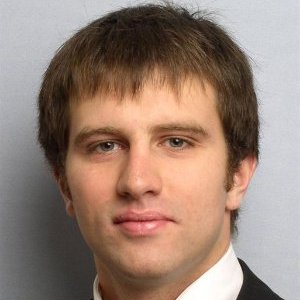 | 6 June 2013, Room: 03.13.010, FMI, Garching Invited Talk by Dr. Benjamin Frisch: Imaging the Breast - the positron emission mammography approach Breast cancer is the most frequent cancer amongst women. Since chances for full recovery are very good as long as it is detected at a sufficiently early stage, many countries have installed screening programs. Read more. |
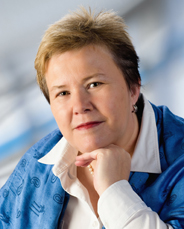 | 29 May 2013, TUM-IAS Auditorium, Garching Lecture Series 'Science and Society – Meet with Excellence': Prof. Ulrike Felt 'Innovation-driven futures and knowledge-able citizens' For more information go to the TUM-IAS website. |
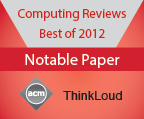 | 22 May 2013, Our paper has been selected as a notable paper in computing in 2012 Our paper "First Deployments of Augmented Reality in Operating Rooms" has been selected as a notable paper in computing in 2012. |
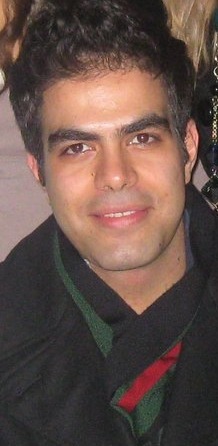 | 17 May 2013, Room: 03.13.010, FMI, Garching Ultrasound-Based Image Guidance for Robot-Assisted Laparoscopic Radical Prostatectomy A robotic transrectal ultrasound (TRUS) system for real-time monitoring of the prostate and periprostatic anatomy during robot-assisted laparoscopic radical prostatectomy (RALRP) will be described. Read more |
 | 17 May 2013, TUM-IAS Auditorium, Garching Kick-Off Session Focus Group Intra-Operative Therapy & Inaugural Lecture of TUM-IAS Fellow Dr. Michael Friebe The research activities of the group of IAS - Fellow Michael Friebe focus on the combination of minimal-invasive therapy techniques with diagnostic imaging and navigation techniques (e.g. application of intra-operative radiation therapy, MRI guided high focussed ultrasound, intra-operative SPECT with MRI guidance, ...). |
 | 14 May 2013, Room 00.13.009A; FMI-Building Invited Talk by Prof. Whitcomb: Extreme Robotics - Development of Hybrid Underwater Robotic Vehicles for Oceanographic Exploration This talk reports a brief overview of the Nereus vehicle design, and reviews the initial results of the dives conducted on these expeditions, including two dives to more than 10,900m depth. |
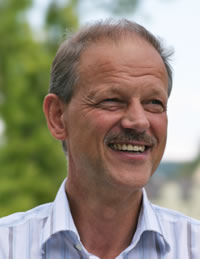 | 8 May 2013, Lecture hall, IAS High resolution CT of the breast at very low dose X-ray computed tomography (CT) has been proposed and evaluated recently as a potential alternative method for breast imaging. Efforts so far showed success with respect to contrast-enhanced dynamic imaging, but suffered from limited spatial resolution. Read more |
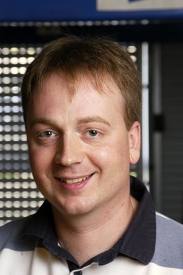 | 3 May 2013, Room 03.13.010, FMI-Building Invited Talk by Prof. Dr. Alexandre Krupa: Contributions to ultrasound visual servoing The objective of our research work is to control in a visual closed-loop manner the full motion of a 2D (US) ultrasound probe actuated by a medical robot in order to reach and track a desired cross-section image. Read more |
 | 29 April 2013, Room 01.07.014, FMI-Building PhD defense of Tobias Blum: Human-Computer Interaction for Medical Education and Training To optimally support medical education, computer systems need to make use of latest visualization techniques, allow for intuitive interaction and use appropriate domain models such that computer systems can interpret the interaction with the user and provide optimal feedback. |
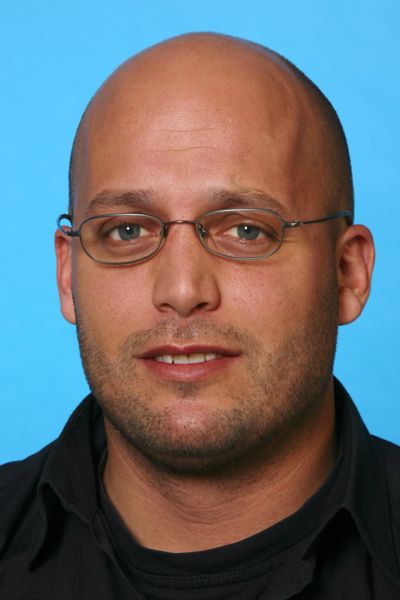 | 25 April 2013, IFL laboratory Prof. van Leeuwen: The value of hybrid imaging agents during robot assisted laparoscopic surgery To provide surgeons with optimal guidance during interventions, it is crucial that the molecular imaging data generated in the diagnostic departments finds its way to the operating room. |
 | 22 April 2013, Room 03.13.010, FMI-Building Introduction to Samsung Advanced Institute of Technology (SAIT) This talk will be an introductory talk about Samsung group and Samsung Advanced Institute of Technology(SAIT) and their various research domains and research interests in medical field. |
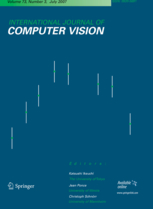 | 20 April 2013, Garching Prof. Nassir Navab joins the editorial board of IJCV Prof. Nassir Navab joins the editorial board of International Journal of Computer Vision IJCV. IJCV is one of the most prestigious and high ranking international journals in computer science. |
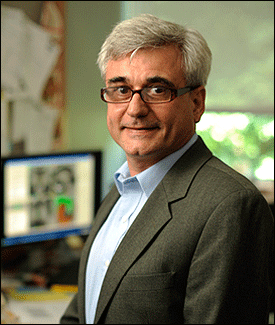 | 17 April 2013, Room 00.12.019, FMI-Building Advances in Pre-operative Planning of Deep Brain Stimulation (DBS) Surgeries Prof. Dawant will give the latest status on their Cranial-Vault system, which allows improved multi-modal image-guided pre-operative planning, intra-operative navigation and post-operative atlas building of Deep-Brain-Stimulation neurosurgeries. |
 | 16 April 2013, Room 03.13.010, FMI-Building PhD defense of Ahmad Ahmadi: Image Analysis Methods in Multi-View Transcranial 3D Ultrasound for Diagnosis of Neurological Movement-Disorders In the past decades, transcranial 2D ultrasound examination has established itself for diagnosis of neurological movement disorders such as Parkinson’s Disease. In this work, we introduce a complete system for a more objective, computer-assisted examination of the midbrain using 3D ultrasound. |
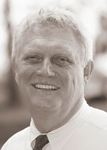 | 11 April 2013, Hörsaal C, Klinikum Rechts der Isar Prof. Meinzer: Was kann Medical Imaging zur Diagnostik und Intervention beitragen? Vortrag im Rahmen des Seminars der Forschungsgruppe MITI |
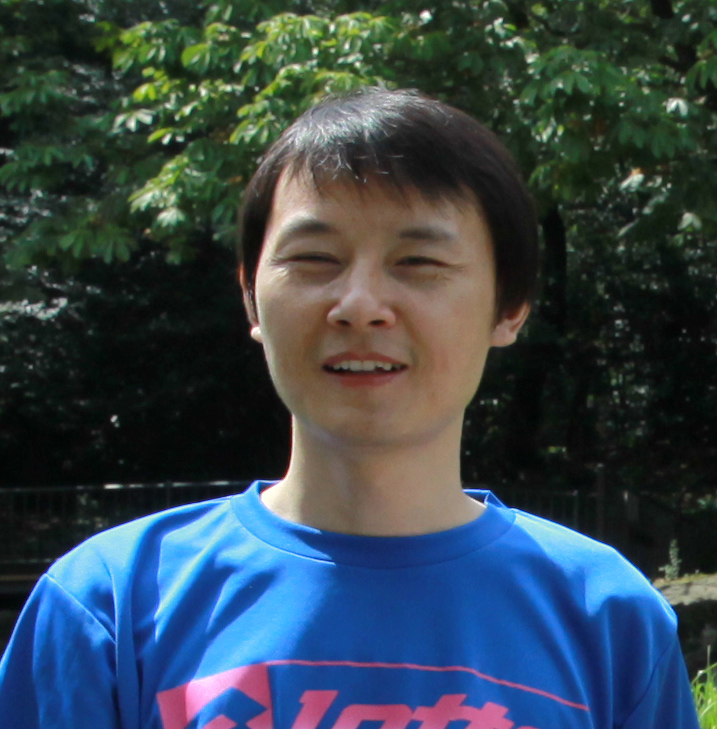 | 22 March 2013, Room 03.13.010, FMI-Building Electromagnetically Navigated Endoscopy: Evolutionary Optimization Methods Endoscopy is one of key steps of diagnostic surgery. Using electromagnetic trackers (EMT) to navigate an endoscope are increasingly introduced in endoscopic interventions... |
 | 22 March 2013, MICCAI-Workshop on Computer Assisted Stenting 2013 Together with colleagues from other groups, we are organizing MICCAI-STENT, the 2nd MICCAI-Workshop on Computer Assisted Stenting at MICCAI 2013. |
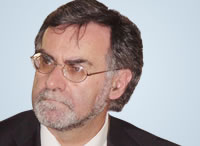 | 18 March 2013, Klinikum rechts der Isar, Hörsaal-Pavillon, Ismaninger Straße 22 MRI & Molecular Imaging: what's good for clinical translation? The possibility of exploiting the superb anatomical resolution of MRI continues to make this modality highly desirable for Molecular Imaging applications in spite of the low sensitivity of the currently available contrast agents. In the case of metal-based systems, the huge number of contrast agent units necessary to visualize a single cell by MRI discourages any attempt to go for a clinical translation when the Imaging probes have to report on molecules or molecular events in the intracellular compartment... |
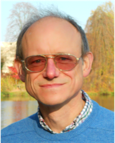 | 15 March 2013, Hörsaal Pavillon, Klinikum rechts der Isar Time-of-flight PET reconstruction with simultaneous estimation of the attenuation factors In positron emission tomography (PET), a quantitative reconstruction of the tracer distribution requires accurate attenuation correction. The attenuation correction is usually based on information obtained from transmission tomography (CT) or from MRI. We will discuss situations where such a direct measurement of the attenuation coefficient of the tissues is not available, unreliable, or incomplete. Methods to simultaneously estimate both the tracer distribution and the attenuation using only the emission time-of-flight PET data will be presented ... |
 | 12 March 2013, Room 00.12.019, FMI-Building, Garching, Boltzmannstr. 3 PhD Defense of Tobias Reichl: Advanced Hybrid Tracking and Navigation for Computer-Assisted Interventions Modern surgery is transitioning from traditional open surgery to minimally invasive procedures, and intra-operative imaging is increasingly used to refine surgical planning and to precisely target regions of interest. One fundamental requirement for image-guided interventions is the accurate knowledge about the spatial relations between all objects of interest. We critically review clinically established tracking technologies, including optical and electromagnetic tracking, and novel, upcoming technologies... |
 | 12 March 2013, Room 01.13.010, FMI-Building, Garching, Boltzmannstr. 3 Invited Talk by Prof. Kevin Cleary: Robotics, navigation, and image guidance for minimally invasive pediatric interventions This talk will give an overview of the recently established Bioengineering Initiative in the Sheikh Zayed Institute for Pediatric Surgical Innovation at Children’s National Medical Center, Washington, DC, USA. The mission of the Bioengineering Initiative is to serve as an engineering research for the hospital and work with clinical partners to develop technology for minimally invasive interventions. The technology developments include medical devices, medical robotics, image registration and fusion, and image-guided navigation for pediatric interventions ... |
 | 11 March 2013, 00.12.019 Initial Step Towards Augmented Human What are the challenges in creating interfaces that allow a user to intuitively express his/her intentions? Today's HCI systems are limited, and exploit only visual and auditory sensations. However, in daily life, we exploit a variety of input and output modalities, and modalities that involve contact with our bodies can dramatically affect our ability to experience and express ourselves in physical and virtual worlds. Using modern biological understanding of sensation, emerging electronic devices, and agile computational methods, ... |
 | 11 March 2013, 00.12.019 People Image Analysis - Detecting Humans and Visualizing Human Motions - An invisible environmental robot is a system that recognizes ever-changing human states based on input provided by a group of sensors such as cameras situated in an environment. An important role of such systems is to help create a comfortable space for human users. The quality of user actions can be enhanced by sensing the situations of humans including their movements, trajectory, posture, line of sight and facial expressions, and supporting the recognition of human behavior intentions. In the sensing technology, people image analysis (PIA) is essential to recognize the ever-changing human situations in real time. ... |
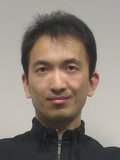 | 4 March 2013, MI 03.13.054 3D human pose tracking using action-specific motion and regression models We propose a unified model for human motion prior with multiple actions. Our model is generated from sample pose sequences of the multiple actions, each of which is recorded from real human motion. The sample sequences are connected to each other by synthesizing a variety of possible transitions among the different actions... |
 | 21 January 2013, 00.12.019, FMI-Building, Garching, Boltzmannstr. 3 Contributions to Real-time Visual Tracking and Live Environment Modeling for Augmented Reality Applications Seamlessly embedding virtual geometries in a live camera stream is only possible when accurate estimates of the camera poses and a map of the environment are available. To this end, two real-time methods have been developed within the scope of this thesis. The first method extends template tracking to 2.5D and targets convex objects. The second method reconstructs and tracks objects of arbitrary shape based on RGB-D images. Furthermore, a novel methodology for benchmarking visual tracking algorithms is presented. The camera motion is precisely recovered using an external measurement device. The first dataset specifically designed for planar template-based methods was published in 2009. This dataset is still used daily at metaio, it has also been used at several research institutes. |
 | 16 January 2013, Klinikum rechts der Isar Workshop Intra-Operative Imaging and Navigation Solutions The European Union's PicoSEC and EndoTOFPET-US research consortia organize a workshop on Intra-operative Imaging and Navigation Solutions on Wednesday, January 16, 2013 between 09:00 to 17:30 at Klinikum Rechts der Isar, Munich ( Pavillon ). This workshop will mainly cover topics pertaining to medical imaging, image analysis, image reconstruction, 3D ultrasound, tracking & navigation, medical machine learning and medical robotics as detailed below. If you are interested in attending this workshop then please register yourself by filling the required information in the e-form. |
 | 18 December 2012, Room 02.13.010, FMI-Building, Garching, Boltzmannstr. 3 PhD Defense of Tassilo Klein: Statistical Image Processing of Medical Ultrasound Radio Frequency Data In this thesis various methods are investigated on how to take advantage of medical ultrasound radio frequency (RF) data. RF data is the signal from which in the processing pipeline of ultrasound machines the commonly known B-mode image is generated. The comparably high resolution and the raw signal characteristics make RF data attractive for statistical image processing. In this respect, focus is devoted to the applications of correct spatial alignment of US data referred to as registration. At first methods are presented within the 2D domain, addressing issues such as textural and probabilistic description. Later this is expanded to 3D US freehand data and its reconstruction with a particular view on transcranial scans that are recorded for early diagnosis of Parkinson's disease. |
 | 11 December 2012, Room 01.09.014, FMI-Building, Garching, Boltzmannstr. 3 PhD Defense of Nicolas Brieu: Image-based Characterization of Thrombus Formation in Time-lapse DIC Microscopy The detection of salient events in video sequences displaying low contrast and high dynamic conditions is becoming of increased interest for the community of computer vision. This thesis introduces novel methods for the analysis of such scenes, and in particular for automatic detection of thrombus formation in low contrast in vivo microscopic image sequences. This application is of crucial interest for identifying genetic variations which lead to an increased risk of developing cardiovascular diseases (CADs). |
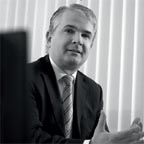 | 7 December 2012, Room 00.13.009A, FMI-Building, Garching, Boltzmannstr. 3 Invited talk by Dr. Arthur Kaindl, CEO at Siemens Healthcare Dr. Arthur Kaindl is Chief Executive Officer of the Siemens AG, Healthcare Sector, Business Unit Image and Knowledge Management. Within the context of the lecture Medical Technology Entrepreneurship held by Rudolf Diesel Industry Fellow and affiliated Professor Michael Friebe, Dr. Kaindl will give a talk about innovation and software at Siemens Healthcare. |
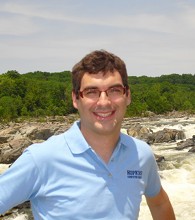 | 7 December 2012, Room: MI 03.13.010 Invited Talk by Dr. Nicolas Padoy: Context Modeling and Recognition for Human-Machine Cooperation in the Operating Room Modern surgery rooms are complex environments equipped with a great deal of high-technology equipment. Context-aware systems in such an environment could relieve surgical staff from performing simple but time-consuming tasks, and assist them with performing tedious tasks. The potential applications of such a system range from procedure documentation and safety monitoring to task automation and coordinated robotic assistance. In this talk, I will first present an overview of recent work aimed at developing a context-aware human-machine collaborative system for tele-surgery, prototyped on the da Vinci robot at the Johns Hopkins University. |
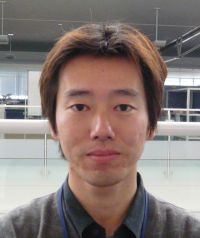 | 30 November 2012, Room: MI 03.13.010 Facial Image Sensing Technology 'OKAO Vision' I introduce OKAO vision which is facial image sensing technology. Our OKAO vision has various functions for human understanding. It is categorized to 1) detect human position by face / human detection, 2)recognize human attribute by face recognition, gender/ age estimation and eye open/close estimation etc, 3)recognize human behavior by object tracking, action recognition, and 4)estimate human intention. We have provided these functions to major DSC/DVC companies. I will explain and demonstrate these functions and show application examples. |
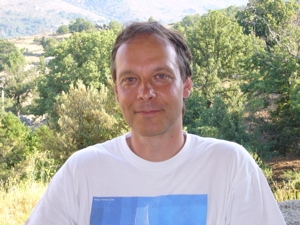 | 23 November 2012, IMETUM Hörsaal 1.126 Invited talk by Prof. Unser, EPFL: A spline framework for tomographic image reconstruction As part of the tum.reconstruction series of invited talks, Prof. Michael Unser from EPFL, Lausanne, will present a talk titled: A spline framework for tomographic image reconstruction. |
 | 20 November 2012, Room 01.13.007, FMI-Building, Garching, Boltzmannstr. 3 PhD Defense of Ali Bigdelou: Operating Room Specific Domain Model for Usability Evaluations and HCI Design Advanced computerized systems play a vital role in modern Operating Rooms (OR); however they can also be challenging for the OR crew while operating them. As a solution, in this work a specific domain model has been proposed. This model has been exploited in development of two supportive frameworks. The first framework is OR-Use, which is developed for conducting multicenter usability evaluations for intra-operative devices and facilitates the acquisition, management and analysis of usability data. The second framework is Signal.NET, a flexible framework that enables to define customizable, context-aware and human-centered interfaces for intra-operative solutions. These frameworks can be a basis for many other multi-disciplinary collaborations and studies in the future. |
 | 19 November 2012, Kyoto, Japan Ivan Sutherland Wins Kyoto Prize Ivan Sutherland, a pioneer in computer graphics now working at Portland State University, has won this year’s Kyoto Prize in Advanced Technology, an annual award from a Japanese foundation that recognizes significant technical, scientific and artistic contributions to the 'betterment of mankind.' Professor Navab gave an invited lecture within the workshop organized to honor Prof. Sutherland on November 12 in Kyoto. |
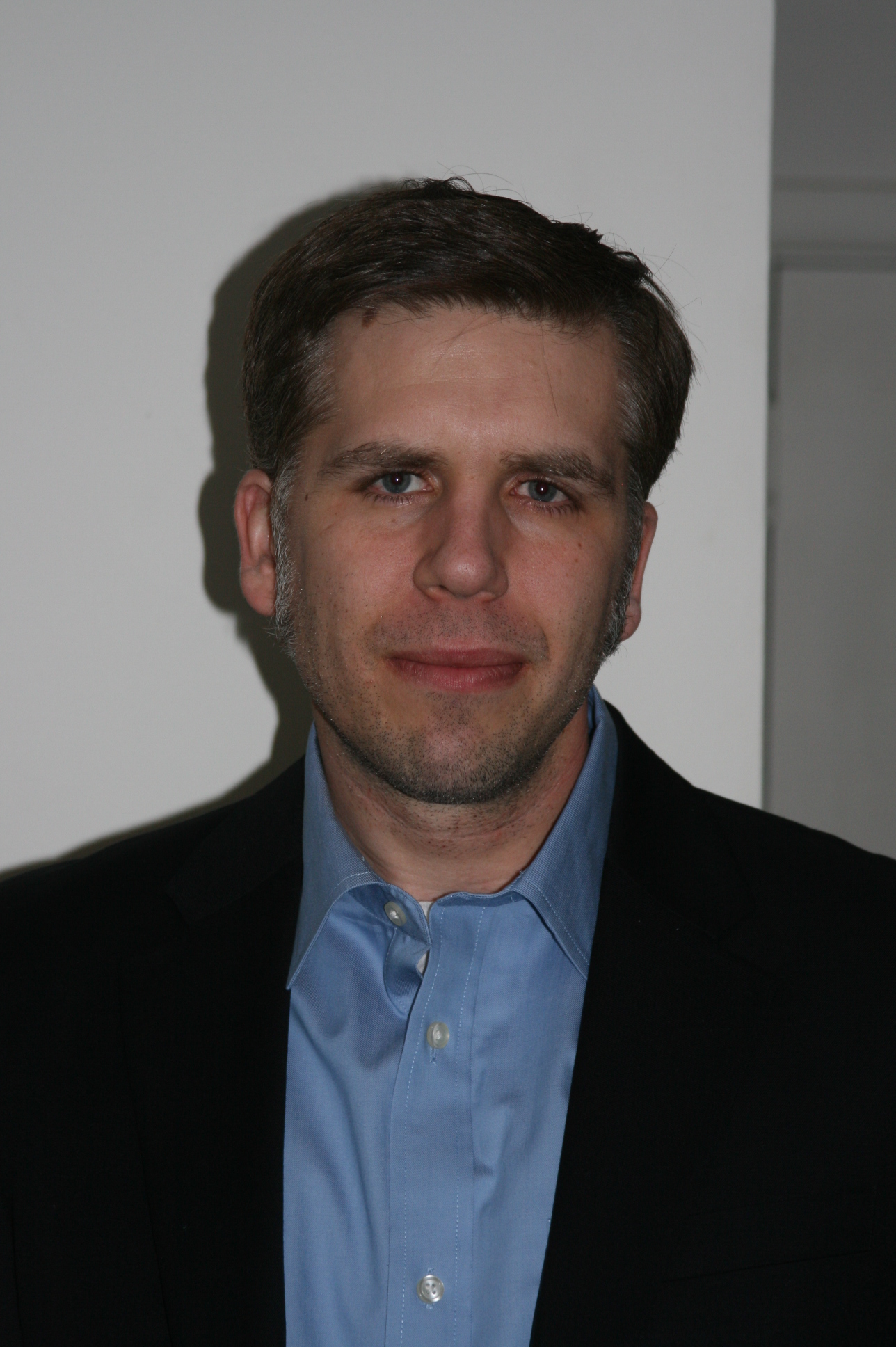 | 15 November 2012, Princeton, NJ Leo Grady receives the Edison Patent Award for medical imaging Our collaborator Leo Grady received the Edison Patent Award for medical imaging for his Random Walker patent (US Patent 7,460,709). A video with an interview about the patent can be found in this news post. The video with an interview about the patent can be found below. The video includes comments from two other colleagues, Marie-Pierre Jolly and Gareth Funka-Lea, who worked with Leo at Siemens Corporate Research. We congratulate Leo for this great achievement. Well deserved! |
 | 13 November 2012, Daejeon, South Korea Best Application Paper Honorable Mention Award at ACCV 2012 For their paper Efficient Learning of Linear Predictors using Dimensionality Reduction Stefan Holzer, Slobodan Ilic, David Tan and Nassir Navab received the 'Best Application Paper Honorable Mention' Award at the Asian Conference on Computer Vision (ACCV), Daejeon, South Korea,. |
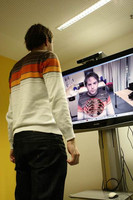 | 27 October 2012, Magistrale, Faculty for Information Science Research Campus Garching Open Day 2012 The Open Day at the Research Campus Garching will take place Saturday, 27.10.2012, this year from 11-18Uhr and the Chair for Computer Aided Medical Procedures will present two current research projects. |
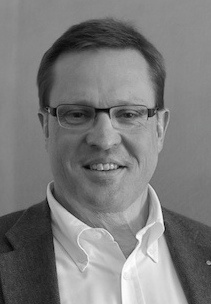 | 24 October 2012, Garching Dr. Michael Friebe is awarded Rudolf Diesel Industry Fellowship and Affiliated Professor A selected group of outstanding researchers from the industry with a strong connection to TUM Research Groups will become Rudolf Diesel Industry Fellows of the TUM-IAS. This year, Dr. Michael Friebe is among them and we are happy to welcome him as Affiliated Professor at the Chair for Computer Aided Medical Procedures. |
 | 12 October 2012, Hörsaal 1 Invited Talk by Prof. Robert Pless *Using all the Worlds’ Webcams* The web has an enormous collection of live cameras view image parks, roads, cities, beaches, mountains, ski-resorts, buildings and more. Over the last 5 years, I have been archiving imagery from most (>22000) publically available outdoor cameras, and working to understand how to effectively use this massively distributed resource as a tool for phenology, environmental and atmospheric measurement. Our approaches to analyzing this data set are inspired by a combination of time-lapse video artists Jason Salavon and Hiroshi Sugimoto and work to characterize the statistical invariants in images of natural scenes. I will talk about algorithms for automatically geo-locating, calibrating and inferring 3D scene structure from outdoor time-lapse imagery, interfaces to integrate the webcams with Google Earth and strategies that we have developed to visualize and categorize this data archive. I will conclude by describing early work that uses webcam data to evaluate satellite estimates of the spring green-up time of trees in North America and the potential for smart phone apps to allow citizen scientists to capture more calibrated and directed imagery |
 | 12 October 2012, Hörsaal 1 Invited Talk by Prof. Katsushi Ikeuchi We have been conducting the e-Heritage project, which converts assets that form our cultural heritage into digital forms, by using computer vision and computer graphics technologies. We hope to utilize such forms 1) for preservation in digital form of our irreplaceable treasures for future generations, 2) for planning and physical restoration, using digital forms as basic models from which we can manipulate data, 3) for cyber archaeology, i.e., investigation of digitized data through computer analysis, and 4) for education and promotion through multimedia contents based on the digital data. This talk briefly overviews our e-Heritage projects underway in Italy, Cambodia, and Japan. We will explain what hardware and software issues have arisen, how to overcome them by designing new sensors using recent computer vision technologies, as well as how to process these data using computer graphics technologies. We will also explain how to use such data for archeological analysis, and review new findings. Finally, we will discuss a new way to display such digital data by using the mixed reality systems, i.e. head-mount displays on site, connected from cloud computers. |
| 10 October 2012, Nice, France Prof. Nassir Navab became an elected Fellow of the MICCAI Society Within the award ceremony at MICCAI 2012, Prof. Nassir Navab joined the ranks of few notable medical imaging scientists worldwide as an elected Fellow of the MICCAI Society. | |
 | 8 October 2012, Room 01.07.014, FMI-Building, Garching, Boltzmannstr. 3 PhD Defense of Lejing Wang: Novel techniques for integrating video augmented X-ray imaging into orthopedic and trauma surgery The aim of this thesis is to propose novel image-guided solutions enabling optimal C-arm X-ray guidance for orthopedic and trauma surgery. The first major contribution to this thesis is investigating the surgical workflow in several orthopedic surgeries which would allow for the effective use of the Camera Augmented Mobile C-arm (CamC). The second contribution is the development and evaluation of parallax-free panoramic X-ray imaging. Finally, we propose a solution to optimally acquire X-ray images by modeling the C-arm and table setup as an integrated 6 degrees of freedom (DOF) kinematics chain. The proposed novel image-guided solutions are validated through pre-clinical experiments, including animal cadaver and dry bone phantoms, as well as clinical trials involving 43 patients. |
 | 30 August 2012, Room 00.05.035, FMI-Building, Garching, Boltzmannstr. 3 PhD Defense of Olivier Pauly: Random Forest for Medical Applications Machine learning incarnates a key component for integrating the knowldege and experience of physicians into medical imaging applications. Random forests are a popular learning algorithm consisting in an ensemble of independent decision trees. They are very intuitive models that offer a flexible probabilistic framework for solving different learning tasks. In this thesis, we formalize random forests models as ensemble partitioning approaches and propose novel related techniques for classification, regression and clustering. We introduce new task-specific forest models and demonstrate their great potential in different medical applications such as organ localization, segmentation and image categorization. |
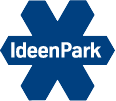 | 27 August 2012, Essen Augmented Reality Magic Mirror at the IdeenPark Between August 11th and 23rd we have presented our augmented reality magic mirror system together with Siemens at the IdeenPark in Essen. The IdeenPark is an event organized by ThyssenKrupp where interesting technology is presented to a broad public. About 320.000 people visited the IdeenPark and more than 2.000 people were using the magic mirror. Among them Philipp Rösler, vice chancellor of Germany, and Frank Steinmeier, previous vice chancellor of Germany. |
 | 8 July 2012, Vanderbilt University, Nashville, TN WBIR 2012 keynote by Prof. Navab Prof. Navab will give a keynote at the WBIR 2012, the fifth Workshop on Biomedical Image Registration. He will also give an invited talk at the Vanderbilt University on Fiday, July 6. |
 | 5 July 2012, MI 00.13.010 3D Visual Media for Mixed and Augmented Reality Professor Hideo, from the Department of Information and Computer Science,Keio University, Japan, will present his research work on 3D Visual Media. |
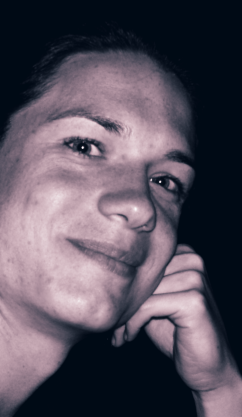 | 29 June 2012, MI 03.13.010 Invited talk by Lorenz König Invited talk by Lorenz König from NYU Medical Center. |
 | 22 June 2012, Room 00.05.035, FMI-Building, Garching, Boltzmannstr. 3 PhD Defense of Selen Atasoy: Endoscopic Video Manifolds for Scene Recognition in Targeted Optical Biopsy Recent introduction of probe-based confocal laser endomicroscopy (pCLE) enabled real-time and in-vivo visualisation of biological tissue on a microscopic level. Due to their non-invasive nature, optical biopsies involve the new challenge of re-targeting previous biopsy sites during surveillance examinations. In this thesis, a novel scene recognition method is presented to support the re-targeting of optical biopsy sites in surveillance GI-endoscopies. Drawing on the mathematical framework of manifold learning, a new representation for endoscopic videos is introduced. Experimental evaluation on real clinical data demonstrates the feasibility of the proposed methods as a promising step for assisting the endoscopic expert in re-targeting optical biopsy sites. |
 | 22 June 2012, Room 00.05.035, FMI-Building, Garching, Boltzmannstr. 3 PhD Defense of Loren Schwarz: Machine Learning for Human Motion Analysis and Gesture Recognition In this thesis, we investigate machine learning methods for human motion analysis. We introduce algorithms for human pose estimation and activity recognition that do not build upon conventional cameras and that can cope with noisy and incomplete input data. We propose methods that capture human movements using body-worn inertial sensors or using a depth camera. In a training phase, the measurements from these modalities are complemented with precise and complete movement information recorded with a camera-based motion capture system. A novel approach for learning models of human motion is introduced based on non-linear dimensionality reduction and regression that enables human pose estimation and simultaneous activity recognition, given only the inertial sensor or depth data. |
 | 19 June 2012, Third Most Downloaded Paper in 90 Days at Image and Vision Computing Journal Our paper Human skeleton tracking from depth data using geodesic distances and optical flow (L. Schwarz, A. Mkhitaryan, D. Mateus, N. Navab) is listed as third most downloaded paper of the Image and Vision Computing Journal in the period April to June 2012. |
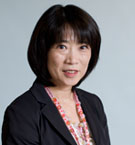 | 14 June 2012, Hörsaal D, Klinikum rechts der Isar Imaging Application in Pathology Digital Pathology is a relatively new field in medicine and still developing stage for clinical use. However, conventional pathology is rapidly shifting towards digital integration. After the Whole Slide Imaging Robot became available to produce virtual slides automatically, rapidly and a high resolution, many issues and limitations we had with telepathology and pathology imaging seemed to be solved. The combination of the WSI and Image Analysis can be very helpful for pathologists if it works right. We have developing the algorithm and protocol to improve the image quality and reliability to make images useful in practice. To promote imaging, we have developed several applications and tools including 1) an automated, image analysis algorithm that is trainable for various purposes and 2) histology 3D imaging, 3) a ultra fast WSI viewing system. Advanced imaging research such as multispectral imaging for digital staining is moving to the validation study. Research and efforts to validate WSI systems for diagnostic settings are ongoing. |
 | 23 May 2012, Institut für Medizinische Statistik und Epidemiologie, Building 523, Room 2.2 „Besprechungsraum“ Klinikum rechts der Isar, PhD Defense of Asad Safi: Towards Computer-Aided Diagnostic of Pigmented Skin Lesions Skin cancer is one of the most frequently encountered types of cancer in the Western world. According to the Skin Cancer foundation Statistics, one in every five Americans develops skin cancer during his/her lifetime. Today, the incurability of advanced cutaneous melanoma raises the importance of its early detection. Since the differentiation of early melanoma from other pigmented skin lesions is not a trivial task, even for experienced dermatologists, computer aided diagnosis could become an important tool for reducing the mortality rate of this highly malignant cancer type. In this thesis, a computer aided diagnosis system based on machine learning is proposed in order to support the clinical use of optical spectroscopy and dermatoscopy imaging techniques for skin lesions quantification and classification. |
 | 11 May 2012, MI 03.13.010 Invited Talk by Dr. Tommaso Mansi Patient-specific therapy planning is challenging due to the large variability in disease causes, locations and severity. Dr. Tommaso Mansi is going to present an integrated framework for multi-physics heart modeling based on medical images, relying on efficient machine-learning methods to estimate an accurate and comprehensive model of patient’s anatomy from MRI |
 | 11 May 2012, IMETUM Hörsaal 1.126 Real-time freehand SPECT reconstruction As part of the tum.reconstruction series of invited talks, Dr. Thomas Wendler will present recent developments on real-time freehand SPECT reconstructions. |
 | 27 April 2012, Room 03.13.010, FMI-Building, Garching, Boltzmannstr. 3 PhD Defense of Maximilian Baust about Polar Active Contours for Medical Applications The accurate and robust detection and tracking of objects in different kinds of imaging data is a fundamental task in computer vision, which can be achieved by so-called active contours. The contribution of this dissertation is the development of a novel class of polar active contours, i.e. a sub-class of active contours which can only describe star-shaped objects. These novel active contours enjoy several properties, such as an increased robustness to noise for instance, which are particularly desirable for medical applications, e.g. the segmentation of abdominal aortic aneurysms from computed tomography angiography data or the tracking of the left ventricular cavity acquired by magnetic resonance imaging. |
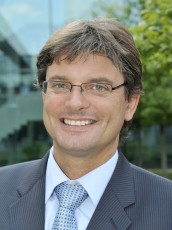 | 30 March 2012, IMETUM Hörsaal 1.126 Interventional Perfusion Imaging Computed tomography is rather advanced and experienced an immense innovation boost in the last decade. Nowadays reconstruction algorithms for rigid objects exhibit excellent image quality. Contrast and spatial resolution are sufficient for many diagnostic and interventional procedures. One out of many, but very demanding open problems in interventional imaging is still the three-dimensional reconstruction of perfusion processes using C-arm devices. The impact of such a system would be outstanding: perfusion measurements could be done during interventions using the existing imaging equipment. In this talk I will present initial algorithmic and clinical results for C-arm perfusion imaging in the interventional suite. |
 | 27 March 2012, Room 03.13.010, FMI-Building, Garching, Boltzmannstr. 3 PhD Defense of Victor Castaneda about Constructive interference for Multi-view Time–of-flight acquisition This thesis describes a novel method for acquiring depth images using multi-view Time of Flight (ToF) cameras, which uses a constructive interference between the emitted signals to enhance the depth accuracy. This work proposes to combine the measurements of the multi-view cameras at the acquisition level, in opposite to approaches that filter, calibrate or do 3D reconstructions posterior to the image acquisition. This work presents an example using a pair of ToF cameras in stereo-set-up defining a three-stages procedure, in which the infrared lighting of the scene is actively modified. This thesis also presents two applications of Monocular Simultaneous Localization and Mapping (MonoSLAM). The first application is using MonoSLAM in endoscopic images and the second one in a RGB-D sensor. |
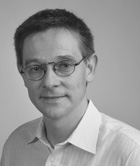 | 14 March 2012, 3D Scene Understanding - It's Time to Address it Again Inspired by the ability of humans to interpret and understand 3D scenes nearly effortlessly, the problem of 3D scene understanding has long been advocated as the 'holy grail' of computer vision. In the early days this problem was addressed in a bottom-up fashion without enabling satisfactory or reliable results for scenes of realistic complexity. In recent years there has been considerable progress on many sub-problems of the overall 3D scene understanding problem. As the performance for these sub-tasks starts to achieve remarkable performance levels we believe that the problem to automatically infer and understand 3D scenes from should be addressed again. |
 | 14 March 2012, Room 00.05.035, FMI-Building, Garching, Boltzmannstr. 3 PhD Defense of Stefan Hinterstoisser about Real-Time Detection of Low-Textured and Texture-less Objects Real-Time detection is a key component in various areas of computer vision, e.g. in industrial inspection, augmented reality and robotics. For many applications it has to work robustly and in real-time in order to be fully operational. While real-time detection of well textured objects has already reached a high level of maturity, its application on low-textured or texture-less objects is still an open issue. Unfortunately, those kinds of objects play an important role in man-made environments which makes it necessary to deal with them in an efficient manner. In this thesis, we therefore present four novel methods for the efficient and reliable detection of low-textured and texture-less objects which are superior to current state-of-the-art approaches w.r.t. robustness and speed. |
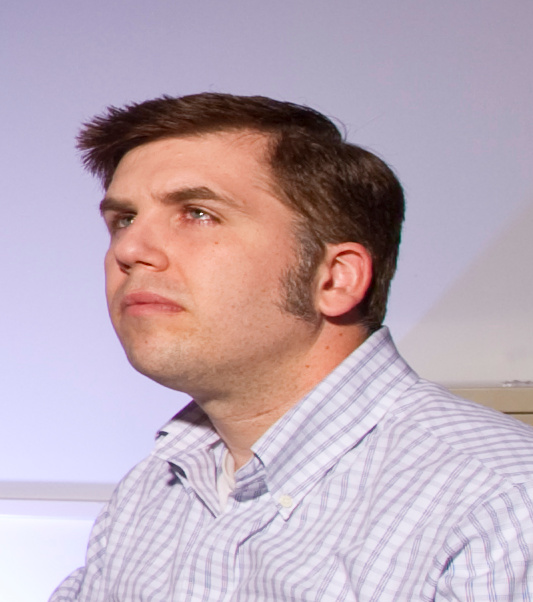 | 12 March 2012, MI Hörsaal 2 Graph theory applied to medical image analytics Radiologists and pathologists use geometrical information to make diagnostic and prognostic decisions about the anatomy they observe. As segmentation algorithms improve and datasets become larger, it becomes possible to learn image-based biomarkers with a precise and complete set of measurements. Traditional methods of quantifying shape emphasize classical measures of geometry, such as volume, surface area and curvature which may be evaluated with increasingly mature image segmentation methods. Additional information may be obtained by modeling biological structures as a network of pixels, which allows us to employ an arsenal of powerful network characterization tools to quantify structural and topological properties of biological structures. Finally, population studies to discriminate different subgroups are enabled by our ability to link different locations and attributes across individuals. In this talk I will present how we have been able to apply graph theory to generate robust and effective image segmentation methods, to produce correspondence between different individuals and how we can learn to discriminate population subtypes by going beyond geometrical features with advanced network characterization. |
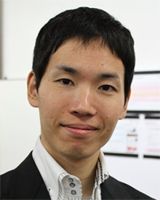 | 5 March 2012, MI 03.13.010 Merging Real and Virtual Experiences-Interactive Systems by Display Based Computing Dr. Maki Sugimoto, Assistant Professor at Keio University, will present his work on Merging Real and Virtual Experiences. Merging real and virtual is an important topic when we think about human computer interactions with Virtual Reality and Augmented Reality techniques. In this talk, we introduce several examples of interactive systems by special projection techniques which integrate real and virtual experiences. The first example is a gaming environment named Augmented Coliseum in which users can play real toys with virtual gaming functions. The second example is Animated Paper: a motion prototyping platform. In this system we integrate a paper based motion designing platform with a laser projection technique. The third example is BYU-BYU-View: a wind communication interface through a projection screen. You can communicate with virtual environments and remote environments by blowing targets on the screen. |
| 5 March 2012, MI 03.13.10 Depth cameras for augmented reality Dr. François de Sorbier, research associate at Keio University, will present his work on Augmented Reality. Recently depth cameras have become very popular mainly due to the success of the Microsoft Kinect. This device can capture the depth of a given indoor environment at real time frame rate even if the resolution or the quality is not perfect. Depth map gives important clues when trying to understand the geometry of a scene. It logically found many useful applications in the field of augmented reality. In this talk, we present some researches taking advantage of the depth camera in order to perform real-time augmented reality. The first research is proposing real-time interactions between the real world and several virtual objects. The second one aims at mapping a texture on a deformed surface like a tee-shirt. Finally we present a research that focuses on using augmented reality for learning how to play violin. | |
 | 28 February 2012, Workshop on Computer Assisted Stenting at MICCAI 2012 Together with colleagues from other groups, we are organizing MICCAI-STENT, the 1st MICCAI-Workshop on Computer Assisted Stenting at MICCAI 2012. |
 | 13 February 2012, BMC Master Student’s Thesis: finalist for the best student paper award at SPIE Medical 2012! We are proud of our master student, Andrei Chekkoury, who receives the best student finalist award at the international SPIE Medical Conference in San Diego in USA. His work has been selected as one of the 8 finalists between hundreds of international submissions from the best institutions around the globe. Congratulations to Andre, your supervisors at Siemens Corporate Research and Technical University of Munich are proud of this success! |
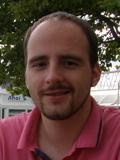 | 2 February 2012, MI 03.13.10 Crepuscular rays for tumor accessibility planning Rostislav Khlebnikov, PhD student at Graz University of Technology, will present his work on scientific and medical visualization. |
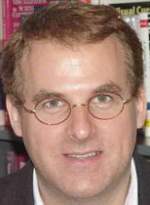 | 30 January 2012, MI 00.12.019 QUANTITATIVE EVALUTATION OF 4D MYOCARDIAL STRAIN MEASURES VIA OPTICAL FLOW WITH A FINITE ELEMENT MODEL FITTED TO SONOMICROMETRY Dynamic cardiac metrics, including strains and displacements, can provide a quantitative approach to evaluate cardiac function. However, in current clinical diagnosis, strain measures in 2D are used despite the fact that cardiac motions are complex changes in 4D. Recent advances in 4D ultrasound enable the capability to capture such complex motion in real time. In our previous work, a 4D optical flow based motion tracking algorithm was developed to extract full 4D dynamic cardiac metrics from such 4D ultrasound data. In order to quantitatively evaluate this method, coronary artery occlusion experiments at various locations were performed on five canine hearts with 4D ultrasound and sonomicrometry data acquired during the occlusion. Optical flow displacement was then mapped onto a finite element field fitted model. Corresponding 4D ultrasound data from these experiments were then analyzed. Estimated principal strains were directly compared to those recorded by sonomicrometry showing strong agreement. This was the first validation study of optical flow based strain estimation for 4D cardiac ultrasound including a direct comparison with sonomicrometry on in vivo data. |
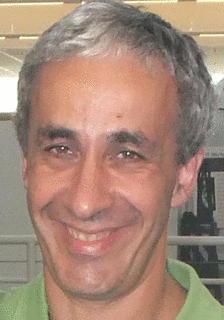 | 27 January 2012, MI 03.13.010 Modeling Brain Circuitry over a Wide Range of Scales Electron microscopes (EM) can now provide the nanometer resolution that is needed to image synapses, and therefore connections, while Light Microscopes (LM) see at the micrometer resolution required to model the 3D structure of the dendritic network. Since both the arborescence and the connections are integral parts of the brain's wiring diagram, combining these two modalities is critically important. In this talk, I will therefore present our approach to building the dendritic arborescence and to tracking migrating neurons from LM images, as well as to segmenting intra-neuronal structures from EM images. I will also argue that the techniques that are in wide usage in the Computer Vision and Machine Learning community are just as applicable in this context. |
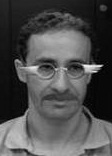 | 26 January 2012, MI 01.13.010 Multi-People Tracking through Global Optimization Given three or four synchronized videos taken at eye level and from different angles, we show that we can effectively detect and track people, even when the only available data comes from the binary output of a simple blob detector and the number of present individuals is a priori unknown. We start from occupancy probability estimates in a top view and rely on a generative model to yield probability images to be compared with the actual input images. We then refine the estimates so that the probability images match the binary input images as well as possible. Finally, having performed this computation independently at each time step, we compute trajectories over tive by solving a convex constrained flow problem, which allows us accurately follow individuals across thousands of frames. Our algorithm yields metrically accurate trajectories for each one of them, in spite of very significant occlusions. In short, we combine a mathematically well-founded generative model that works in each frame individually with a simple approach to global optimization. This yields excellent performance using very simple models that could be further improved. |
 | 16 January 2012, MI 02.08.020 Invited Talk by Bharat Rao, Ph.D., Siemens Healthcare, Inc., Malvern, PA, USA Dr. Bharat Rao, Senior Director and Head of the Knowledge Solutions (KS) group Health Analytics & Business Intelligence business unit in Siemens Healthcare, will give an invited talk on mining medical images to automatically detect potentially abnormal structures, automated decision-support & inference from EMR’s and personalized medicine for therapy selection. |
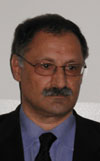 | 22 December 2011, MI 03.13.010 Invited Talk by Prof. Franjo Pernuš, PhD, University of Ljubljana In an invited talk at the CAMP lecture, Prof. Franjo Pernuš, PhD, University of Ljubljana, will present an overview of existing methods, three novel methods for registering 3D CT or MR images to 2D X-ray images, and quantitative registration results. |
 | 20 December 2011, MI 02.09.023 Contributions to Medical Image Registration: Theoretical Insights and New Methodologies As part of his PhD defense, Darko Zikic will give a talk on Tuesday, December 20, 2011 at 17:00, in Room 02.09.023 (FMI-Building, Garching, Boltzmannstr. 3). |
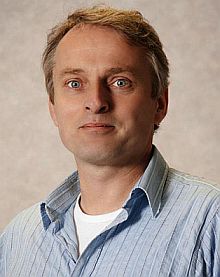 | 1 December 2011, MI 03.13.010 Health Technology and Systems Research at Information Science Prof. Holger Regenbrecht will give an overview on past and future activities and will present one example research project to illustrate the nature and procedure of information science research in health |
 | 29 November 2011, MI 00.12.019 Context in image (and video) understanding We are honored to have Prof. Larry Davis visiting the computer science department and giving a Fachkolloquium on “Context in image (and video) understanding”. |
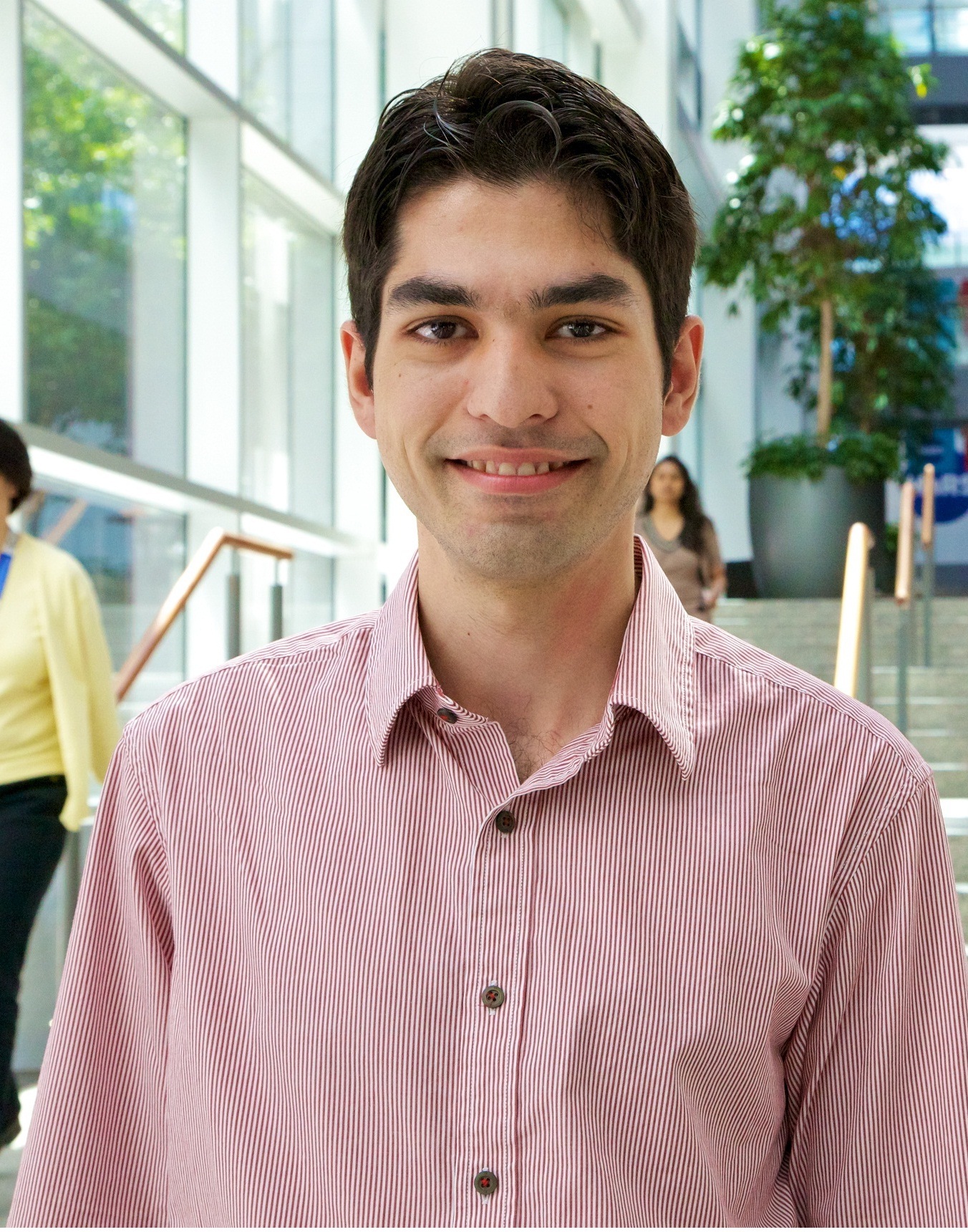 | 25 November 2011, MI 03.13.010 Matching Histology and MRI for Prostate: A 3D Biomechanical Model Based Deformable Registration Approach Navid Samavati will give an invited talk on “Matching Histology and MRI for Prostate: A 3D Biomechanical Model Based Deformable Registration Approach”. |
 | 13 October 2011, 03.13.010 Generating useful images for medical applications from the Visible Korean Dr. Dong Sun Shin, PostDoc at Ajou University School of Medicine, will give an invited talk on his current research work using the Visible Korean Human. |
 | 28 September 2011, MI 01.13.010 Advanced Imaging in Head-Mounted Displays for Patients with Age-Related Macular Degeneration Age-related macular degeneration (AMD) is one of the leading causes of low vision worldwide without a medical solution. Nevertheless, enhancement of people’s vision by means of mediated reality is conceivable. This thesis presents a head-mounted magnification system to enhance visual perception acquired with peripheral vision. A hybrid magnification technique is adjusted and implemented on a head-mounted display. Furthermore; a system for modeling and correcting distorted vision is proposed. The system obtains a correction model by means of a deformable grid. To evaluate the system; a method for simulating distorted vision is applied. By superimposing the model on OCT macular images; it is suitable to identify macular features; which could help on the development of an automatic correction method. |
 | 23 September 2011, MI 03.13.010 The Embedded Vision Approach to the Development of Backover Prevention Prototype In this talk we describe the development of a prototype for Backover Prevention on an embedded processor. The approach is based on developing (1) memory-agnostic compute functions and (2) optimal data transfers, independent of each other. Thus the data transfer design is orthogonal to the design of vision functions. This feature of our approach to embedded vision significantly simplifies the often very hard process of implementing complex vision algorithms on embedded processors. |
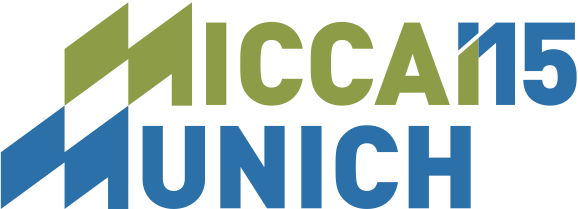 | 17 September 2011, MICCAI 2015 in Munich CAMP has been awarded the organization of MICCAI 2015 in Munich, Germany |
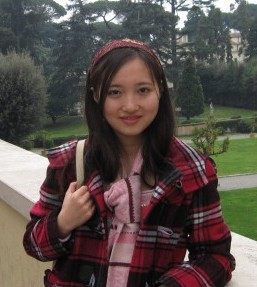 | 13 September 2011, MI 03.13.010 Mathematical modelling of Radio frequency ablation of malignant liver tumours Dr. Tingying Peng, PostDoc at Institute of Biomedical Engineering (IBME) at University of Oxford, will give an invited talk on her current research work. |
 | 12 September 2011, MI 03.13.010 Spikes in Epilepsy: EEG and MRI Prof. William (Sandy) Wells, from Harvard Medical School, will describe recent work in the area of simultaneous MRI and EEG of inter-ictal discharges associated with Epilepsy. |
 | 12 September 2011, Report on Magic Mirror shown on n-tv On the German news television (n-tv) a report on the use of Kinect for research was broadcasted. As one example they showed our Magic Mirror project. |
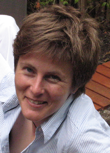 | 31 August 2011, IFL, Klinikum rechts der Isar Technical improvement of arthroscopic and orthopaedic surgical techniques and diagnosis Dr. Gabrielle Tuijthof, Assistant Professor at the Department of Biomechanical Engineering, TU Delft, will visit the CAMP chair on August 30. She will talk about technical improvement of arthroscopic and orthopaedic surgical techniques and diagnosis. |
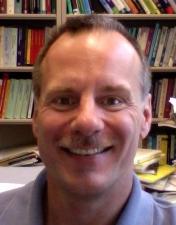 | 26 August 2011, MI HS 2 The Role of Intermediate Shape Priors in Perceptual Grouping and Image Abstraction Prof. Dr. Sven Dickinson, from the Department of Computer Science, University of Toronto, will visit the CAMP chair on August 26th. He will talk about the Role of Intermediate Shape Priors in Perceptual Grouping and Image Abstraction . |
 | 25 August 2011, 03.13.010 Garching How Do We Measure Depth Perception in Near-Field Augmented Reality? Prof. J. Edward Swan II, from the Department of Computer Science and Engineering, Mississippi State University, will visit the CAMP chair on August 25. He will give an overview on his recent work in depth perception and augmented reality. |
 | 1 July 2011, 03.13.010 Garching Motion estimation and inversion algorithms for elastography with applications to prostate and breast imaging Prof. Dr. Tim Salcudean, from the Department of Electrical and Computer Engineering, The University of British Columbia, will visit the CAMP chair on July 1st. He will give an overview on his recent work in Ultrasound Elastography and present applications to prostate and breast imaging. |
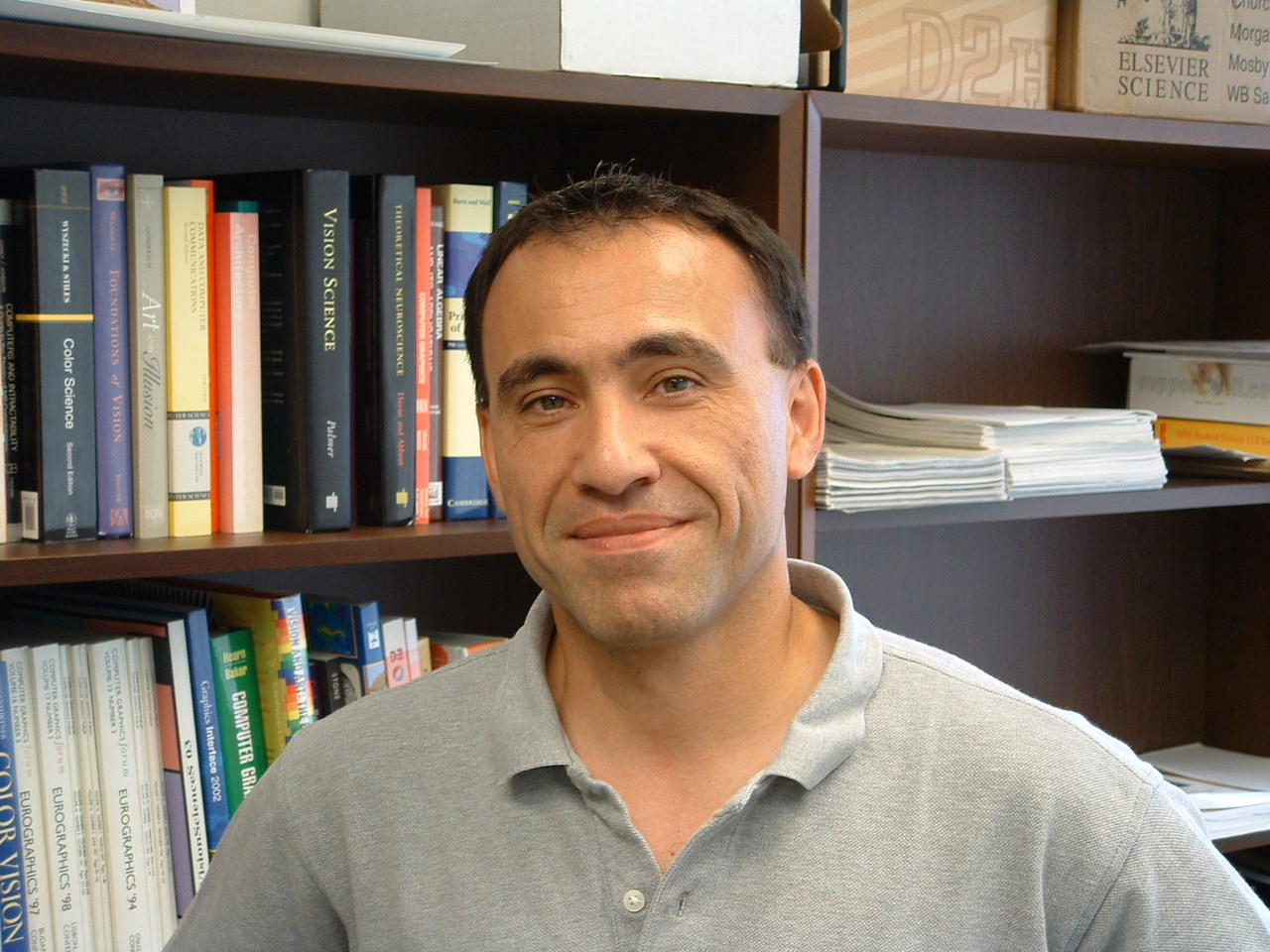 | 17 June 2011, 03.13.010 Garching Invited Talk by Professor Hassan Foroosh Prof. Hassan Foroosh, director of the Computational Imaging Laboratory (CIL) at University of Central Florida (UCF), will be an Institute of Advance Studies (IAS) Visiting Professor at CAMP for one month. He will give an introductory talk to his work on *Adaptive Compressive Sensing by k-significant Sampling of Haar Coefficients* |
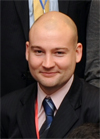 | 10 June 2011, 03.13.010 Applications of Computer Vision in Minimally Invasive Surgery Peter Mountney obtained his Ph.D. in Medical Imaging from Imperial College London in 2010 before joining Siemens Corporate Research. In his talk; he will discuss the challenges of computer vision in Minimally Invasive Surgery and the roles that feature tracking and Simultaneous Localisation and Mapping (SLAM) can play in facilitating new surgical procedures such as motion compensation, Image Guided Surgery, Dynamic View Expansion and Optical Biopsy Mapping. |
 | 9 June 2011, MI 01.09.014 Random Fields for Image Registration As part of his PhD defense Mr. Dipl.-Inf. Ben Glocker will give a talk on June 9 2011 at 11.00 a.m. in Room 01.09.014 of FMI-Building, Garching, Boltzmannstr. 3. |
 | 9 June 2011, MI 00.12.019 Tomographic Reconstruction Methods for Optical and Intra-operative Functional Imaging As part of his PhD defense Dipl.-Inf., Dipl.-Math. Tobias Lasser will give a talk on Thursday, June 9th, 2011 at 15:30, Room 00.12.019 (Fakultätsraum Informatik), FMI-Building, Garching, Boltzmannstr. 3. |
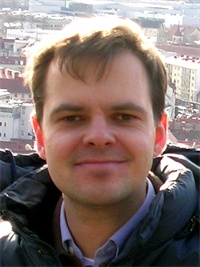 | 23 May 2011, MI 02.13.010 Truly Mobile Augmented Reality This talk will summarize 9 years of research towards AR solutions that run on mobile phones, examining computer vision, computer graphics and user interface approaches that have turned out to work well on smartphones, and will also take a look ahead at likely future trends. |
 | 23 May 2011, MI 03.13.010 Invited Talk: Model-based Performance Capture from Video Christian Theobalt is the head of the research group 'Graphics; Vision and Video' at the Max-Planck-Institut Informatik and a Professor of Computer Science at Saarland University, Saarbruecken, Germany. Abstract: Performance capture is a term for a new class of acquisition methods that enable the simultaneous reconstruction of dynamic shape and surface appearance properties of dynamic scenes - in particular scenes involving human actors - from multi-view video. These reconstruction approaches exceed the capabilities of marker-based optical motion capture approaches that are still state-of-the-art in many real production scenarios, such as in movie productions... |
 | 5 May 2011, MI 00.12.019 Real-Time Multi-View 3D Reconstruction for Interventional Environments As part of his PhD defense Dipl.-Inf. Univ. Alexander Ladikos will give a talk on May 5, 2011 at 10.30 a.m. in Room 00.12.019 of FMI-Building, Garching, Boltzmannstr. 3. |
 | 2 May 2011, MI 03.13.010 Invited talk: Toward integrated and personalized management of cerebral aneurysms. After two years of research in Electrical Impedance Tomography (EIT), Prof. Frangi moved to 3D image processing of angiographic and cardiac images. Currently he is particularly interested in applications of image analysis and computer vision to medical image computing and the connection of imaging with physical models to develop personalized computational models of the cardiovascular system. |
 | 2 May 2011, MI 03.13.010 Medical Tool Tracking in Fluoroscopic Interventions As part of his PhD defense Mr. Dipl.-Inf. Hauke Heibel will give a talk on May 2, 2011 at 2.00 p.m. in Room 03.13.010 of FMI-Building, Garching, Boltzmannstr. 3. |
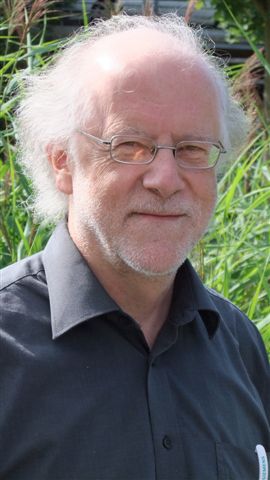 | 15 April 2011, MI 03.13.010 Invited talk: Research at X-ray Products business unit, Siemens AG Healthcare Dr. Mertelmeier received his Diplom in Physics in 1981 and his PhD degree in theoretical Nuclear Physics in 1985 both from University of Erlangen-Nürnberg. In 1986, he joined Siemens AG Healthcare (formely Medical Solutions) in Erlangen and is since then affiliated with it. During 1995 and 1996 he spend some time in Rochester, NY, USA as visiting researcher. As Senior Principal Scientist, Dr. Mertelmeier is currently in charge of innovation in the Siemens Healthcare business unit X-ray Products. |
 | 12 April 2011, MI 03.13.010 Management of Tracking and Tracking Accuracy in Industrial Augmented Reality Environments As part of his PhD? defense Mr. Dipl.-Inf. Peter Keitler will give a talk on April 12, 2011 at 14.30 in Room 03.13.010 of FMI-Building, Garching, Boltzmannstr. 3. |
 | 12 April 2011, MI 03.13.010 New Approaches to Computer Assistance for Endovascular Aortic Repairs As part of her PhD defense Mrs. Dipl.-Inf. Stefanie Demirci will give a talk on April 12, 2011 at 9.00 a.m. in Room 03.13.010 of FMI-Building, Garching, Boltzmannstr. 3. |
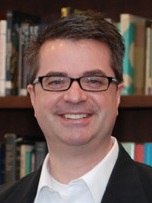 | 11 April 2011, MI 03.13.010 Invited Talk: Physical Manifestations of Virtual Humans Virtual humans have been around for many years, offering a controlled human dimension to applications such as training, education, and entertainment. The manifestation of virtual humans in a real space typically involves a 2D flat panel display, sometimes with stereo head tracked imagery. In these situations, the 2D display effectively serves as a portal to the virtual human’s world, through which all communication and perception must pass. From the perspective of the real space, the virtual humans are in some sense “trapped” in the 2D display. But what if instead, avatars could manifest themselves in physical form, with human shape, appearance, behavior, and sound? In other words, what if virtual humans could break free from their 2D displays, joining us in the real world as physically-present approximations of real humans? In this talk I will discuss this idea, including some applications, technology research, perceptual issues, and even ethical issues |
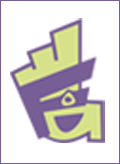 | 25 March 2011, Santa Barbara Outstanding Paper Award at IEEE FG'2011 We got an Outstanding Paper Award at the 9th IEEE Conference on Automatic Face and Gesture Recognition 2011 for a paper by L. Schwarz, A. Mkhitaryan, D. Mateus and N. Navab. |
 | 24 March 2011, SmartSurgicalSolutions has been awarded at the Science4Life business plan competition for their business plan on AXSight After having already received an award at the Munich Business Plan Competition, our business plan on AXSight has also been awarded in the Germany-wide Science4Life competition. |
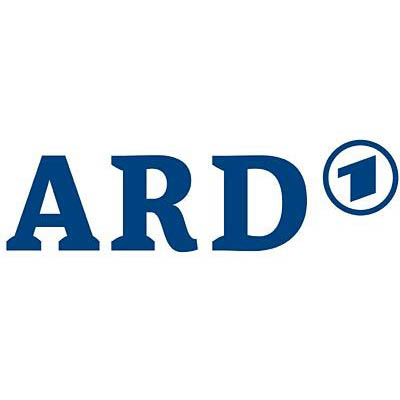 | 6 March 2011, CAMP on TV The television program W wie Wissen on ARD showed a report about our research on augmented reality which is done in the Narvis lab at Klinikum Innenstadt |
 | 24 February 2011, AXSight Business Plan has been awarded at the Munich Business Plan Competition Our business plan for AXSight has been awarded in the first round of the Munich Business Plan Competition |
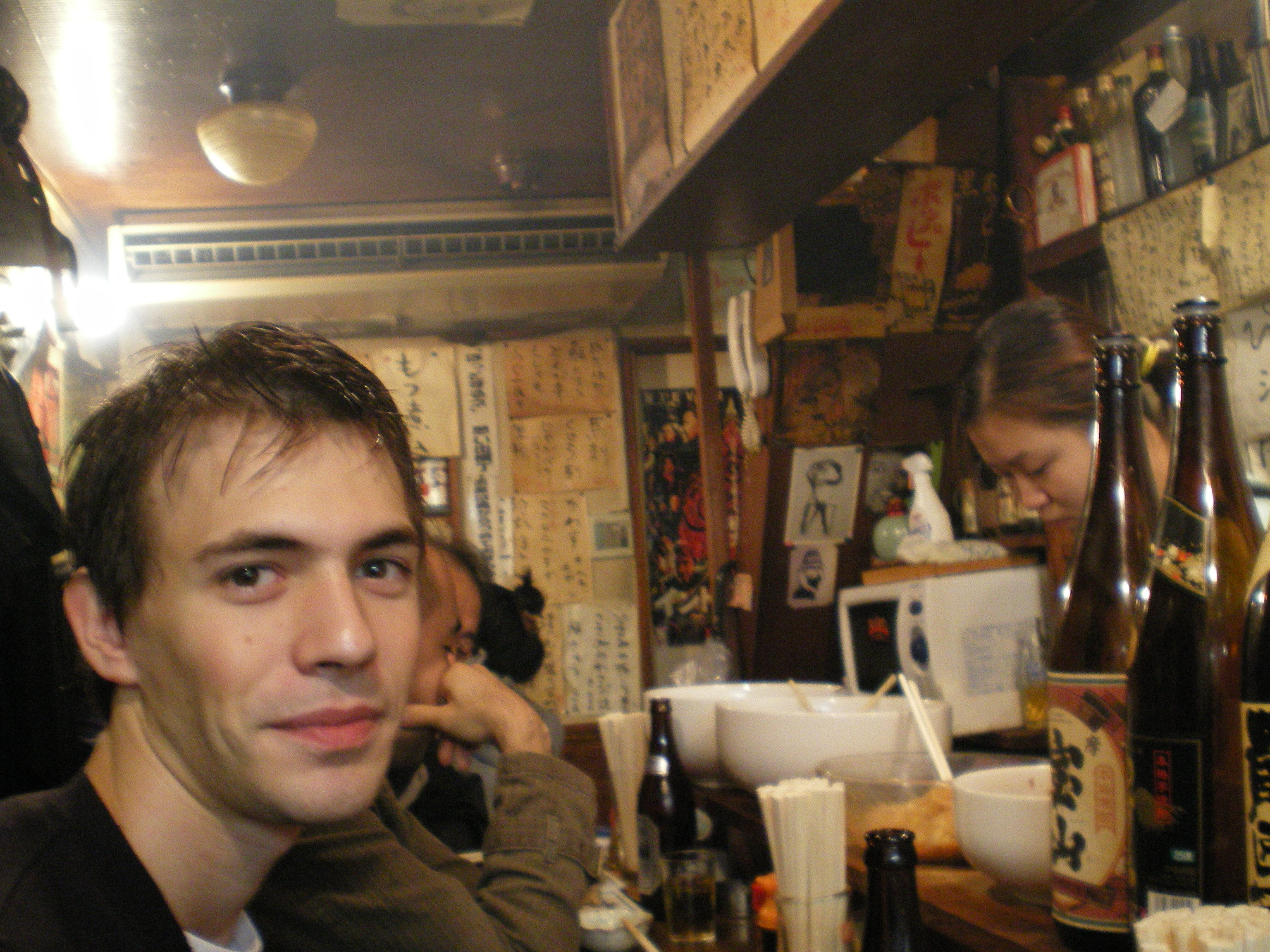 | 16 February 2011, MI 03.13.010 Augmented Reality Tools for Digital Plant Engineering As Part of his PhD defense Mr. Pierre Fite-Georgel will give a Talk on Augmented Reality Tools for Digital Plant Engineering |
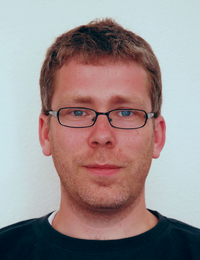 | 16 February 2011, HS 2 - 15:00-16:00 Invited Talk: Computational 3D Photography: Extracting Shape, Motion and Appearance from Images Prof. Marc Pollefeys from the computer vision lab at the ETH Zurich is giving a invited Talk about 3D shape and motion extraction from images. |
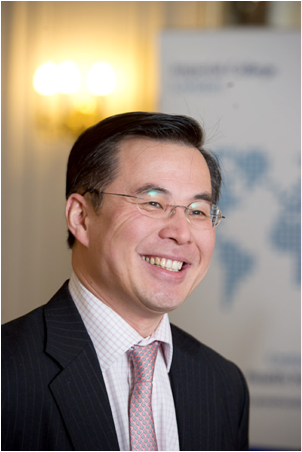 | 8 February 2011, Garching 03.13.010 Invited Talk by Prof. Guang-Zhong Yang The purpose of this presentation is to outline key clinical challenges and research opportunities for developing the next generation minimally invasive surgical robots and the associated image guidance techniques. The talk will cover the latest developments in fully articulated, bio-inspired (e.g. Snake) robot platforms that facilitate intra-luminal or extra-luminal anatomical curved pathway navigation with integrated sensing and navigation. |
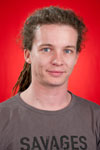 | 4 February 2011, MI 03.13.010 Invited talk by Julian Stoettinger Julian Stoettinger from CV Lab at TU Vienna (Austria) will give an invited talk on Detection and Evaluation Methods for Local Image and Video Features. |
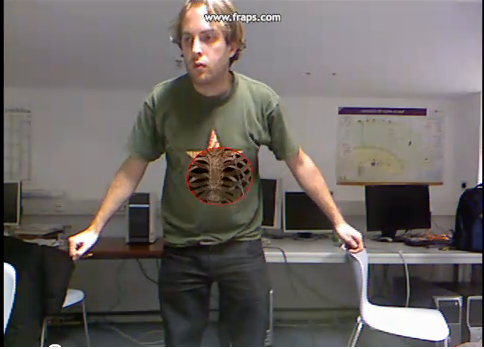 | 10 January 2011, Over 150,000 views on YouTube Within one week the video on our project of an Augmented Reality Magic Mirror using the Microsoft Kinect reached over 150,000 views on YouTube. |
 | 17 December 2010, Talk by Dr. Noël Dr. Noël will give a talk on "Clinical and Academic Reconstruction Algorithms for X-ray Computed Tomography". |
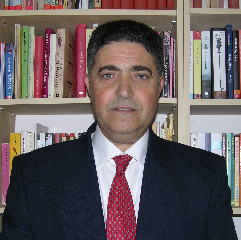 | 17 December 2010, MI 03.13.010 Invited Talk by Dr. Yigal Shoshan In an invited talk at the CAMP lecture, Dr. Yigal Shoshan will describe clinical applications of fMRI and DTI, for example in pre-surgical planning or brain tumors surgery. |
 | 17 December 2010, Invited Talk by Prof. Dr. Wolfgang Stürzlinger Three-dimensional user interfaces are popular in movies and games. In that respect Prof. Dr. Wolfgang Stürzlinger will present innovative solutions based on the capabilities and limitations of both humans and technologies. |
 | 16 December 2010, MI 03.13.010 Invited Talk by Prof. Franjo Pernuš, PhD, University of Ljubljana In an invited talk at the CAMP lecture, Prof. Franjo Pernuš, PhD, University of Ljubljana, will present an overview of existing methods, three novel methods for registering 3D CT or MR images to 2D X-ray images, and quantitative registration results. |
 | 13 December 2010, Room 01.07.014 , 1st Floor, FMI-Building, Garching, Boltzmannstr. 3 Dissertation Defense of Christoph Bichlmeier Christoph Bichlmeier will defend his PhD thesis with the title Immersive, Interactive and Contextual In-Situ Visualization for Medical Applications. |
 | 30 November 2010, MI 03.13.010 Invited Talk by Prof. Joachim Hornegger, PhD, University of Erlangen In an invited talk at the CAMP lecture, Prof. Joachim Hornegger, PhD, University of Erlangen, will present several novel approaches to cardiax reconstruction algorithms and an overview of initial experimental results. |
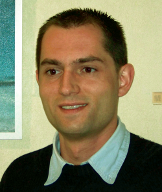 | 30 November 2010, Dissertation Defense of Florent Brunet Florent Brunet will defend his |
 | 29 November 2010, MI 03.13.010 Augmented reality research at Bentley Systems In an invited talk at the CAMP lecture, Stéphane Côté, PhD, Southampton University, UK, will present the Bently Systems, a software development company dedicated to substaining infrastructure. Furthermore there will be a brief description of its Applied Research group. |
 | 8 October 2010, Berlin EXIST-Forschungstransfer Awarded by BMWi The members of the microDIMENSIONS team of our group (Martin Groher, Marco Feuerstein, and Hauke Heibel) were awarded an EXIST-Forschungstransfer grant by the Bundesministerium für Wirtschaft und Technologie. |
 | 8 October 2010, seminar room MI 03.13.010 Dissertation Defense of Razvan Ionasec Razvan Ionasec will defend his PhD thesis with the title "Patient-specific Modeling and Quantification of the Heart Valves from Multimodal Cardiac Images". |
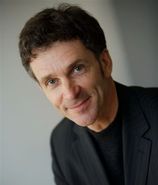 | 7 October 2010, Seminar Room: MI 03.13.010 Invited Talk by Prof. Nicholas Ayache Invited Talk on „From Medical Images to Personalized Digital Physiological Patients”. Prof. Ayache is one of the leading researchers in medical imaging. He is chief editor of Elsevier journal of Medical Image Analysis and one of the founders and a member of the board of the MICCAI society |
 | 5 October 2010, Bibliothek, Nuklearmedizin, MRI Dissertation Defense of Thomas Wendler Thomas Wendler will defend his |
 | 4 October 2010, MI 03.13.010 Invited Talk by Professor Kilian Pohl Kilian M Pohl is as an Assistant Professor at the Section for Biomedical Image Analysis, Department of Radiology, University of Pennsylvania. His main research area is computational image analysis with an emphasis on studying statistical models from a Bayesian perspective. In his talk he will develop a new curve evolution formulation for estimating the posterior distribution of objects in images. |
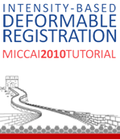 | 24 September 2010, Beijing, China Tutorial on Intensity-based Deformable Registration at MICCAI 2010 Together with colleagues from other groups, we are organizing a Tutorial on Intensity-based Deformable Registration at MICCAI 2010. |
 | 17 September 2010, SMIT Technology Award The prestigious SMIT Technology Award goes to Professor Navab for outstanding contributions of the chair for computer aided medical procedures to computer assisted surgery through the development of Freehand SPECT and Camera-Augmented Mobile C-arm (CAMC). The award was delivered by the general chairs of the SMIT annual conference held in Trondheim, Norway. |
 | 16 September 2010, seminar room MI 03.13.010 Dissertation Defense of Andreas Keil Andreas will defend his PhD thesis with the title "Dynamic Variational Level Sets for Cardiac 4D Reconstruction". |
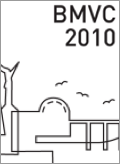 | 3 September 2010, Aberystwyth, United Kingdom Best Supplementary Material Prize at BMVC 2010 We got the Best Supplementary Material Prize at the 21st British Machine Vision Conference (BMVC), for a video submitted together with our paper by Loren Schwarz, Diana Mateus, Victor Castañeda and Nassir Navab. |
 | 1 September 2010, 2009 Chinese Government Award for Outstanding Students Abroad We are very happy to announce that Lejing Wang got the 2009 Chinese Government Award for Outstanding Students Abroad. Lejing Wang receives financial support from Technische Universität München for his PhD study. |
 | 30 August 2010, MI 03.13.010 Dissertation Defense of Arash Taki Arash Taki will defend his |
 | 23 August 2010, Seminar Room: MI 03.13.010 Invited Talk by Ali Kamen: Medical Image Fusion for Disease Quantitation and Image Guided Procedures In this talk, Dr. Kamen will outline a collection of Siemens intramural and NIH funded projects responsive to the current trends in both diagnostic and interventional settings. |
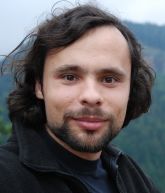 | 23 July 2010, Seminar Room: MI 03.13.010 Invited Talk by Ilja Bezrukov MR-Based Attenuation Correction for Whole Body PET/MR – Atlas and Pattern-Recognition Based Methods |
 | 19 July 2010, Garching Seminar Room Talk by Raffi Enficiaud Generic approaches for algorithms in mathematical morphology |
 | 14 July 2010, Port d'Andratx, Mallorca, Spain Best Paper Award at AMDO 2010 We got the best paper award at the VI International Conference on Articulated Motion and Deformable Objects (AMDO). L. Schwarz, D. Mateus, N. Navab. |
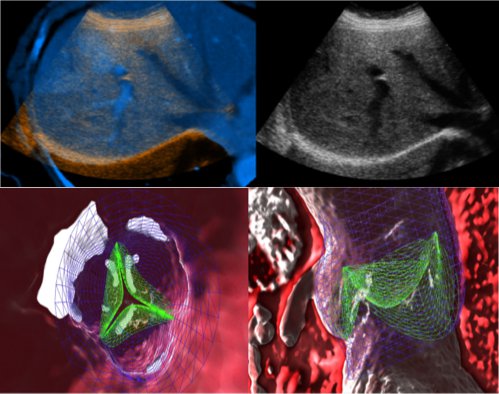 | 28 June 2010, MI 03.13.010 Workshop on Modeling and Ultrasound Imaging 2010 Invited speakers and members of the CAMP chair will give a series of talks on modeling of the human heart and recent research on ultrasound imaging. |
 | 28 June 2010, MI 03.13.010 Dissertation Defense of Oliver Kutter Oliver Kutter will defend his |
 | 15 April 2010, MI 03.13.010 Invited Talk by Dr. Jocelyne Troccaz, TIMC-IMAG, France Dr. Troccaz, from TIMC-IMAG, will give a talk on 'Computer Aided Medical Interventions: work in progress in Grenoble' |
 | 14 April 2010, MI 03.13.010 Human Tracking and Motion Analysis from a Single Camera In Indoor Environments Talk by Ovgu Ozturk from the University of Tokyo on multiple-human tracking from a single camera with the aim of analyzing human behavior in public places. |
 | 14 April 2010, MI 03.13.010 Dissertation Defense of Nicolas Padoy Nicolas will defend his |
 | 11 February 2010, MI 03.13.010 Invited Talk by Prof. Dr. Soheyl Noachtar Prof. Dr. Soheyl Noachtar, head of the Epilepsy Center at the Neurological Clinic of LMU in Großhadern, will give a talk on Motion analysis for epilepsy patients. |
 | 11 February 2010, MI 03.13.010 Deep Brain Stimulation for Movement Disorders Dr. med. Kai Bötzel from the department of Neurology of Klinikum Grosshadern will give a talk on Deep Brain Stimulation for Movement Disorders. |
 | 20 January 2010, MI 03.13.010 Invited Talk by Prof. Tobias Höllerer , University of California, Santa Barbara Tobias Höllerer is an Associate Professor of Computer Science at the University of California, Santa Barbara, where he co-directs the Four Eyes Laboratory, conducting research in the four I's of Imaging, Interaction, and Innovative Interfaces. |
 | 20 December 2009, SAT.1, Planetopia Erweiterte Wirklichkeit – Ich sehe was, was du nicht siehst (CAMP @ SAT.1, Planetopia) Die Zukunft heißt Augmented Reality - zu deutsch: Erweiterte Wirklichkeit. Das heißt: Virtuelle und echte Welt wachsen zusammen. In der Medizin soll das zum Beispiel minimalinvasive Operationen ermöglichen. Doch auch im Alltag hat die Augmented Reality schon Einzug gehalten: Die Kombination modernes Handy plus Software verspricht allerlei nützliche Hilfestellungen für Jedermann, etwa bei der Wohnungssuche oder auf Reisen. PLANETOPIA hat getestet, wie gut die neue Technik ist und ob sie bereits für den Alltag taugt (Planetopia Homepage, Dez 2009). |
 | 17 December 2009, MI 03.13.010 Invited Talk by Prof. Franjo Pernuš, PhD, University of Ljubljana In an invited talk at the CAMP lecture, Prof. Franjo Pernuš, PhD, University of Ljubljana, will present an overview of existing methods, three novel methods for registering 3D CT or MR images to 2D X-ray images, and quantitative registration results. |
 | 20 November 2009, Garching, MI 03.13.010 Invited Talk by Peter B. Noël, PhD, Institut für Radiologie, Klinkum rechts der Isar |
 | 16 November 2009, Seminarraum 03.07.023 Garching Martin de la Gorce: Model-Based Hand tracking from Monocular Video I will present a model-based approach to 3D hand tracking from monocular video. The 3D hand pose, the hand texture and the illuminant are dynamically estimated through minimization of an objective function. Derived from an inverse problem formulation, the objective function enables explicit use of texture temporal continuity and shading information, while handling important self-occlusions and time-varying illumination. |
 | 15 October 2009, Garching, MI 03.13.010 Biometric Technology Applications in Medical and Biological Researches Dr. Andrey Samorodov's presentation describes work directions of the Chair for Biomedical Technique and R&D Center of Biometric Technology of Bauman Moscow State Technical University. |
 | 12 October 2009, NARVIS Lab NARVIS Open Days 2009 (12.10. - 16.10.) Come and visit our interdisciplinary NARVIS Lab at Klinikum Innenstadt and experience our Medical Augmented Reality systems. If you are looking for an exciting bachelor-, master thesis (students) or a research project in our field you plan to setup (physicians, researchers, businessmen, technique freaks, ... ), come by and talk to us! See you there! |
 | 28 September 2009, Kyoto-Japan Best Paper Award at VOEC Workshop - ICCV 2009 We got the best paper award sponsored by IBM at the ICCV 2009 Workshop on Video-oriented Object and Event Classification (Kyoto - Japan, September 2009) for our paper Workflow Monitoring based on 3D Motion Features. N. Padoy, D. Mateus, D. Weinland, M.O. Berger, N. Navab. |
 | 24 September 2009, Imperial College, London MICCAI Awards 2009 go to Lejing Wang and Wolfgang Wein We are very proud to announce that Lejing Wang won the Young Scientist Award and Wolfgang Wein the Best Paper in Navigation at MICCAI 09. There have been 804 papers submitted to MICCAI 2009. Only seven authors of the best papers received awards based on peer reviews and examination of an independent peer review panel. These two papers are therefore between the .87% best papers submitted to these prestigious international event. Congratulations to Lejing and Wolfgang for these outstanding results. |
 | 14 September 2009, Glaspavillion-Hörsaal at Klinikum rechts der Isar, 14:00 VR-Guidance of Minimally Invasive Beating Heart Interventions Prof. Terry Peters, PhD, Professor for Medical Imaging and Medical Biophysics at Robarts Research Institute, University of Western Ontario, London, Canada, will give an invited talk on VR-Guidance of Minimally Invasive Beating Heart Interventions. |
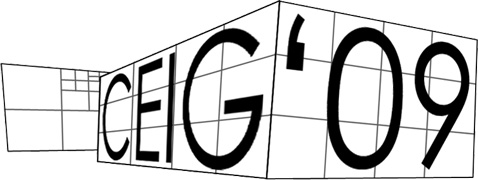 | 10 September 2009, San Sebastián, Spain keynote speech at CEIG 2009 by Prof. Nassir Navab Prof. Nassir Navab and Prof. Thomas Ertl gave keynote speeches at CEIG'09 (Congreso Español de Informática Gráfica). |
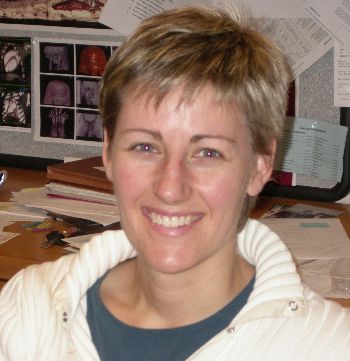 | 1 September 2009, Garching, Seminar Room MI 03.13.010 Presentation of Projects at Stanford Prof. Rebecca Fahrig, PhD, Associate Professor (Research), Dept. of Radiology, Stanford University, Stanford, CA, U.S.A., will visit our labs and present some of the projects of her lab. |
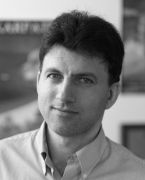 | 28 August 2009, Garching, Seminar Room, 11:15 Linear Programming, Duality and MRFs in Computer Vision and Medical Image Analysis In this talk, Prof. Paragios will present recent development in the field of efficient linear programming using the primal dual principle towards solving generic MRFs of pair or higher order interactions and their applications in medical imaging and computer vision. |
 | 31 July 2009, Garching, Seminar Room, 10:00 Invited Talk by Prof. Wolodymyr Madych Prof. W.R. Madych, Professor for Harmonic Analysis at the Department of Mathematics at the University of Connecticut, will give a talk on Inverse problems, ill posed and ill conditioned problems, and resolution. |
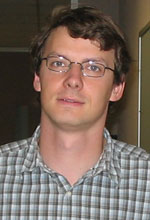 | 29 July 2009, Garching Seminar Room Invited Talk by Prof. Jan-Michael Frahm Fast Reconstruction of the World from Photos and Videos |
 | 23 July 2009, Garching, Seminar Room Taking Augmented Reality out of the Laboratory and into the Real World Dr. Christian Sandor is the Deputy Director of the Wearable Computer Lab at the University of South Australia and will talk about the porblems of taking AR systems out laboratory environments into the real world. |
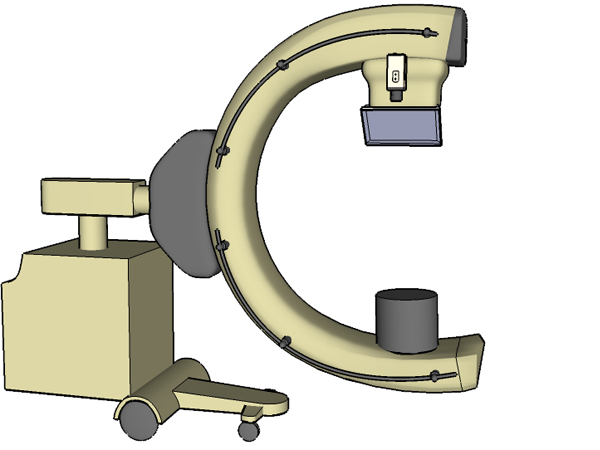 | 9 July 2009, Chirurgische Klinik und Poliklinik - Innenstadt, LMU München A Historical Event in Medical Imaging: CAMC successfully introduced in operating room After extensive preclinical testing finally CAMC has been moved into the Operation Room of Innenstadtklinikum at Nußbaumstraße. First 4 Patients were treated successfully with CAMC-navigation support. The clinical investigation will cover 120 surgeries in Orthopedic Trauma Surgery. Professor Navab and many clinical partners believe that in a few years CAMC will take over the current market of existing mobile C-arms. |
 | 29 June 2009, Garching Seminar Room, 15:30 Flexible Image Warps: the Cases of Rigidity and Perspective One of the most fundamental computer vision problems is image matching. We focus on the interesting case of two images of a continuous surface. |
 | 19 June 2009, 03.13.010 Garching Invited Talk by Prof. Dr. Soheyl Noachtar Prof. Dr. Noachtar, head of the Epilepsy Center at the Neurological Clinic of LMU in Großhadern, gives a talk on Treatment of Epilepsy and Motion Analysis for Assessment of Epileptic Seizures. |
| 12 June 2009, Lago d'Iseo, Italy Workshop on Advanced Imaging and Visualization @ Lago d'Iseo, Italy From 9th to 12th of June we successfully hold our workshop on Advanced Imaging and Visualization at Lago d'Iseo in Italy. Follow the link for an overview, the scientific program, and some pictures. | |
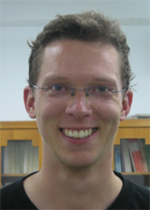 | 5 June 2009, 03.13.010 Garching Time-of-Flight Endoscopy: Fusion of color and 3D information This talk describes the accomplishment of the Time-of-Flight (ToF?) measurement principle via endoscope optics. |
 | 28 May 2009, 2nd and 4th place in the Top25 Hottest Articles for Medical Image Analysis Articles The articles Dense image registration through MRFs and efficient linear programming and Automatic CT-ultrasound registration for diagnostic imaging and image-guided intervention are ranked on the 2nd and 4th place in the list of most downloaded articles. |
 | 18 May 2009, 03.13.010 Garching Invited talk by Prof. Bruce Thomas We have developed a system built on our mobile AR platform that provides users with see-through vision, allowing visualization of occluded objects textured with real-time video information. We present a user study ... |
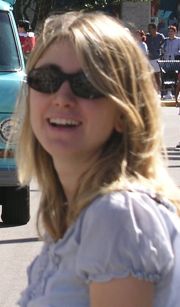 | 14 May 2009, 02.13.010, Garching Invited talk by Prof. Gozde Unal, PhD Invited Talk: Variational Techniques in Medical Image Analysis |
 | 7 May 2009, Klinikum r.d. Isar, Hörsaal C Talk by Prof. Navab Prof. Navab will give a talk on Action- and Workflow-driven Augmented Reality for Computer Aided Medical Procedures within the symposium of BAdW Forum Technologie. |
 | 4 May 2009, IFL Lab 250 years of Bayerische Akademie der Wissenschaften This Thursday there is a symposium on Navigation within the ‘250 years of Bayerische Akademie der Wissenschaften’. In the morning some of the best students of German high schools are coming to visit our hospital research labs. They will visit the IFL to see both live demos there and other demos transmitted direct over video conference from our NARVIS laboratory at Klinikum Innenstadt, LMU. |
 | 28 April 2009, Garching, 03.13.010 Invited Talk by Prof. Heinz U. Lemke, PhD Invited Talk: From image-guided to model-guided therapy |
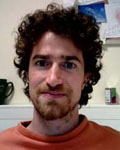 | 30 March 2009, Garching, 03.13.010 Invited Talk by Umberto Castellani PhD (Department of Computer Science at University of Verona) Invited Talk on Medical image classification: the cases of cancer area characterization and brains in Schizophrenia research. |
 | 27 February 2009, MI 03.13.010 Invited Talk by Ali Khamene PhD (Siemens Corporate Research (SCR), Princeton) In this invited talk, Ali Khamene will introduce his work on a new optimization method for the 2D-3D image registration problem. |
 | 20 February 2009, Augmented Reality in Surgical Projects In collaboration with docmed.tv, which is a web based multi-media platform for communicating advances in the field of health care, we created a video showcasing the ongoing research at NARVIS lab. NARVIS lab is located at Klinikum Innenstadt in Munich and run by the department of trauma surgery, LMU, Munich and our chair. Watch the full report. |
 | 2 February 2009, EU-Workshop with Dr. Bodil Holst How to write a proposal for FP7 and get it accepted. |
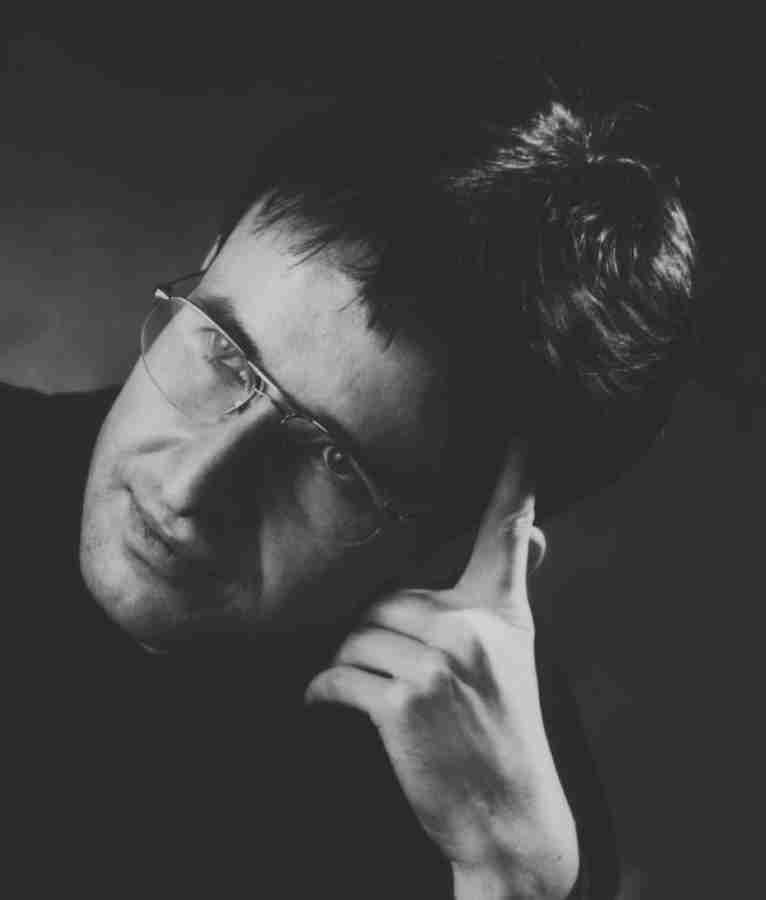 | 30 January 2009, 11:00 in room MI 03.13.010 Computer-Aided Diagnosis in Biomedical Imaging: Functional MRI and Pattern Recognition Dr.med.,Dr.rer.nat. Axel Wismueller (Associate Professor for Radiology and Biomedical Engineering, University of Rochester, New York) will be giving an invited talk about his work. |
 | 28 January 2009, 12.00-1.00pm at IFL 3D US navigation for Neurosurgery Dr. Thomas Lango , senior researcher and group leader at SINTEF will give an invited talk on 3D Ultrasound Navigation for Neurosurgery. The talk will be at hospital rechts der Isar within our multidisciplinary research laboratory IFL. |
 | 18 December 2008, 14:30 in room MI 03.13.010 Talk by Prof. Franjo Pernuš, PhD, University of Ljubljana In the course of the lecture "Computer Aided Medical Procedures" (Prof. Navab), we'll have one invited talk by Prof. Franjo Pernuš, PhD. |
 | 11 December 2008, 13:00 - Room 03.13.010 CoTeSys Seminar: Invited Talk by Daniel Weinland about Action Representation and Recognition Daniel Weinland, postdoctoral fellow at the Ecole Polytechnique Federale de Lausanne, will give an invited talk about his work on action representation and recognition. |
 | 27 November 2008, 10:00 MI 03.09.014 Talk of Jochen Penne about the use of TOF-cameras in the operating room Jochen Penne from Joachim Hornegger's group in Erlangen will be visiting us on Thursday the 27th of November. He will give a talk about his work on TOF-cameras and their use in the operation room. The talk will take place at 10:00 in 03.09.014. |
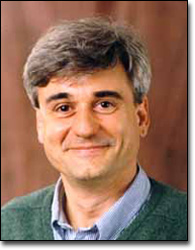 | 25 November 2008, 13:00-14:30, CAMP seminar room Visit of Prof. Benoit Dawant Prof. Dawant is visiting us in the course of the ROBOCAST project, as an external expert on computer-aided placement of Deep Brain Stimulation (DBS) electrode probes. In the CAMP lecture, he will give a presentation on the methods developed at their Medical Image Processing Laboratory at Vanderbilt University for advanced DBS procedures. |
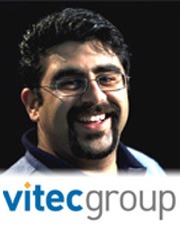 | 19 November 2008, MI 01.13.007 (seminar room 3 chair of Prof. Krcmar), 10:00 am VITEC Camera Dynamics Introduction Presentation VITEC Camera Dynamics is a branch of VITEC Corp., hosting several sub-brands which provide professional equipment for the entertaining and broadcasting industry. Represented by Ali Ahmadi (Product & Marketing Manager), Richard Lindsay (Head of Innovation) and Chris O'Neill (Director of Manual Products), the talk will give an overview over current products and innovations at VITEC Camera Dynamics. Feel free to join and get informed about one of the world leading companies in professional camera and studio equipment. |
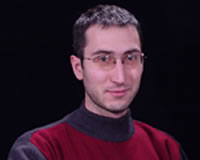 | 14 November 2008, MI 03.13.010, 12.00 Talk of Stephane Nicolau About Activities at IRCAD Since 1994, IRCAD-EITS has made itself known as a prestigious center of excellence in the fields of basic and applied research, and new surgical technologies. The reputation of IRCAD-EITS contributes to position this unique institute among the top surgical training centers in the world. |
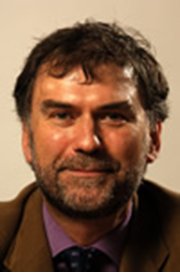 | 14 November 2008, MI 03.13.010, 11.00am Talk of Prof. David Hawkes on Model Guided Therapy Prof. David Hawkes is the Director of the Centre for Medical Image Computing (CMIC) at University College London. His talk on Model Guided Therapy will give an overview of his current research interests, including image matching, data fusion, visualization, shape representation, surface geometry, and modelling tissue deformation. |
| 12 November 2008, 13:45; Narvis Lab; Klinikum Innenstadt; Nussbaumstr. 20 Invited Presentation on Model Guided Neurosurgery Presentation by Prof. Pierre Jannin, PhD from INSERM / INRIA / IRISA in Rennes, France on Model Guided Neurosurgery | |
 | 12 November 2008, 11:30; Seminarraum 1, Klinikum Innenstadt, Nussbaumstr. 20 PhD Defense of Joerg Traub Last but not least Joerg Traub will defend his PhD thesis entitled New Concepts for Design and Workflow Driven Evaluation of Computer Assisted Surgery Solutions. |
| 23 October 2008, Garching, 02.09.023 CoteSys Colloquium by Prof. Shahriar Negahdaripour Shahriar Negahdaripour, Professor at the University of Miami will give a talk on Fusion of optical and sonar image measurements for automating visual tasks in underwater. | |
| 20 October 2008, Diana Mateus joins the CAMP Group as Postdoctoral fellow We are happy to announce, that Diana Mateus started at CAMP as a postdoctoral fellow. Diana comes to us after completing an excellent doctorate thesis at INRIA Rhone-Alpes. You can find more about her by visiting her homepage at INRIA until she sets up her new web-site at CAMP. Welcome Diana! | |
 | 17 October 2008, Dissertation Defense of Ruxandra Lasowski CAMP is proud to present another PhD graduate. Ruxandra Lasowski successfully defended her dissertation with the topic 'Visualization modes for CT-fluoroscopy guided RF liver ablation'. |
 | 18 September 2008, Top25 Hottest Articles in Medical Image Analysis With near 700 downloads in less than three months, Ben Glocker's paper on Dense image registration through MRFs and efficient linear programming is leading the Top25 ranking for the Hottest Articles in Medical Image Analysis. |
 | 2 August 2008, Tokyo University Invited Lecture at MIAR 2008 Prof. Nassir Navab is an invited speaker at International conference on Medical Imaging and Augmented Reality in Tokyo, Japan. For more information please visit the conference web-site (http://www.miar.org/2008/). |
| 21 July 2008, Werner von Siemens Excellence Award 2008 Stefan Hinterstoißer, Tassilo Klein and Tobias Blum won the Werner von Siemens Excellence Award 2008. | |
 | 18 July 2008, 3:00pm at MI 03.13.010 Presentation by Prof. Dr. Thomas Deserno about Automatic Scene Modeling In der Medizin existieren große Archive mit heterogenen Bilddaten, die für Diagnostik, Therapie und Forschung automatisch indiziert werden müssen. Da beim Archivieren eines Bildes der Kontext einer späteren Suchanfrage noch nicht bekannt ist, werden mit einem hierarchischen Segmentierungsverfahren Multiskalenmerkmale vollständig extrahiert und in einem Graphen gespeichert. |
| 18 July 2008, 12:00 am at MI 00.13.009 Talk by Dr. Cordelia Schmid on Learning visual human actions from movies Dr. Cordelia Schmid is giving a talk on Learning visual human actions from movies within our faculty on Friday July 18 at 12:00 am at MI 00.13.009 in Garching. | |
| 15 July 2008, 1:00pm at MI 03.13.010 Presentation by Dr. Alexander Bornik about Interactive Segmentation An interactive segmentation refinement system can overcome the problem by reusing erroneous automatic segmentations by providing efficient tools and an intuitive user interface to correct them. An example designed for but not limited to liver segmentation in the context of virtual liver surgery planning will be presented. | |
| 4 July 2008, 11:00 at MI 03.13.010 Talk by Prof. Richard Hartley, one of the most cited scientist in Computer Vision Prof. Richard Hartley, one of the most cited scientist in Computer Vision, is giving a talk within our faculty. He will discuss algorithms for finding the motion of a multi-camera rig such as a set of fixed cameras mounted on a moving vehicle, without significant overlap between the cameras' fields of view. | |
| 17 June 2008, 13:00 at MI 03.13.010 Tele-conference talk by Prof. Carlo Tomasi: Scale-Sensitive Shape Metrics Prof. Carlo Tomasi from Duke University is going to give a talk at the Department of Computer Science at the Friedrich-Alexander-University (Erlangen-Nuremberg). The talk will be transmitted to us via tele-conference. | |
| 15 June 2008, IHK Akademie Westerham NA-MIC Kit and Slicer3 User and Developer Workshop The NA-MIC, Harvard Medical School, and CAMP, TU Munich, are currently hosting the NA-MIC Kit and Slicer3 Workshop at the IHK-Akademie in Westerham-Feldkirchen. The hands-on workshop is aiming at the introduction of the components of the NA-MIC kit and the capabilities of Slicer3. The workshop, sponsored by DFG, is a collaboration of NA-MIC, Kitware and CAMP. | |
| 10 June 2008, 10:30 am at MI 03.13.010 Talk by Dr. Radu Horaud: Recent progress in multiple-camera reconstruction, rendering, and object tracking We are honored that Dr. Radu Horaud (leading the Perception a research group at INRIA Grenoble Rhône-Alpes, France) accepted the invitation of " | |
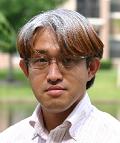 | 2 June 2008, 11.45 am at MI 03.13.10 Talk by Fumihisa Shibata, Associate Professor at the Department of Information Science and Engineering, Ritsumeikan University, Japan Fumihisa Shibata, associate professor at the Department of Information and Communication Science College of Information Science and Engineering, Ritsumeikan University, Japan will give an introduction of his laboratory and his research projects. |
| 15 May 2008, Deutsches Herzzentrum München Talk by Dr. Dorin Comaniciu, Head, Integrated Data Systems Department, SCR Dorin Comaniciu, Leiter des Integrated Data Systems Department bei Siemens Coorporate Research Princeton, NJ) wird im Rahmen der morgendlichen Fortbildungsveranstaltung der Herzchirugie einen Vortrag geben. | |
 | 26 April 2008, Berghotel Kalteck, Achslach Spring CAMPing 2008 Our CAMPing this year will be a joint seminar of the CAMP Chair together with the Royal Society/Wolfson Medical Image Computing Laboratory at Imperial College under the supervision of Professor Guang-Zhong Yang who will join us with a group of around 15 people. |
 | 24 April 2008, 2.30pm at MI 03.13.10 Cardiovascular Informatics: How to Stop a Heart Attack Before it Happens In the course of the lecture "Computer Aided Medical Procedures II" (Prof. Navab), we are honored to have an invited talk by Prof. Ioannis A. Kakadiaris (Computational Biomedicine Lab, University of Houston). |
 | 9 April 2008, 02.09.023 (12:00) Dissertation Defense: 2D-3D Registration of Vascular Images CAMP's research assistant Martin Groher is defending his dissertation. The topic of his thesis is '2D-3D Registration of Vascular Images Towards 3D-Guided Catheter Interventions'. |
| 3 April 2008, Editorial Board of Medical Image Analysis Nassir Navab has joined the Editorial Board of Medical Image Analysis. MIA is one of the two most prestigious journals in the field of medical imaging and computer aided interventions. This journal has an impact factor of 3.256. | |
 | 1 April 2008, Garching Ryu Hilla gets award for his/her extraordinary merits We're proud to announce that our young colleague Ryu Hilla will receive the CAMP Award for extraordinary social skills and his/her recent excellent results. |
 | 10 March 2008, Vienna, Austria Invited Talk at ECR 2008 Prof. Nassir Navab gave an Invited Talk at ECR2008 about the future of Image Guided Intervention. |
 | 6 March 2008, Garching Tobias Sielhorst's Dissertation Defense on 'New Methods for Medical Augmented Reality' CAMP's research assistant Tobias Sielhorst is defending his dissertation. The topic of his thesis is 'New Methods for Medical Augmented Reality'. |
 | 26 February 2008, CARS 2008 CARS is an event in which the international community in computer aided surgery and radiology meets. Despite its high rate of acceptance, the strong presence of international groups makes the event particularly interesting. CARS is also one of the only conferences including special sessions on medical workflow. This year we have two long papers in this field. We also have one long and one short accepted papers on IVUS-VH imaging. |
 | 19 February 2008, 11:00 in room MI 03.13.010 Talk by Dr. Joerg Raczkowsky, Universität Karlsruhe (TH) The talk gives an overview on the activities in medical robotics at the Institute for Process Control and Robotics (IPR) at the University of Karlsruhe (TH). The research work covers the complete work flow starting with imaging over image processing, 3D reconstruction, surgical planning, simulation to introperative techniques. To support the surgeon in the operation theatre robotics devices and systems for augmented reality are in the focus of the research. |
| 19 January 2008, Robocast Project Kick-off ROBOCAST is an international European Union supported project, which aims at developing ICT scientific methods and technologies, which focus on robot assisted keyhole neurosurgery. The Chair for Computer Aided Medical Procedures & Augmented Reality is one of the project partners contributing to the project in the areas of surgical planning, intra-operative navigation, dynamic accuracy analysis and advanced visualization during the intervention. From 18-19. January 2008 the official project Kick-off meeting took place at Politecnico di Milano, with presentations from all project partners. | |
 | 3 January 2008, New College of Medicine, University of Central Florida Invited talk at UCF Prof. Dr. Nassir Navab gives an invited talk at the lecture series of IST, the National Center for Simulation and UCF's new College of Medicine at University of Central Florida in Orlando. |
 | 12 December 2007, 16:00 in room MI 03.13.010 Talk by Tom Vercauteren, INRIA Sophia-antipolis Tom Vercauteren from INRIA Sophia-antipolis is giving an invited talk on Processing and Mosaicing of Fibered Confocal Images |
 | 7 December 2007, 11:00am in room MI 03.13.010 Talk by Prof. Daniel Rueckert, Imperial College London Prof. Daniel Rueckert from Imperial College London is giving an invited talk on Quantification of brain development during early childhood using non-rigid registration |
| 7 December 2007, Thomas Wendler wins DAAD Award 2007 We're proud to announce that Thomas Wendler won this year's DAAD award for his excellent scientific achievements and social skills in international relationships. | |
 | 26 November 2007, Businessplan wins in Berkeley Thomas Wendler and Eric Soehngen won the 1st price at the Intel-UC Berkeley Technology Challenge (IBTEC) international business-plan competition. Additional picture and information after the jump. |
| 12 November 2007, MICCAI Award 2007 goes to Wolfgang Wein Wolfgang Wein wins the MICCAI Young Scientist Award 2007 in the category Visualization and Interaction. Here is the quotation from the selection committee: This is a highly original contribution to the difficult problem of US to CT registration. In particular, the use of knowledge of simple US physics to generate an image with characteristics representative of clinical US images is highly innovative. | |
| 8 November 2007, Werner von Siemens Excellence Award 2007 Christian Wachinger and Ben Glocker won this year's Werner von Siemens Excellence Award. | |
 | 7 November 2007, Paris, Cité des Sciences de La Villette Price for the Best French Ph.D. thesis of 2005 & 2006 in Applied and Innovative Research We are very happy to announce that Selim Benhimane got the Price for the Best French Ph.D. Thesis of the last 2 years (2005-2006) in Applied and Innovative Research from the ASTI. The ceremony was in Paris (7th of November 2007) at Cité des Sciences de La Villette. |
 | 29 October 2007, A Multi-View Opto-Xray Imaging System As an extension the camera augmented mobile c-arm system by Navab et al. 1999 we developed a multi-view system which offers 3D navigation during trauma surgery and orthopedic procedures. We use an additional video camera in an orthogonal arrangement to the first video camera and a minimum of two X-ray images. |
 | 16 October 2007, MI 03.13.010, 13:00 Talk by Prof. Kensaku Mori Prof. Kensaku Mori from Nagoya University, Japan, is is giving an invited talk on Navigation-based intelligent computer aided diagnosis and surgery - from viewpoint of virtual endoscopy |
 | 15 October 2007, IFL Lab, Klinikum r.d. Isar Dissertation Celebration of Marco Feuerstein and Wolfgang Wein CAMP is proud to present its first PhD graduates. After the defense talks ('Augmented Reality in Laparoscopic Surgery - New Concepts for Intraoperative Multimodal Imaging' & 'Multimodal Integration of Medical Ultrasound for Treatment Planning and Interventions') we will have a party in the IFL Lab on Oct 15, 5pm. |
 | 15 October 2007, MI 03.13.010, 14:00 Marco Feuerstein's Dissertation Defense on 'Augmented Reality in Laparoscopic Surgery - New Concepts for Intraoperative Multimodal Imaging' CAMP's research assistant, Marco Feuerstein is defending his dissertation. The topic of his thesis is 'Augmented Reality in Laparoscopic Surgery - New Concepts for Intraoperative Multimodal Imaging'. |
 | 12 October 2007, MI 03.13.010, 11.00am Talk of Prof. David Hawkes on Model Guided Therapy Prof. David Hawkes is the Director of the Centre for Medical Image Computing (CMIC) at University College London. His talk on Model Guided Therapy will give an overview of his current research interests, including image matching, data fusion, visualization, shape representation, surface geometry, and modelling tissue deformation. |
 | 12 October 2007, MI 03.13.010, 15:30 Wolfgang Wein's Dissertation Defense on 'Multimodal Integration of Medical Ultrasound for Treatment Planning and Interventions' CAMP's former research assistant, Wolfgang Wein, now working for Siemens Corporate Research, is defending his dissertation. The topic of his thesis is 'Multimodal Integration of Medical Ultrasound for Treatment Planning and Interventions'. |
 | 5 October 2007, Sarntal, Italy CAMP tutoring a course at Ferienakademie From Sep 23 to Oct 5, we tutored a group of 14 students during Ferienakademie in Sarntal, Italy. |
| 27 September 2007, Sueddeutsche Zeitung SZ Article about CAMP Research at Klinikum Innenstadt SZ Article about CAMP Research at Klinikum Innenstadt addressing the projects Camera Augmented Mobile C-arm, Improving Depth Perception and Perception of Layout for In-Situ Visualization in Medical Augmented Reality and 3D user interfaces for medical interventions. Teams vom Garchinger TU-Campus forschen in Münchner Kliniken Der Trick mit dem Röntgenblick Mit Augmented-Reality-Systemen können Ärzte ins Innere ihrer Patienten sehen | |
 | 21 September 2007, MI 01.06.020, 14:00 Martin Bauer's Dissertation Defense on 'accuracy analysis and error propagation for augmented reality' CAMPAR's former research assistant, Martin Bauer from the FAR research team is defending his dissertation. The topic of his thesis is 'accuracy analysis in optical tracking systems and error propagation for augmented reality'. |
 | 17 September 2007, CAMP Scholarship CAMP is providing a scholarship for a two years doctorate position in Spain for extremely talented students. |
 | 4 September 2007, Hörsaal 2 MI-Gebäude Talk by Dr. Ezio Malis Dr. Ezio Malis from INRIA Sophia Antipolis, France is giving an invited talk on The ESM algorithm for deformable object tracking and varying illumination conditions |
 | 23 August 2007, Contest: Medical Imaging as Art CAMP is announcing a Medical Imaging as Art (MIA) contest. We are now accepting submissions. |
 | 8 August 2007, Narvis Lab; Klinikum Innenstadt; Room C2.06; 18:00 Grand Opening of the New Narvis Lab and Good-Bye Party for Christopher Stapleton We'd like to invite you to visit our new lab at Klinikum Innnenstadt on the 8th of August at 6 p.m.. According to the design ideas and suggestions of Christopher Stapleton we developed a creative and collaborative platform for further research projects in the medical field in close collaboration with our medical partners. The new lab is located right next to the ORs and provides space for all kind of activity. It was designed to serve as a lecture room, a show room, a workshop but also as a conference room. |
 | 31 July 2007, MI 03.13.010; 16:00 Presentations of the Final Projects: Medical Computer Games We would like to invite everyone to come to the seminar room MI 03.13.010 at 16:00. 4 Teams of the course Projekt Systementwicklung Bildverarbeitung und Computer-Graphik mit C++ will present their final projects. Supported by Sandro Michael Heining (M.D.) and Christopher Stapleton the students developed different game concepts with medical topics. |
| 24 July 2007, 14:30; Garching, 03.13.008 TUM goes Hollywood --> Video Presentations: 3D Computer Vision for Special Effects CAMP proudly presents the final movies of the lab course 3D Computer Vision and special effects. This year we will have an even bigger variety of special effects than last year. Get excited by short movies augmented by 3D computer vision effects such as Mosaicking, 3D reconstruction, Terminator effect, Matrix effect, 3D Tracking, etc... Consumption of Coke and Popcorn is permitted. The final movies can be found on the homepage of the lab course. | |
 | 18 July 2007, 1pm, MI 03.13.010, Garching Transdisciplinary Research This presentation will be on conducting transdisciplinary research collaboration to enhance core technology that needs to transfer across applications. In reaching a state of constant innovation, there needs to be a more experimentation on innovating the innovation process itself to encourage more diverse thinking to reach more novel insight more effectively. Discussion will be on ways to encourage the collaboration of diverse fields of study here at CAMP. |
| 10 July 2007, Historical abbey Rolduc in Kerkrade, Netherlands Francois Erbsmann Prize We are proud to announce that Ben Glocker won this year’s Francois Erbsmann Prize at the Conference on Information Processing in Medical Imaging 2007. | |
 | 9 July 2007, Lindau Meeting of Nobel Laureates in Lindau From 1st to 6th of July 2007, 18 Nobel Laureates in Physiology or Medicine were meeting over 500 of the worlds most talented young scientists of tomorrow. The participants were discussing current scientific issues during the course of lectures, seminar discussions and numerous personal encounters. Moritz Blume a doctorate candidate at CAMP was selected and got the exceptional opportunity of participating in this event. |
| 6 July 2007, NARVIS lab, Klinikum Innenstadt 1 p.m. Computer Assisted Intervetions & Medical Robotics Research at Georgetown University Medical Center - Talk by Kevin Cleary Kevin Cleary, research associate professor and deputy director of Georgetown University Medical Center, will give a talk about the latest research on physician-assist systems for precision placement and manipulation of medical instruments during minimally invasive procedures. The characterization of respiratory motion and compensation for respiratory motion are also research thrusts. | |
 | 4 July 2007, 14 Papers accepted at MICCAI 2007 Once again hard and intelligent collaborative work has been paid off. The last year success was remarkable and this year we have gone even further. We have 14 papers accepted at MICCAI 2007! MICCAI is based on full paper submissions and double blind review process in which each paper receives at least 6 peer reviews. MICCAI 2007 received 637 papers submissions. Only 237 got accepted (35% acceptance rate). |
 | 28 June 2007, ICC, Berlin, Germany CAMP @ CARS Conference CAMP is presenting at CARS 2007, Computer Assisted Radiology and Surgery, 21st International Congress and Exhibition, June 27 - 30, 2007 in Berlin, Germany. |
 | 25 June 2007, Klinikum Innenstadt - Seminar Room Visit of a research group of ETH Zürich A group of PhD students form the Research in Medical Imaging group of Prof. Gábor Székely of the Computer Vision Laboratoy of ETH Zürich are visiting CAMP. There will be presentations on various research issues. |
 | 22 May 2007, MI 03.13.010 Mixing Realities and Making Memories - Talk by Christopher Stapleton We'd like to introduce Christopher Stapleton, affiliate professor of the University of Central Florida’s Institute for Simulation and Training, who will join us during his sabbatical year. His talk will be at 4 p.m. in our seminar room MI 03.13.010. |
 | 14 May 2007, New Guest Professor: Christopher Stapleton We're proud to announce that Christopher Stapleton joins the CAMP chair as a Guest Professor for 3 months. |
| 8 May 2007, Handelsblatt article about our medical AR activities An article Virtueller Blick in den Körper about our medical AR activities was published in the Handelsblatt on May 8th 2007. Read the full article at the Handelsblatt homepage. | |
 | 4 April 2007, MED & LAB Engineering Magazine Article An article about Advanced visualization in the operating room; published in the MED & LAB Engineering Magazine. The full text can be found here. |
| 30 March 2007, Deutsches Ärzteblatt Article about our medical AR activities in collaboration with Klinikum Innenstadt An article Erweiterte Realität: Verschmelzung zweier Welten about our medical AR activities was published in Deutsches Ärzteblatt 104, Ausgabe 13; Seite A-840 by Merten, Martina. Read the full article at the DÄ homepage (PDF). | |
 | 28 March 2007, Pavillon @ Klinikum r.d. Isar Workshop MBI (DKFZ) & CAMP (TUM) A meeting of the MBI group of the DKFZ Heidelberg with our CAMP group. Special focus will be on a common software platform and joint projects in the future. |
 | 9 March 2007, Erlangen Innovationspreis 2007 der AREVA NP GmbH We're proud to announce that Pierre Georgel won this years Innovation Award from the AREVA NP GmbH for his Development of an Augmented Reality System for Descrepency Check between built Plants against their CAD Model. |
 | 6 February 2007, 00.13.009A; 03.13.010 Talk by Adrien Bartoli Dr. Adrien Bartoli from the LASMEA laboratory in Clermont-Ferrand, France is is giving an invited talk on Feature-Driven Direct Non-Rigid Image Registration. |
 | 1 February 2007, 00.13.009A; 03.13.010 Talks by Dr. Vincent Lepetit Dr. Vincent Lepetit from the Computer Vision Laboratory of the Ecole Polytechnique Federale de Lausanne (EPFL) is giving two talks on Real-Time 3D Tracking in Monocular Sequences and Keypoint recognition in ten lines of code |
 | 31 January 2007, Klinikum Innenstadt, Seminarraum 1 Talk by Mikael Rousson - Recent Developments in Level Set Segmentation Since its introduction as a means of front propagation and its first application to edge-based segmentation in the early 90's, the level set method has become increasingly popular as a general framework for image segmentation. In this talk, I will present several contributions to this framework. |
 | 30 January 2007, MI 03.13.010 Talk by Prof. Gabor Szekely Prof. Gabor Szekely from the Computer Vision Laboratory, ETH Zürich, is giving a talk on Virtual and Augmented Reality Based Simulation for Surgical Skill Training. |
 | 30 January 2007, MI 01.07.023 Talk by Prof. Luc Soler Prof. Luc Soler from the Department of Digestive and Endocrine Surgery, University Hospital, Strasbourg, is giving a talk on Virtual Reality and Robotics for Detection and Treatment of Abdominal Cancer in animal preclinical studies and clinical use. |
 | 24 January 2007, Pavillon, Klinikum r.d. Isar Talk by Prof. Dr. Karl Heinz Höhne Prof. Dr. Karl Heinz Höhne will give a talk on "Simulation materialabtragender chirurgischer Eingriffe". |
 | 23 January 2007, MAS Exchange Projects The Chair for Computer Aided Medical Procedures and the labaratory Mathématiques Appliquées aux Systèmes at Ecole Centrale Paris have a student exchange program. |
 | 15 December 2006, Klinikum Innenstadt CAMPAR Christmas Party 2006 Like in the years before, we'll once again organise a christmas party. This time, it will take place in the Klinikum Innenstadt. More informations can be found in the newspost. Don't forget to invite and sign up our medical and industrial partners as well as other people involved with the CAMP chair. |
 | 14 December 2006, MI 03.13.010 Talk by Prof. Franjo Pernuš, PhD In the course of the lecture "Computer Aided Medical Procedures" (Prof. Navab), we'll have one invited talk by Prof. Franjo Pernuš, PhD. |
 | 8 December 2006, VDI article about Tobias Lasser, Darko Zikic and Christoph Bichlmeier. Article about the winners of the Siemens Excellence Award 2006 of TU München on the VDI page. |
 | 22 November 2006, Nassir Navab elected as new member of the MICCAI board We are proud to announce that Nassir Navab will be a member of the MICCAI board. You can find detailled information in this newspost. |
 | 13 November 2006, Two talks by Prof. Gabor Fichtinger, PhD and Chenyang Xu, PhD In the course of the lecture "Computer Aided Medical Procedures" (Prof. Navab), we'll have two invited talks by Prof. Gabor Fichtinger, PhD and Chenyang Xu, PhD. |
| 7 November 2006, SZ Article about Tobias Lasser An article from the Süddeutsche Zeitung about Tobias Lasser, who studied one year at Harvard, Boston and is now doing his PhD at the CAMP chair - TUM. | |
| 31 October 2006, Werner von Siemens Excellence Award 2006 Darko Zikic, Tobias Lasser and Christoph Bichlmeier, three students of the CAMP chair, won this year's Werner von Siemens Excellence Award. | |
| 31 October 2006, Santa Barbara, CA, USA Honorable Mention Student Paper Award ISMAR 2006 Daniel Pustka, Manuel Huber and Martin Bauer won this year's Honorable Mention Student Paper Award at the ISMAR 2006 conference. | |
 | 30 October 2006, Garching Two best papers Two papers, which were written by Marcus Tönnis in conjunction with the Ergonomic researchers from the Faculty for Mechanical Engineering won best paper awards. |
 | 24 October 2006, Garching Epic Soccer Match: CAMP vs. RBG Forget about the Worldcup 2006. That was just the warm-up. The real event comes now! The Chair for Computer Aided Medical Procedures meets the Rechnerbetriebsgruppe in an epic soccer match. Who will prevail and who will be the one left crying... |
 | 23 October 2006, Navigated β-Probe The MICCAI 2006 video of Thomas Wendler's paper about a navigated β-Probe |
| 22 October 2006, Santa Barbara, CA, USA CAMP&AR at ISMAR 2006 This year we have 3 paper presentations and a demo presentation at the 5th IEEE and ACM International Symposium on Mixed and Augmented Reality. | |
 | 15 October 2006, Garching Open Day 2006 of the TUM Television broadcast about the Open Day at TUM features research from CAMP&AR. |
 | 7 October 2006, Copenhagen, Denmark CAMP at MICCAI 10 poster presentations, a live demo and the AMI-ARCS workshop |
 | 6 October 2006, Copenhagen, Denmark AMI-ARCS Workshop 2006 AMI-ARCS 2006, a one day satellite workshop of MICCAI 2006, will serve as a forum for researchers involved in all aspects of Augmented environments for Medical Imaging including Augmented Reality in Computer-aided Surgery. |
 | 4 October 2006, new PhD student at CAMP: Stefanie Kettner We are happy to introduce a new member at the CAMP chair: Stefanie Kettner. She will join the Chair for Computer Aided Medical Procedures as a Ph.D. student and will work on a Medical-Aided Surgery project in coorporation with Deutsches Herzzentrum München. |
 | 21 September 2006, Sport- und Studienheim Kleinwalsertal Summer CAMPing 2006 The next CAMPing weekend takes place on Sept. 21st to Sept. 23rd 2006. |
 | 8 September 2006, Munich 1st Iranian-German Workshop on Medical Engineering The first Iranian-German workshop on medical engineering is designed to be a collaborative platform for intense exchange of scientific and cultural interests. The subjects of the workshop will cover various fields of engineering in medicine including medical image segmentation and registration, workflow and healthcare, robotics, and simulations. |
 | 3 August 2006, Munich, Germany CAMP presentations of Easy Visualization In-situ and Camera Augmented Mobile Carm (CamC) at 5th World Congress on Biomechanics CAMP presentations of Easy Visualization Insito and Camera Augmented Mobile C-Arm at the 5th World Congress on Biomechanics (Track 8: Surgical Navigation) by Joerg Traub |
 | 28 July 2006, 12:00 Uhr, FMI 00.13.009A Prof. Dr. Dieter Schmalstieg: Interactive Context-Driven Visualization Tools for Augmented Reality TUM Informatik-Kolloquium |
 | 27 July 2006, 17:30 Uhr, FMI 00.08.038 Jun. Prof. Dr. Oliver Bimber: No Screens Required! TUM Informatik-Kolloquium |
 | 25 July 2006, Final Video Assignments of 3D Computer Vision Lab course online. Please see at http://campar.in.tum.de/Chair/TeachingSs06CVLabCOurse -> Final Video Assignment and have fun. |
 | 25 July 2006, BR-alpha 18:00 TV Report about the Computer Science Studies Bayern Alpha has once a month a reportage called Alpha Campus. This magazine is mainly about the current research and teaching at the Bavarian universities. The July edition deals with the computer science studies at TUM and LMU. For that, the Bayern Alpha team recorded in the CAMPAR labs. |
 | 18 July 2006, Machines will never be able to replace us .. says Prof. Gudrun Klinker at the Munich Scientific Film Festival (Wissenschafts-Filmfest) in an interview with the newspaper Münchner Merkur. |
 | 9 June 2006, 10:00 to 12:00 in the room MI 03.13.010 Computer Vision Workshop Computer Vision Workshop with the talks from Dipl. Inf. Andreas Hofhauser, Ph.D. Giorgio Panin, Dipl. Inf. Wolfgang Sepp and Dr.-Ing. Didier Stricker. |
 | 2 June 2006, 10:00 to 12:00 in the room MI 01.07.014 Computer Vision Workshop Computer Vision Workshop with the talks from Irfan Essa, Vincent Lepetit, Matthias Grundmann and Andreas Hofhauser. |
 | 1 May 2006, Kick-off: The Avicenna Roentgen Collaboration The Avicenna Roentgen Collaboration is a DAAD supported collaboration program between universities in Teheran and the Chair for Computer Aided Medical Procedures and Augmented Reality. It includes extensive exchange programs and workshops in medical engineering and augmented reality. |
